

Beginning the act of play in my practice using found objects to explore colour.
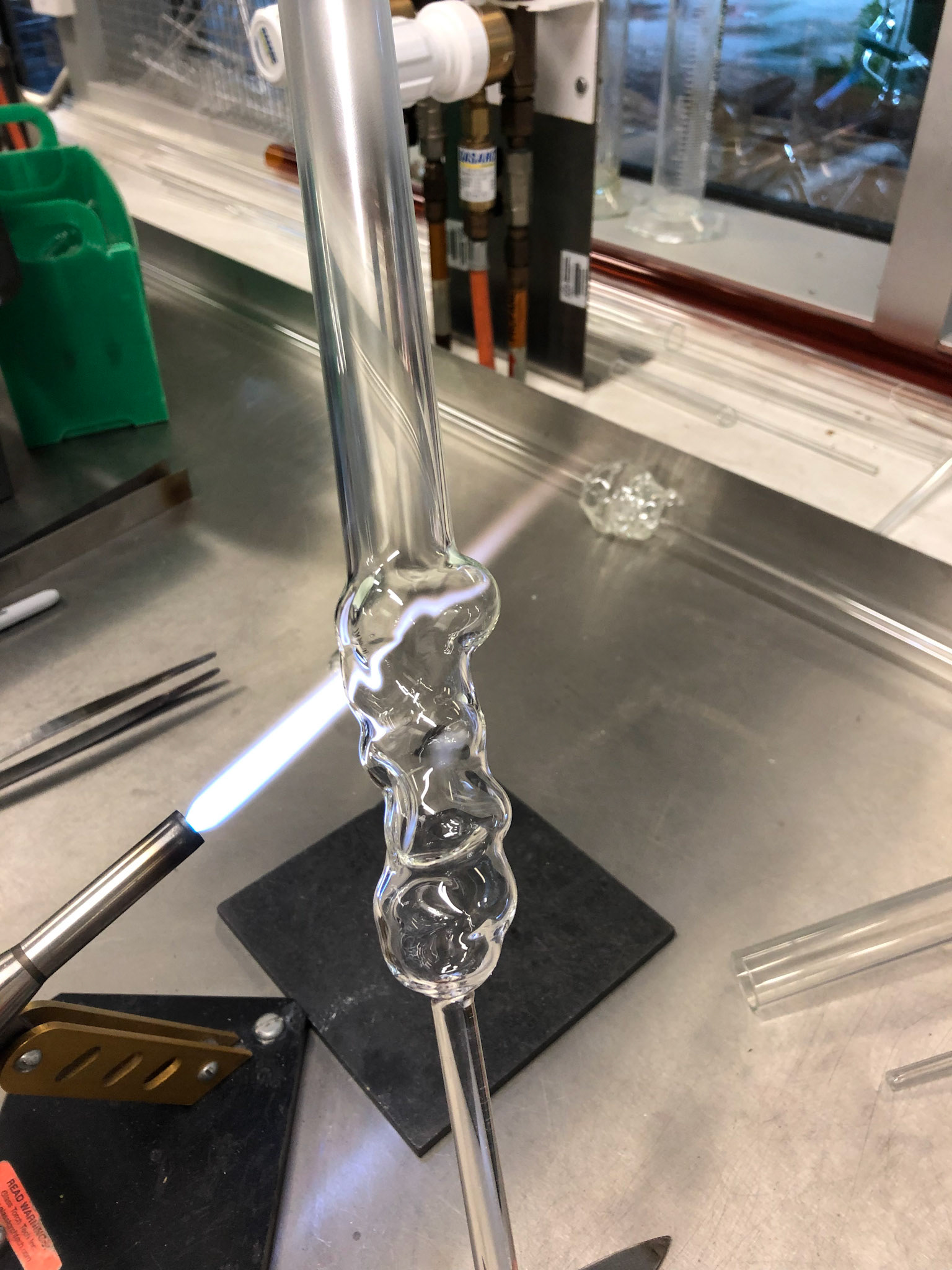

Making in response to writing:
“When art becomes self-conscious, that is, conscious of its own grace, it is apt to lose something of its eternal child-like innocence” - J. Huizinga
This idea of an object being outwardly ‘self-conscious’ because it’s characteristics have been planned out too meticulously and over-thought is something I want to reject from my making. For these lamp worked pieces, I allowed the collaboration between the maker and the material to be purely in the body, not allowing myself to consider what the end result may be.
Writing in response to making:
I look at the tube of glass, consistent in every way. My only thought is to change this quality of the borosilicate glass tube. I turn on the lamp working equipment and begin to warm up the end of the tube and marver it on the piece of graphite that lies below until the glass meets at the end. I watch as I move the glass around in the flame until I see parts glowing red. My hands slowing start warming up with the residual heat from the glass. As soon as I notice the colour change I blow into the end, forcing the straight sides of the tube to distort and balloon. I move the piece around in the flame again, turning it and bringing it in and out of the flame with no particular technique, sometimes inhaling instead of exhaling which makes the glass concave in on itself. I continue to do this until the glass has changed characteristics completely. Forcing myself to not think about the outcome before I started making was interesting because the result became a surprise, it became about thinking through making which resulted in more interesting end piece that wasn’t forced into becoming something specific.
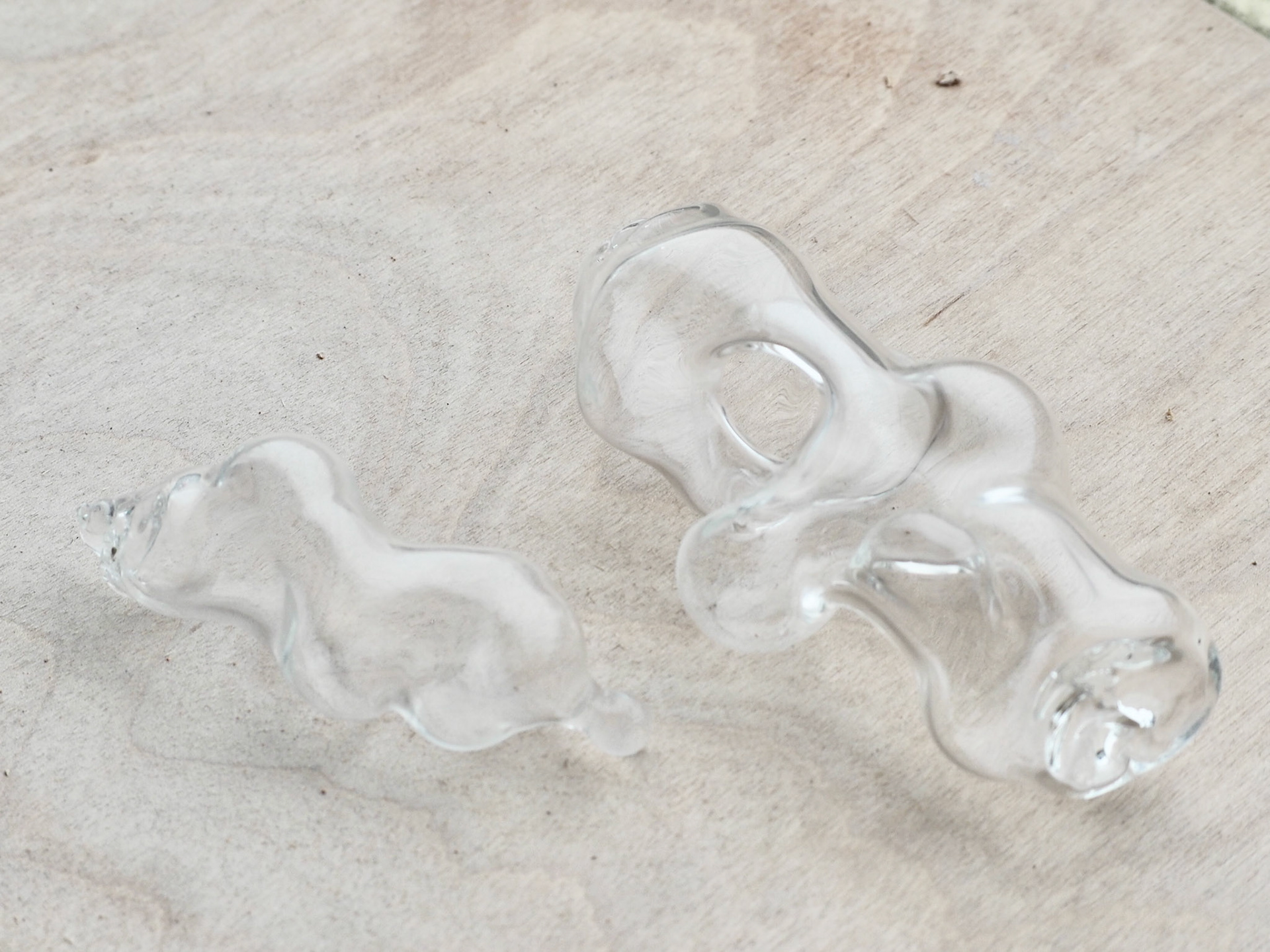
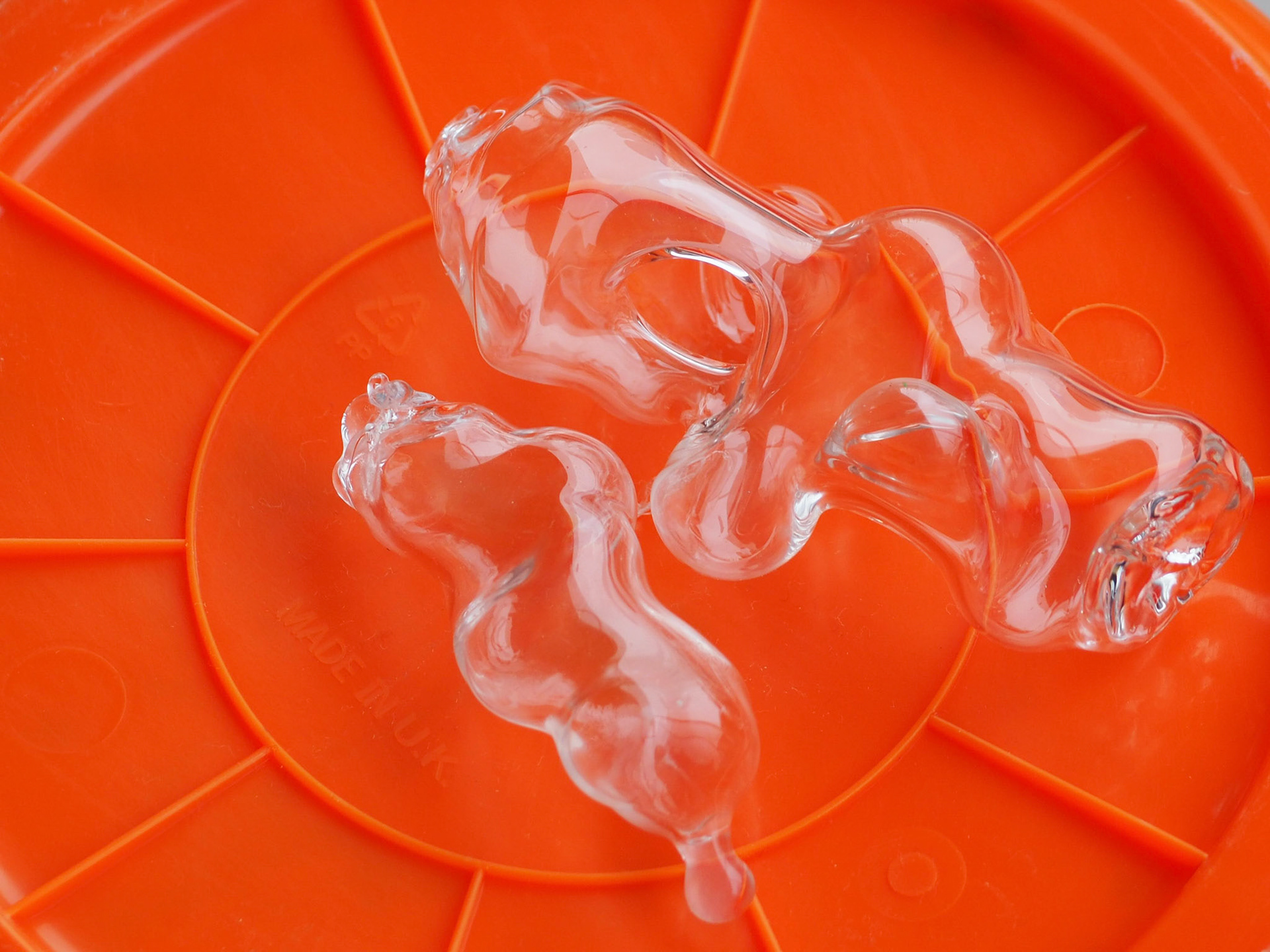

Using found objects to explore the importance of colour in relation to my practice. The undulations and movement in the glass is highlighted on a coloured background compared to a more plain one.
Using piping bags as an instrument for play. I like how these tests look edible, they definitely provoke a kind of nostalgia for me.
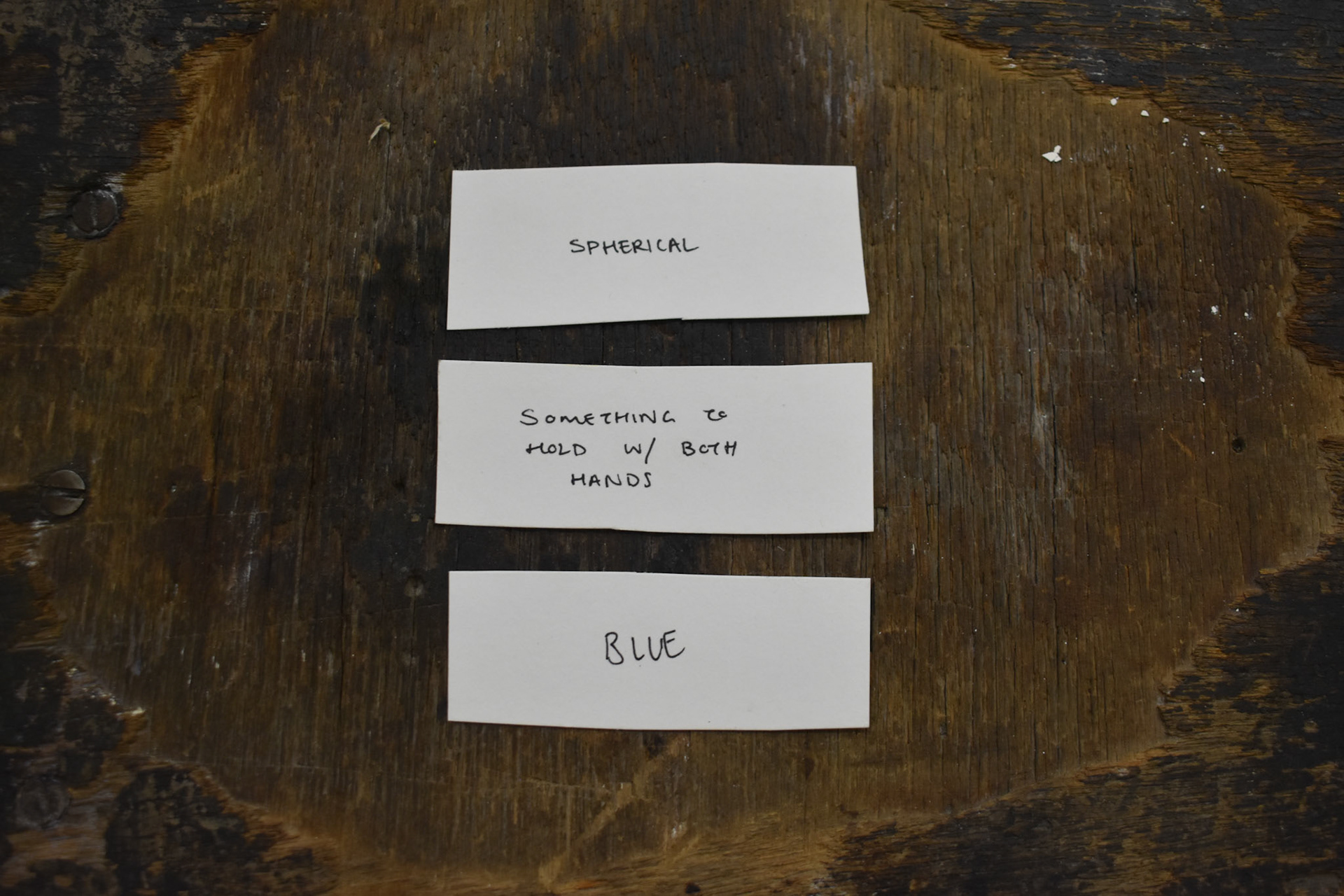
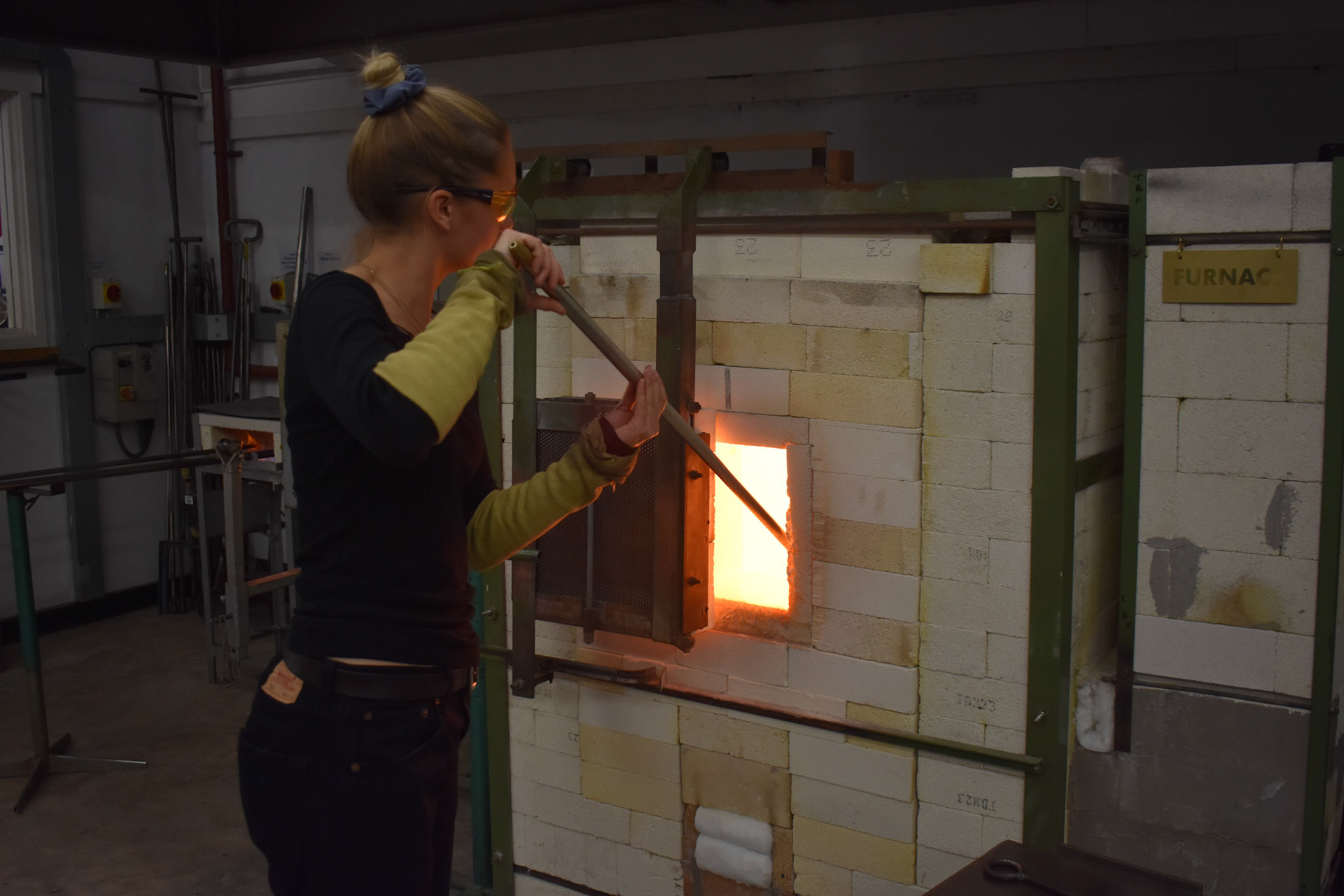
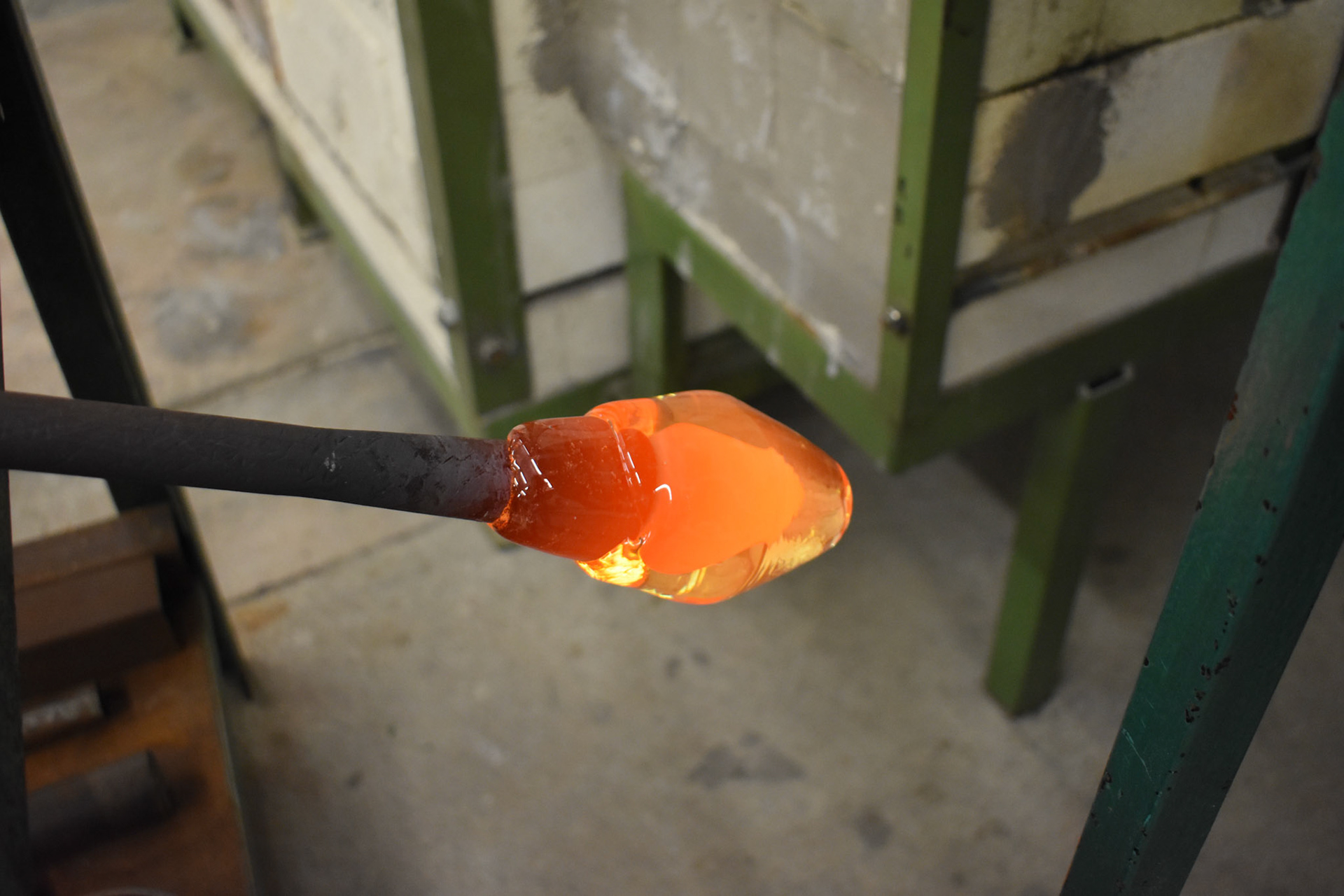

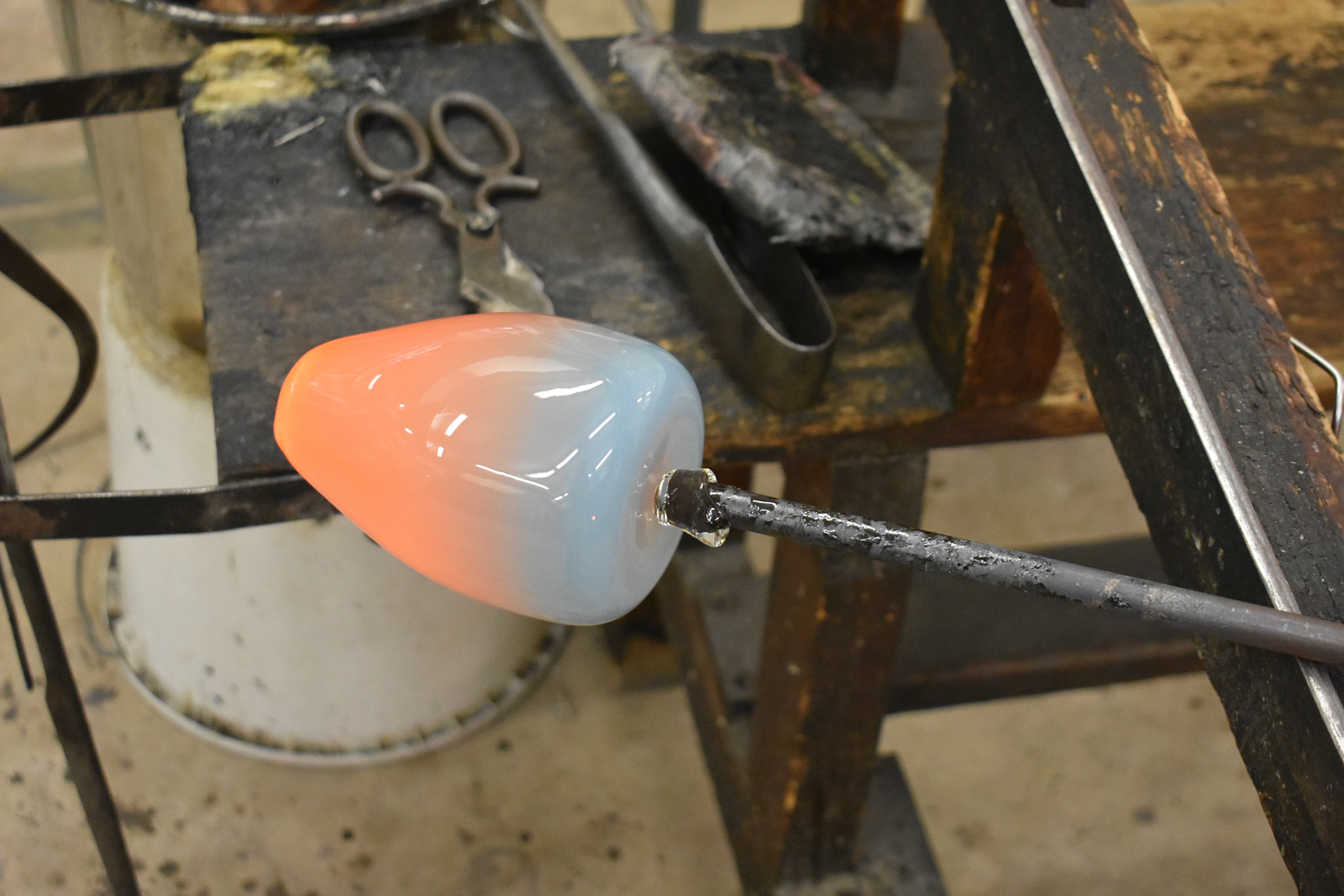

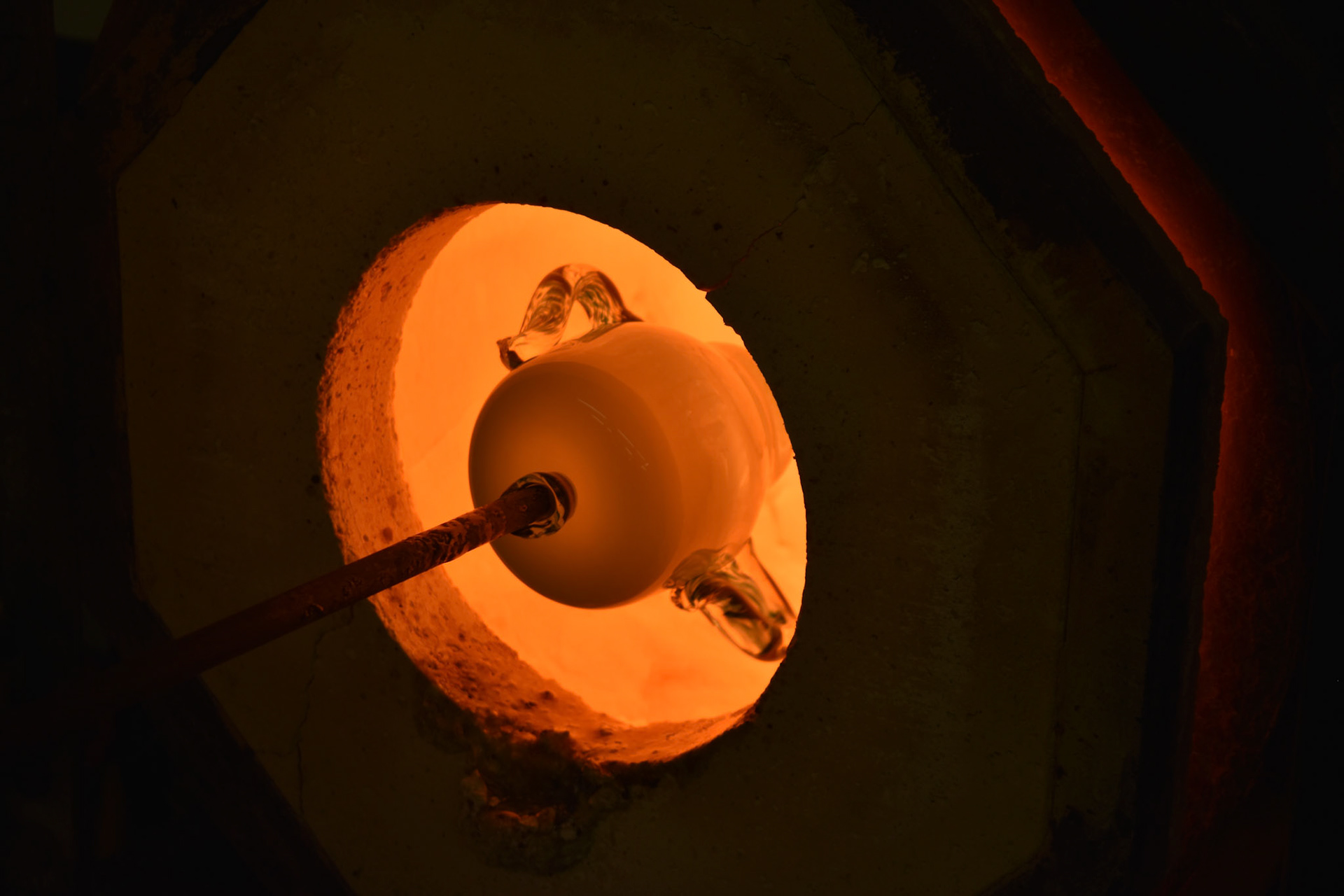
Bringing play into the hotshop
Once glass was open again I started to think of ways I could play more literally in the hotshop, I was researching spontaneous and intuitive making and came up with a game where the colour, form and characteristics were decided for me - at random. This was an interesting way to work which encouraged thinking through making but I found not being able to have control of these decisions a little frustrating. I discovered that working this way in the hot shop playing in the same carefree way that I was in ceramics. I think this is because glass blowing is a skill I'd like to master whereas in ceramics I don't put pressure on myself for anything to be technically perfect. This made me consider how I can balance learning and mastering a craft with making playful objects.

On reflection, the game that I made could have been improved by someone else writing the cards instead of me, this would have increased the spontaneity of the game. I like that these pieces have character but I want to refine my glassblowing skills.
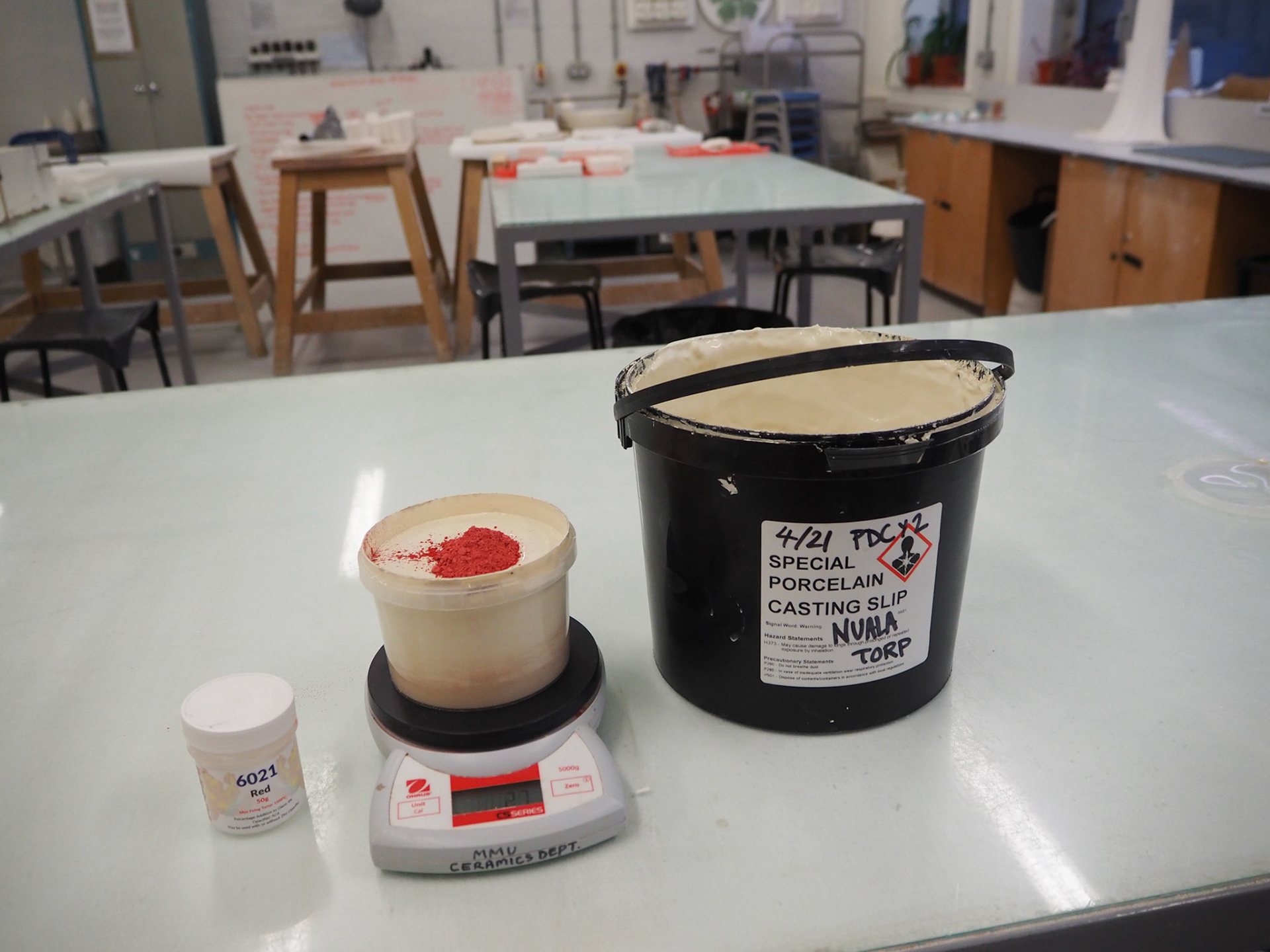
Putting colour into slip as a way to make colour part of the process rather than a final addition.


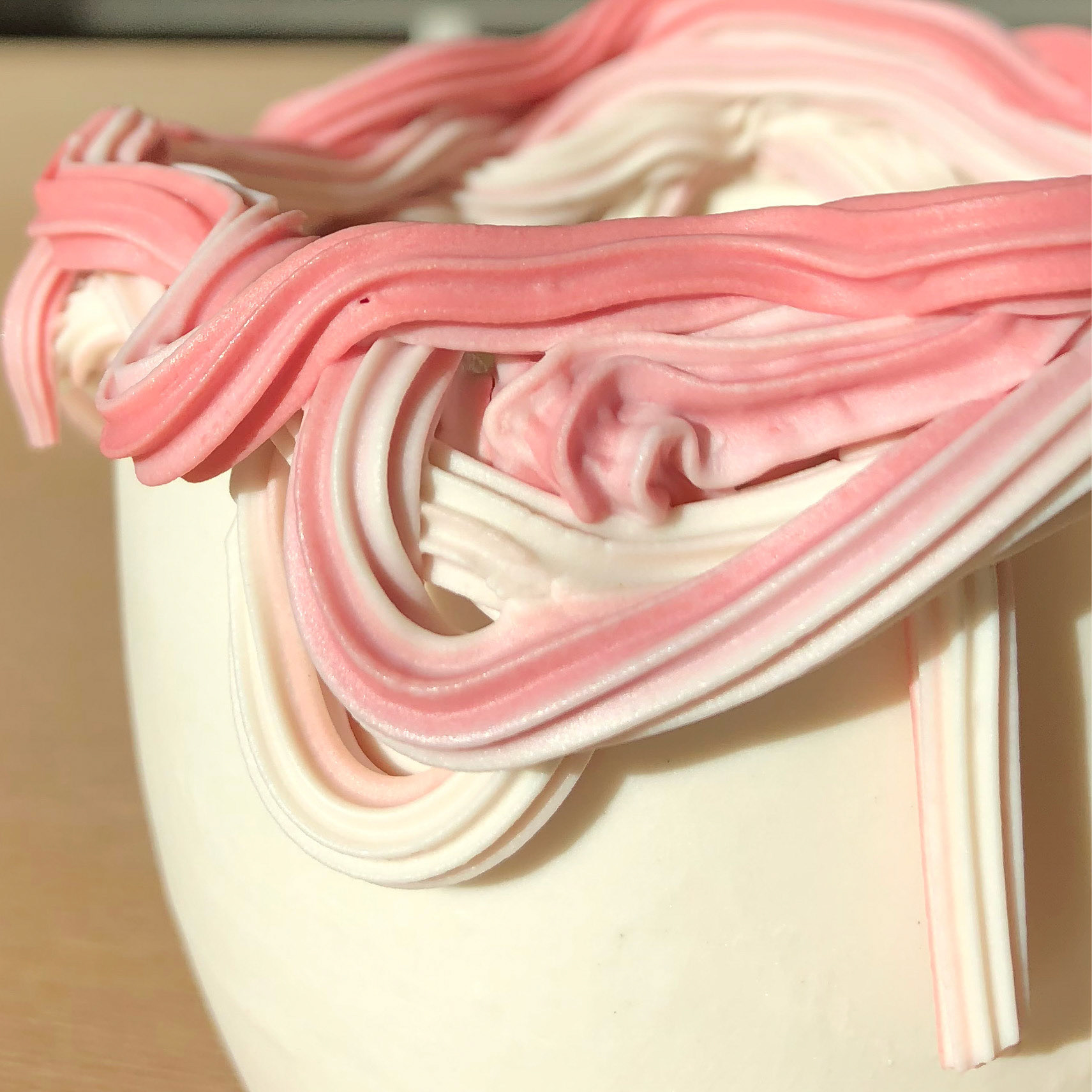

I thought a way of balancing order and chaos could be to make something technically perfect - which is why I chose to slip cast the form above. I then used the piping bag as an instrument for play in order to add some chaos to an otherwise perfect cup. I chose to use porcelain because I wanted the cup form to be delicate and light. This object explores the idea of a dialogue between the maker and the material, I found myself responding to the way the porcelain reacts with gravity and exaggerating these movements.
Here I used a red stain to colour the porcelain, I used 4% to get this pink colour and I like the gradient I managed to achieve, it adds to the perceived edibility of the object.

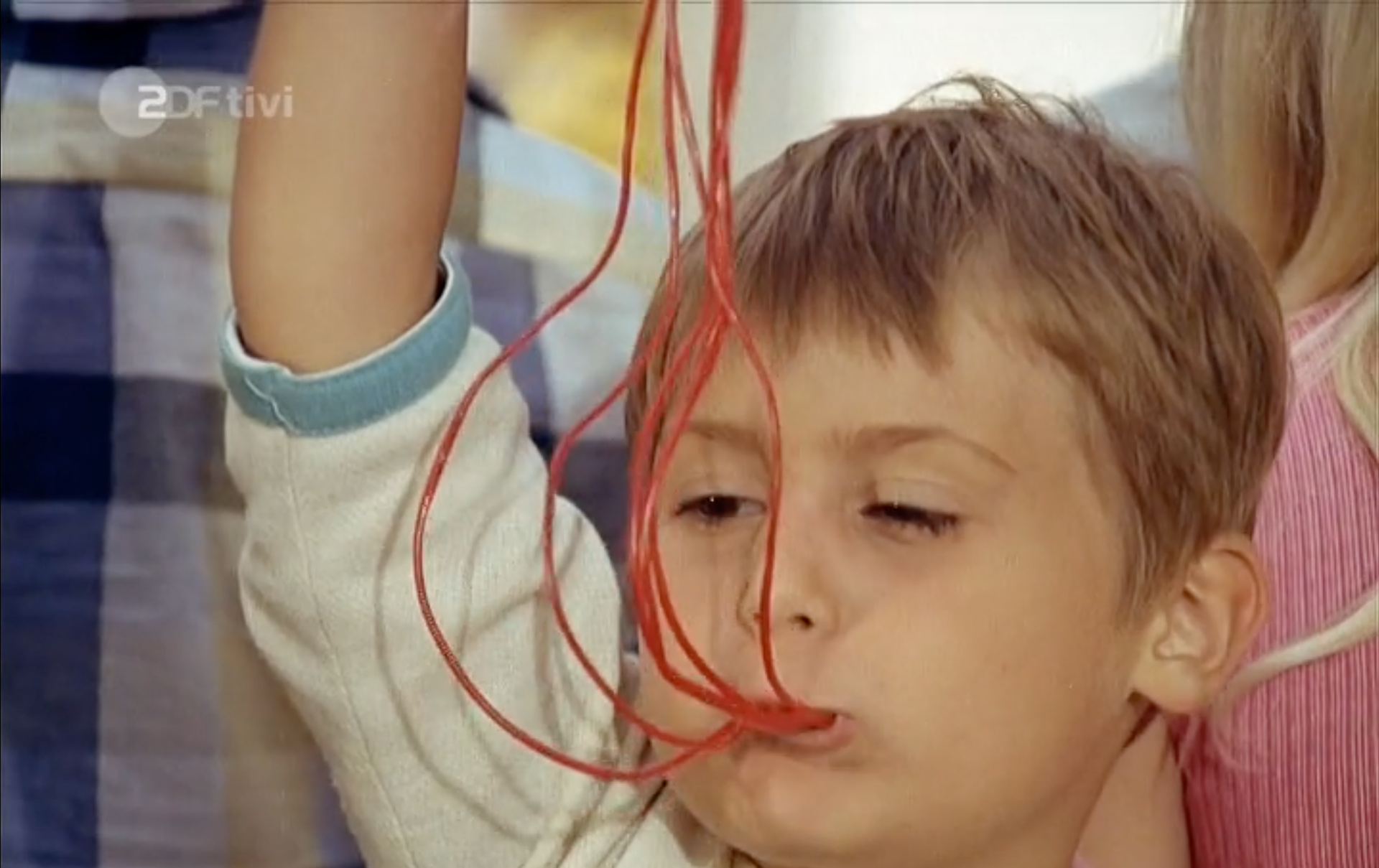
I made this piece in the same way, this one was inspired by a scene in Pippi Longstocking, screenshot above.
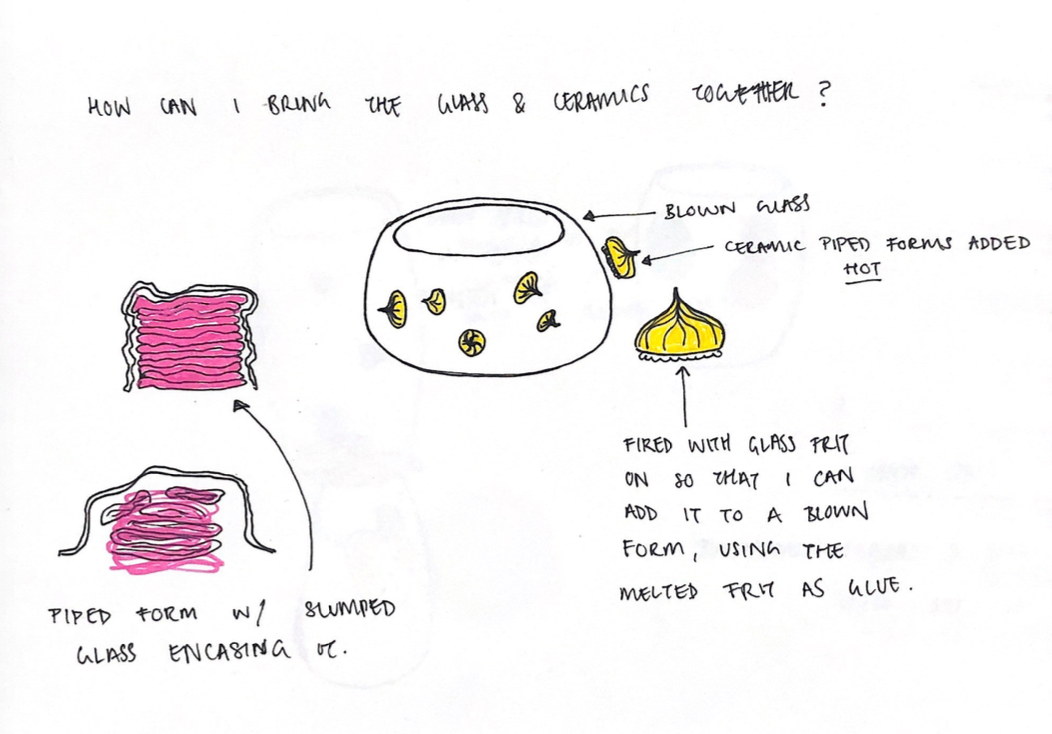
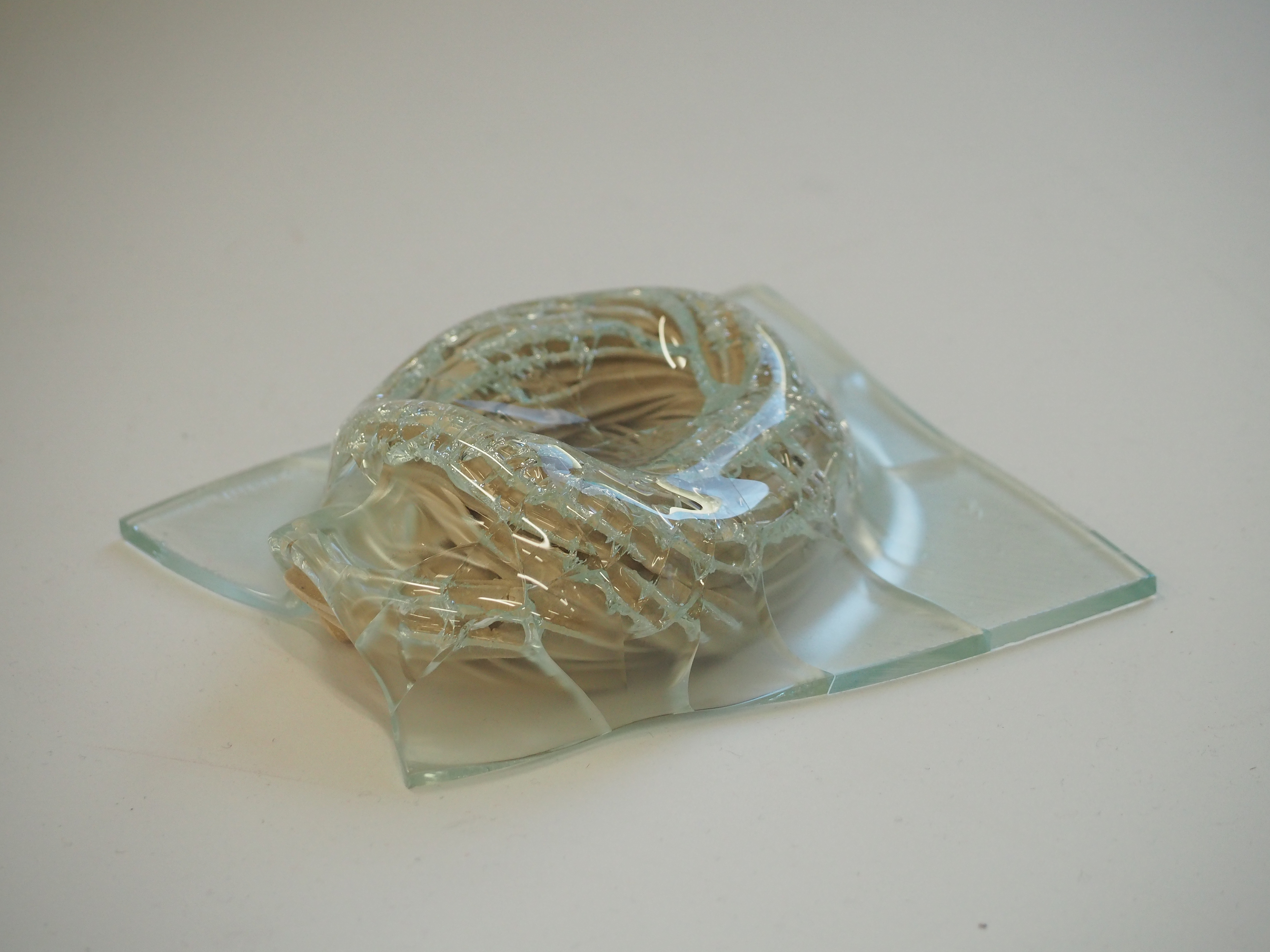
Beginning to think about how to combine my glass and ceramic practices.
Up until this point, my glass and ceramic work has felt very separate, they explore the same notions in slightly different ways and I wanted to begin to combine the two. I started this by melting glass onto a ceramic test in the kiln, I thought this might encase the ceramic piece in glass and create a veil over the top, which I thought might act turn the ceramic piece into a useable vase. The glass instead melted to the form of the ceramic piece and when the ceramic piece shrunk due to the heat it shattered.
On reflection, the ceramic form I used was only bisque fired, this must have contributed towards the shrinkage in the glass kiln which lead to the shattering of the glass, if I try this again, I will use fully fired porcelain and see if it has the same reaction.
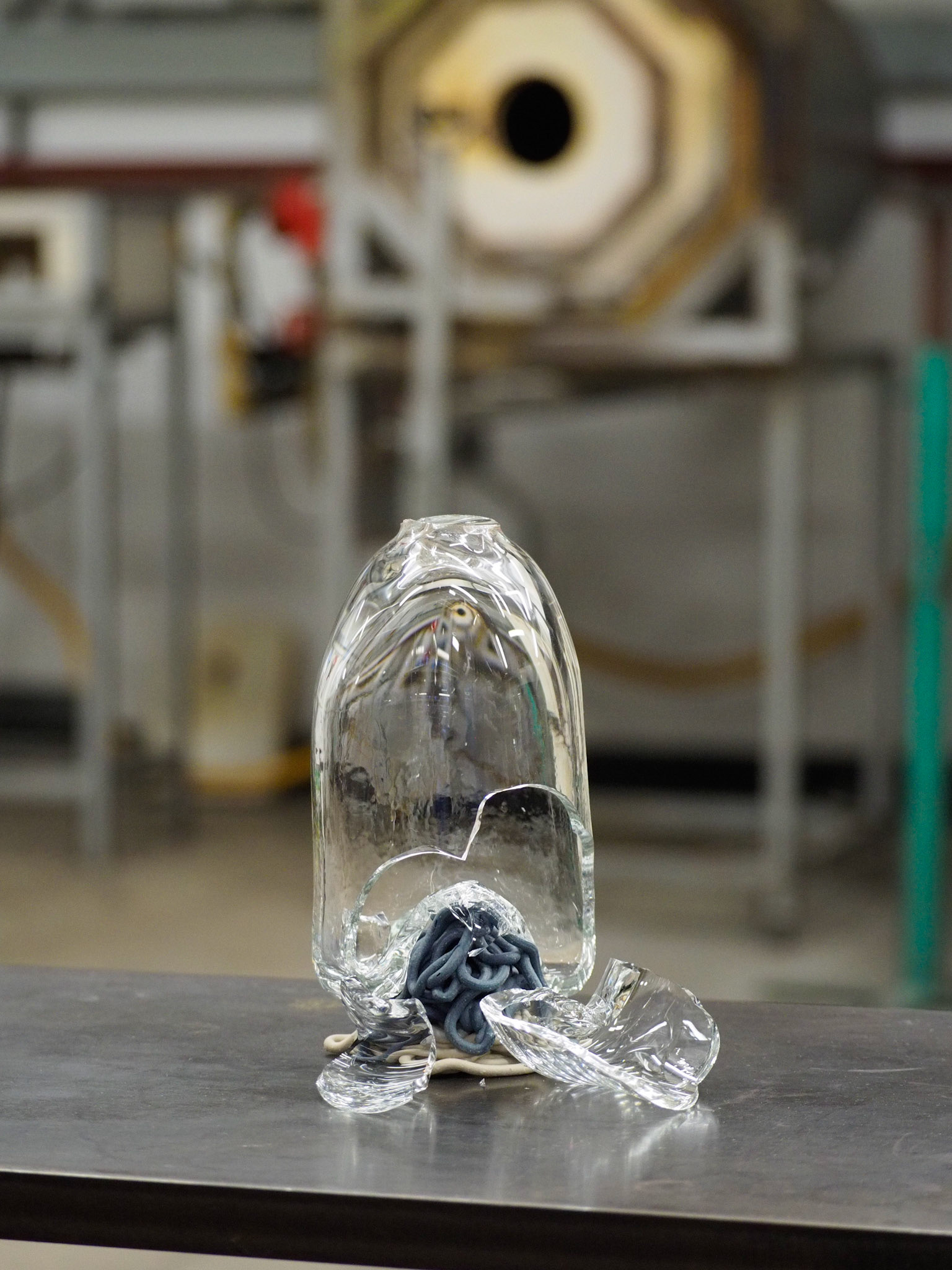
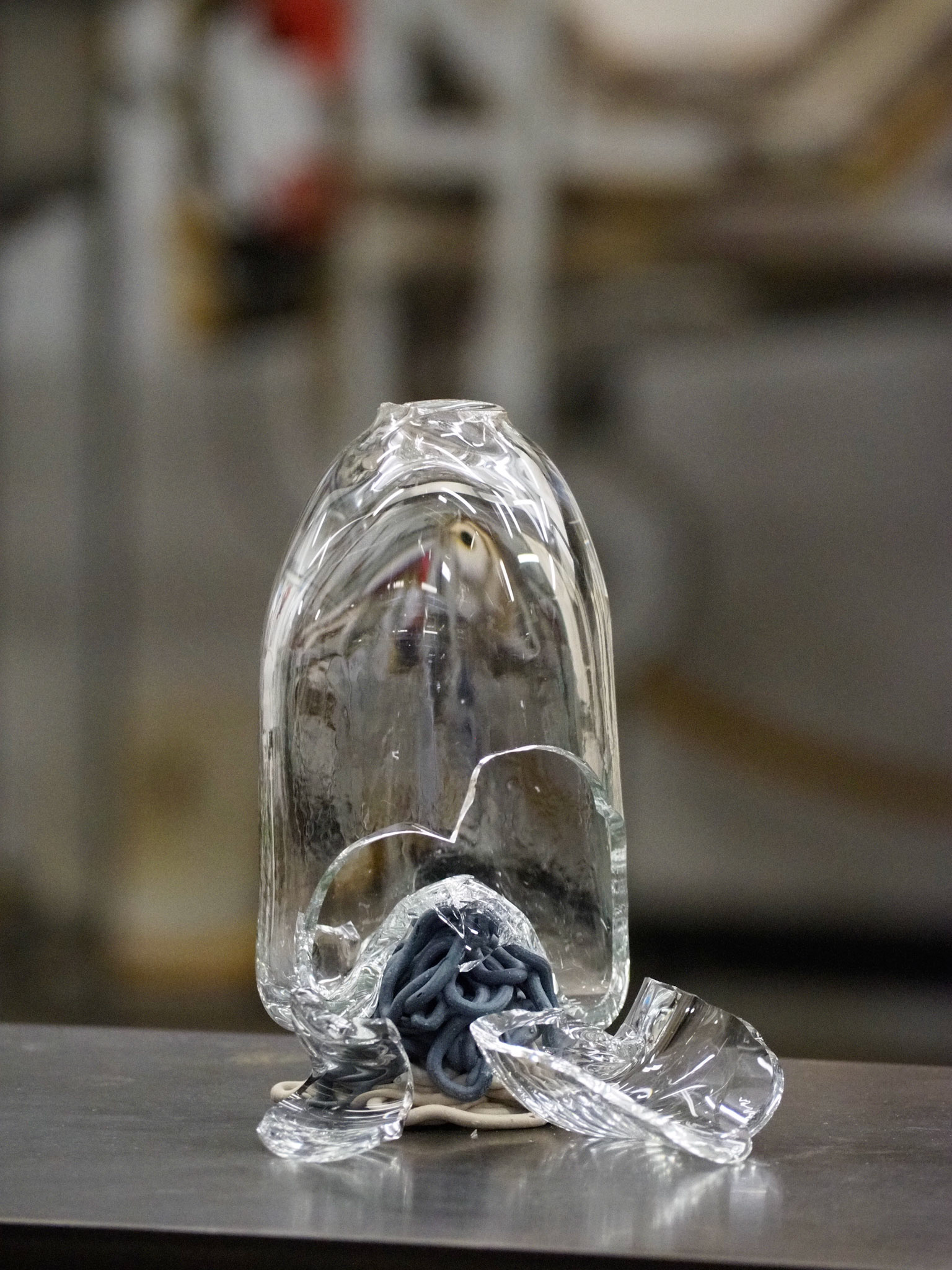
Bringing my ceramic components into the hot shop to use as bases for vases. This worked really well initially, it only broke in the lehr as the piece cooled, the compatibility of glass and ceramics' shrinkage rate doesn't seem to line up.

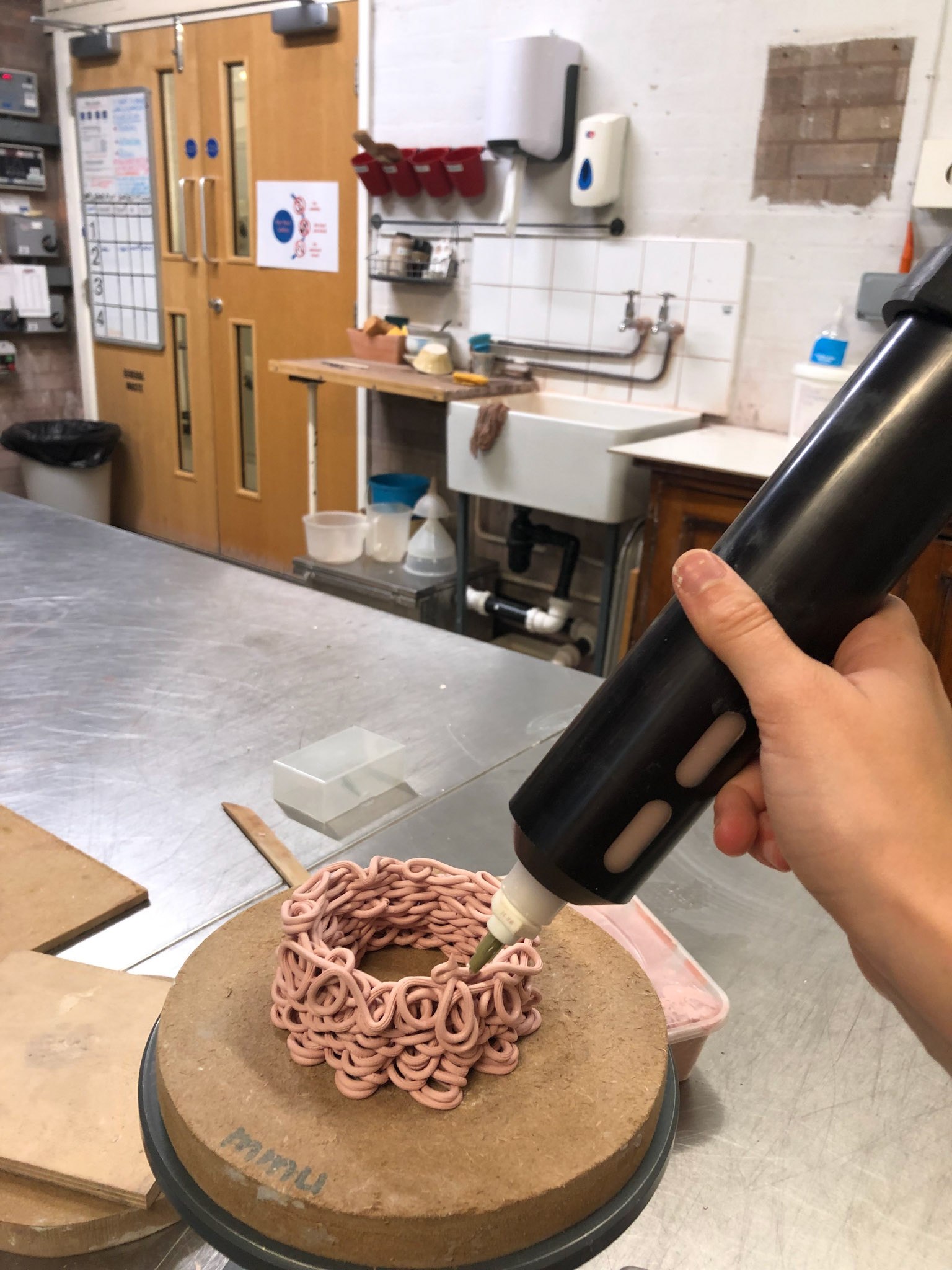
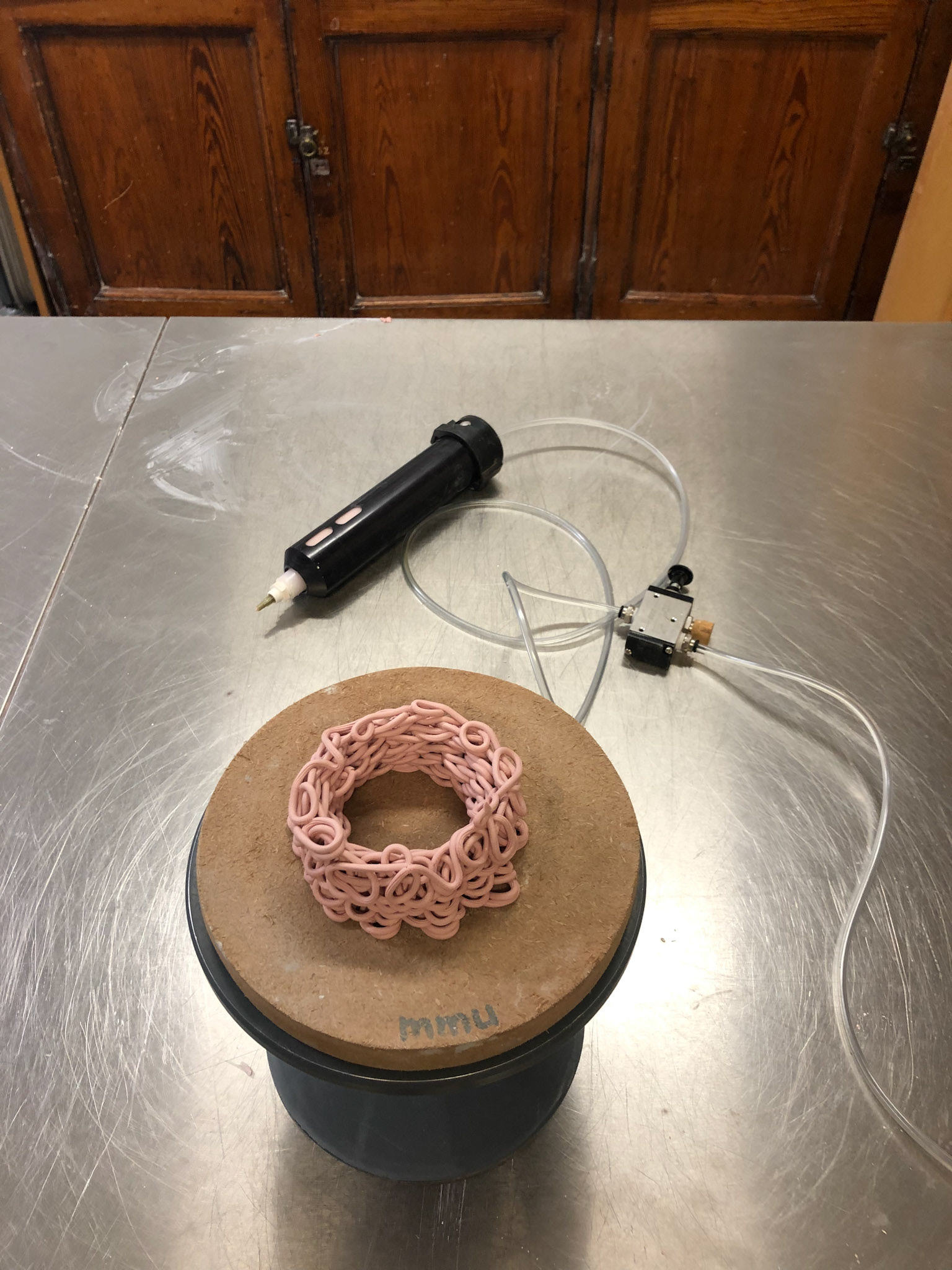
In order to progress with the development of my work, I used the components of a 3D printer in order to extrude the clay in a more controlled and consistent way. This way of extruding using compressed air meant that that I didn't have to stop and start repeatedly to reposition my hands to create more pressure. It also meant that the slip could be thicker, this was beneficial because it meant that the objects were more stable and less likely to topple over. I really enjoyed this way of working and I want to explore it further, however, there are limitations because the nozzles are very small so scaling up could be an issue. I used this to my advantage with these tests and I like the delicacy this creates but in order to make more work like this I would need to buy my own equipment so this is something I need to consider.
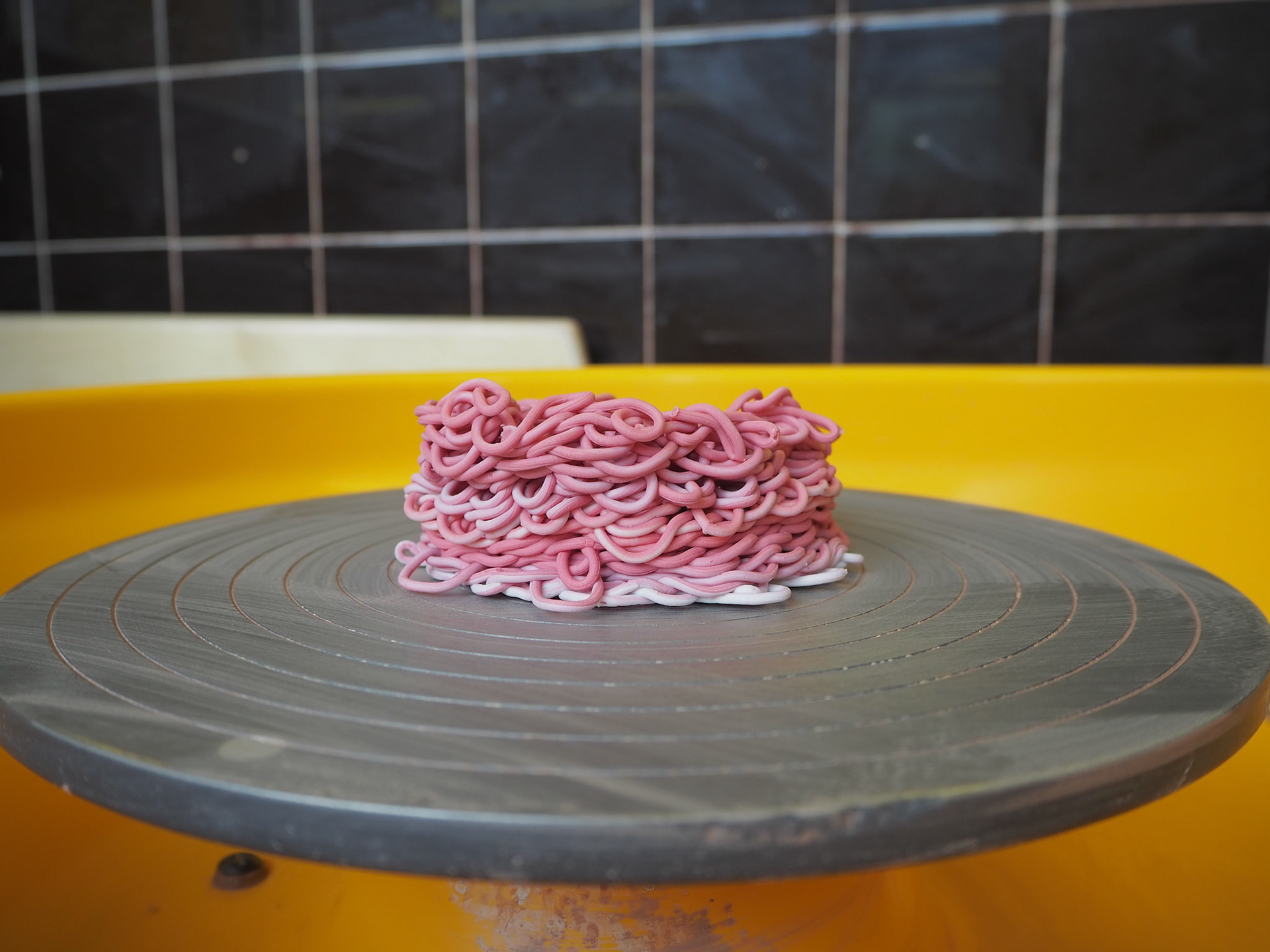
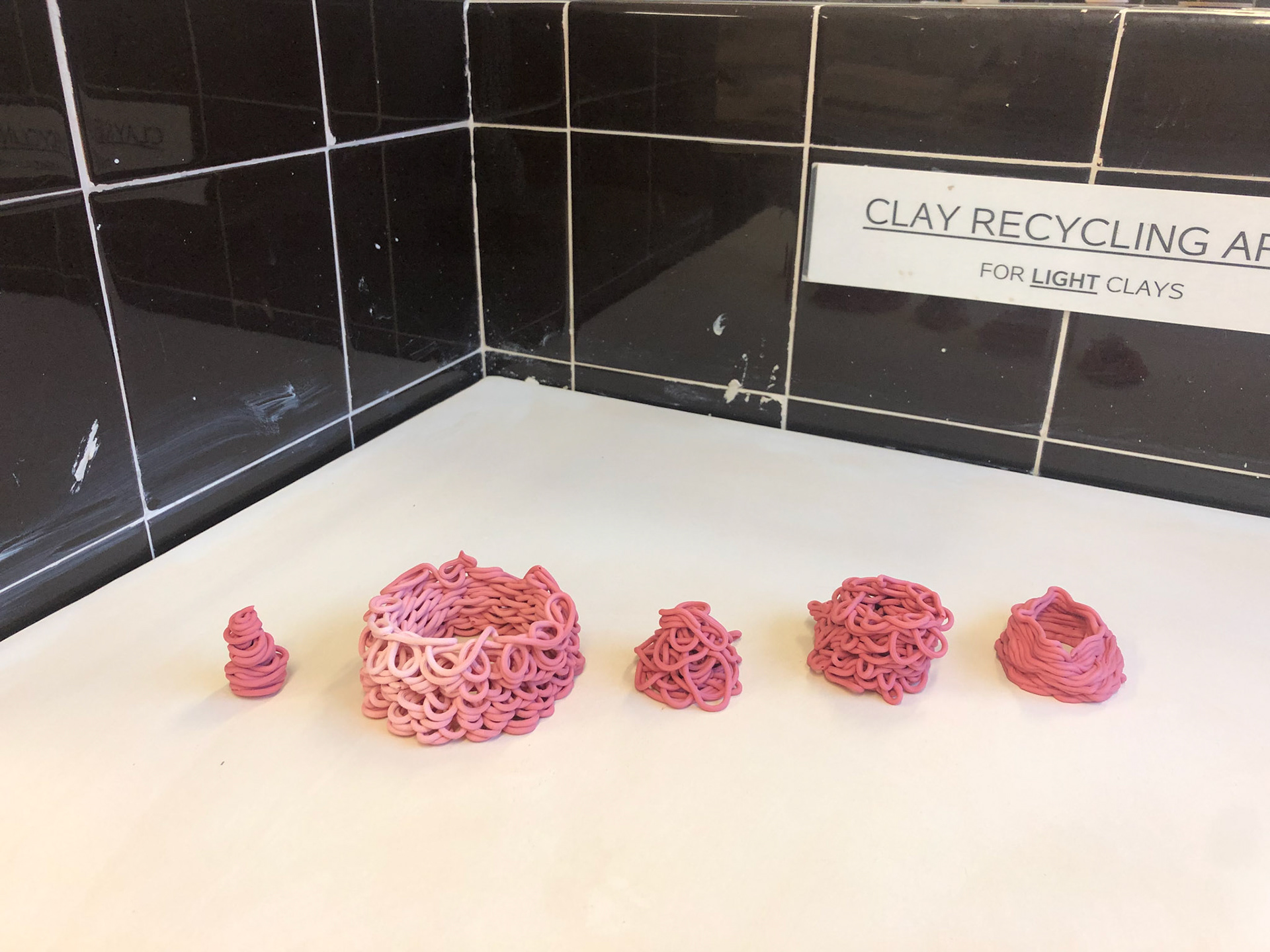
When extruding in this manner, with each movement of the hand there is a small kick in the extrusion which encourages the slip to form a loop. I used this to my advantage and started to build forms by layering the loops ontop of each other.
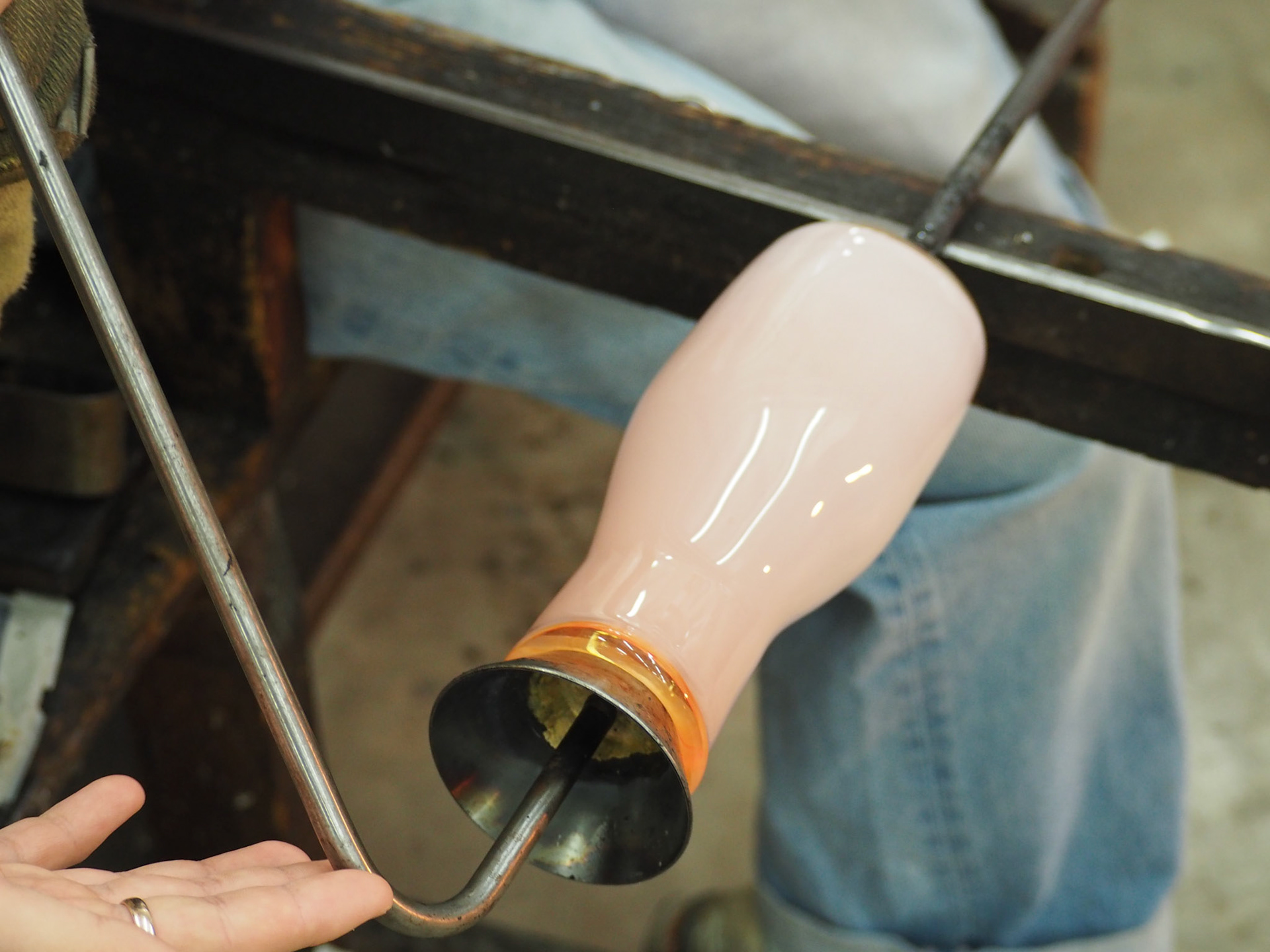
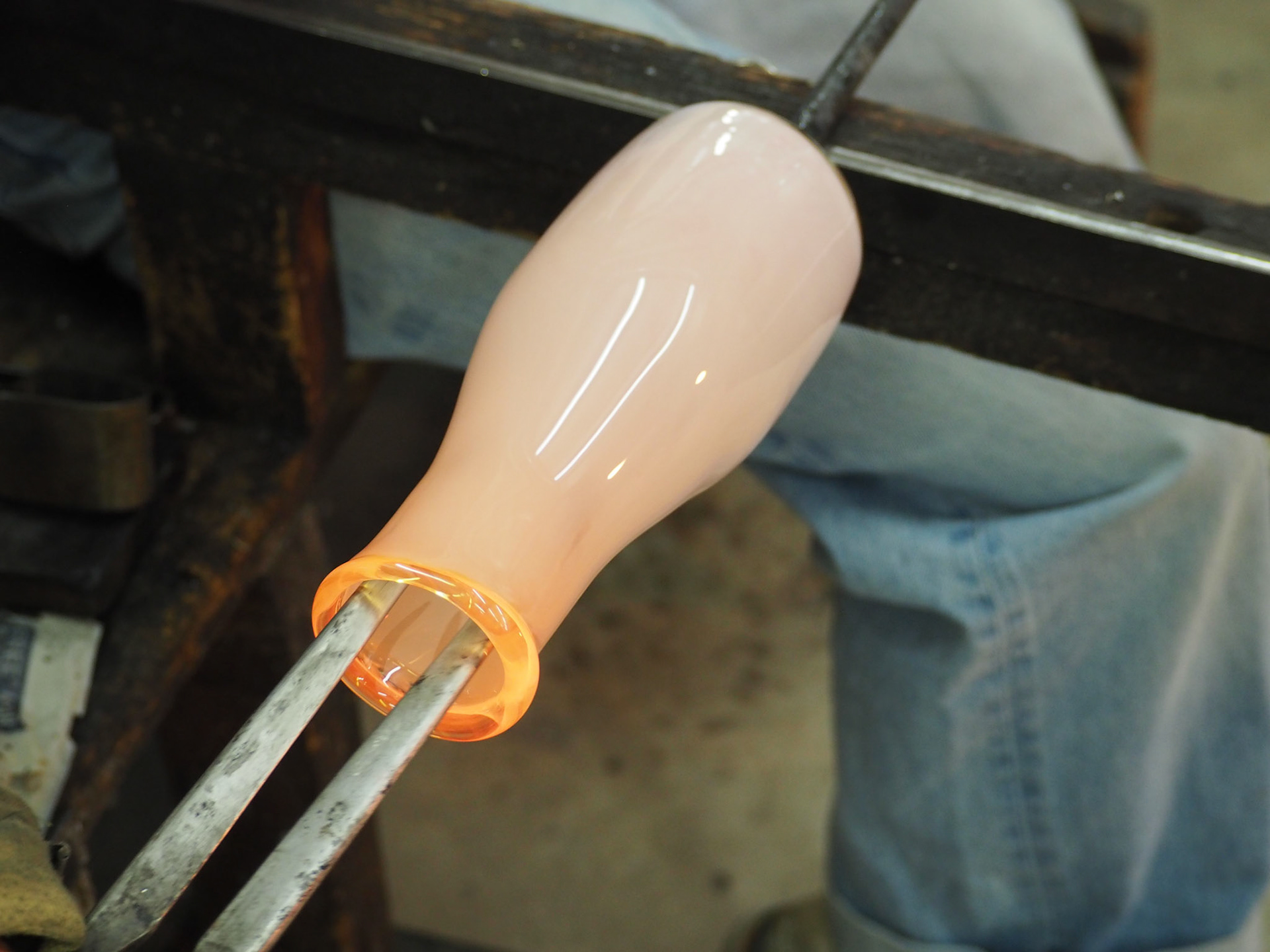
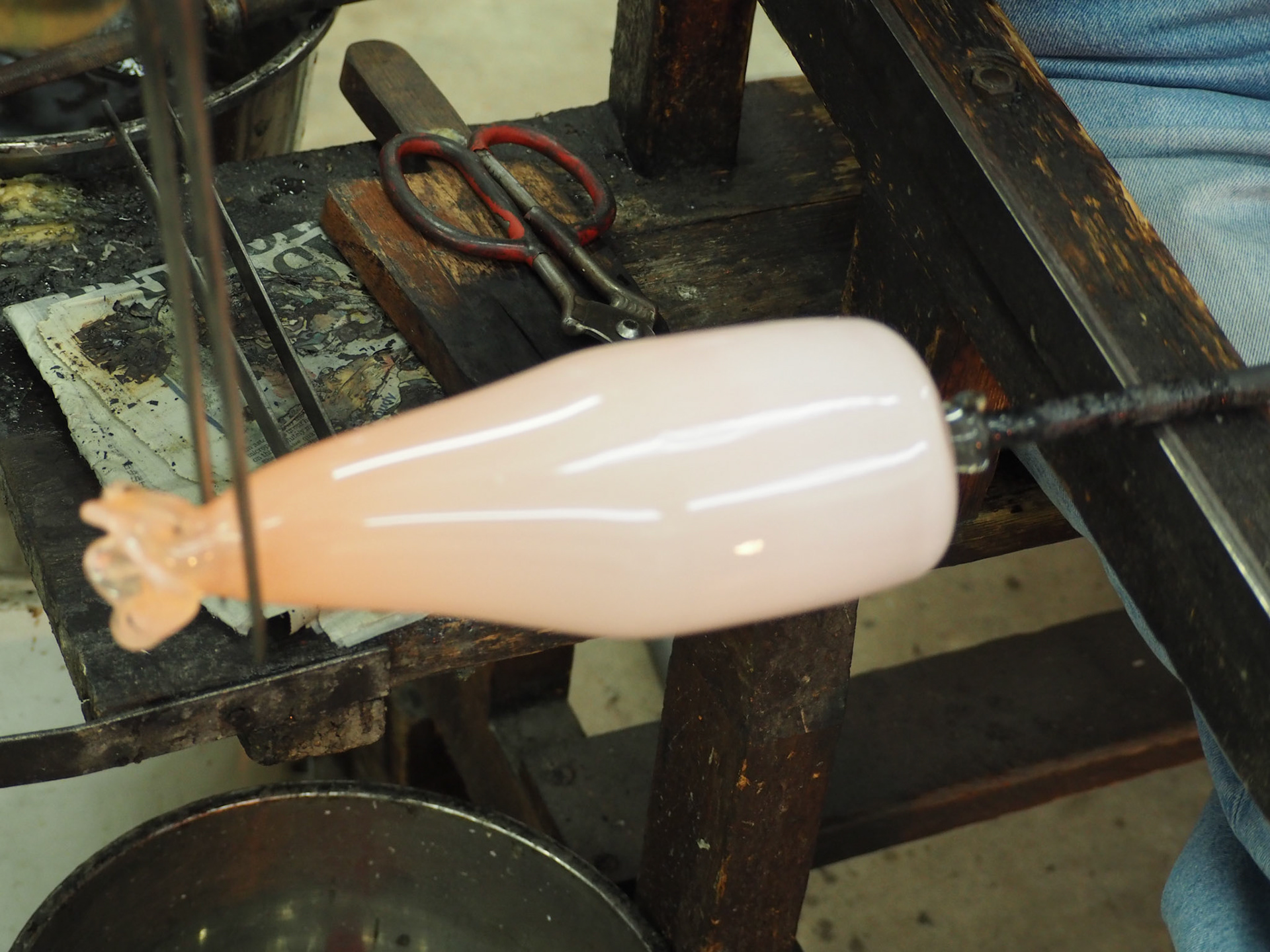
After the long summer break I have noticed that my glass capabilities have reduced quite a lot and part of my research into playfulness was the balance between play and mastering a craft. I want to make sure that I am still learning and developing my glass skills so I am spending some of my time in the hot shop making vases with straight sides because practicing this form allows for lots of development of skills. This is an ongoing series of objects that I can use to experiment with colour combinations alongside my synthesis and resolution work.

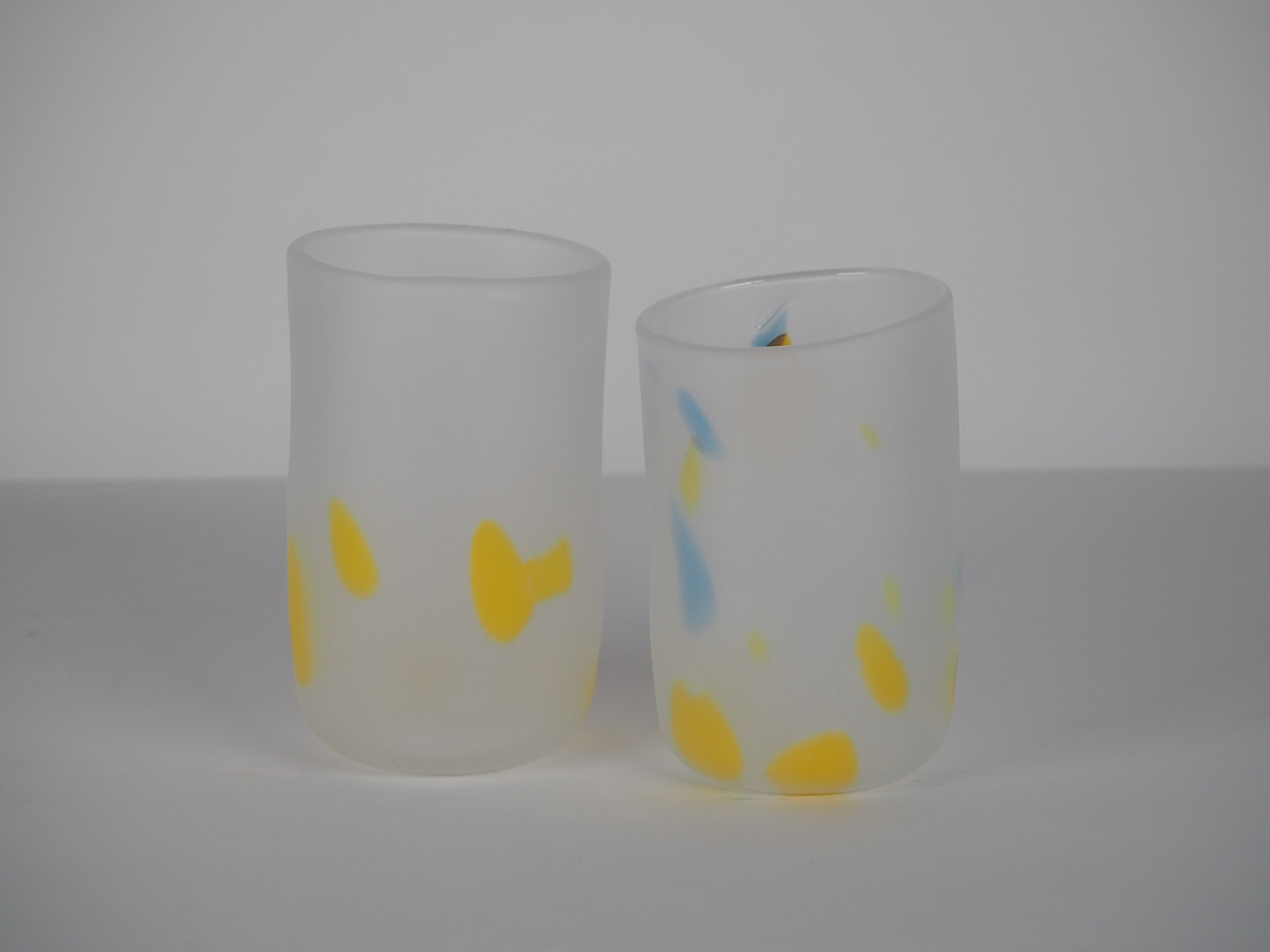
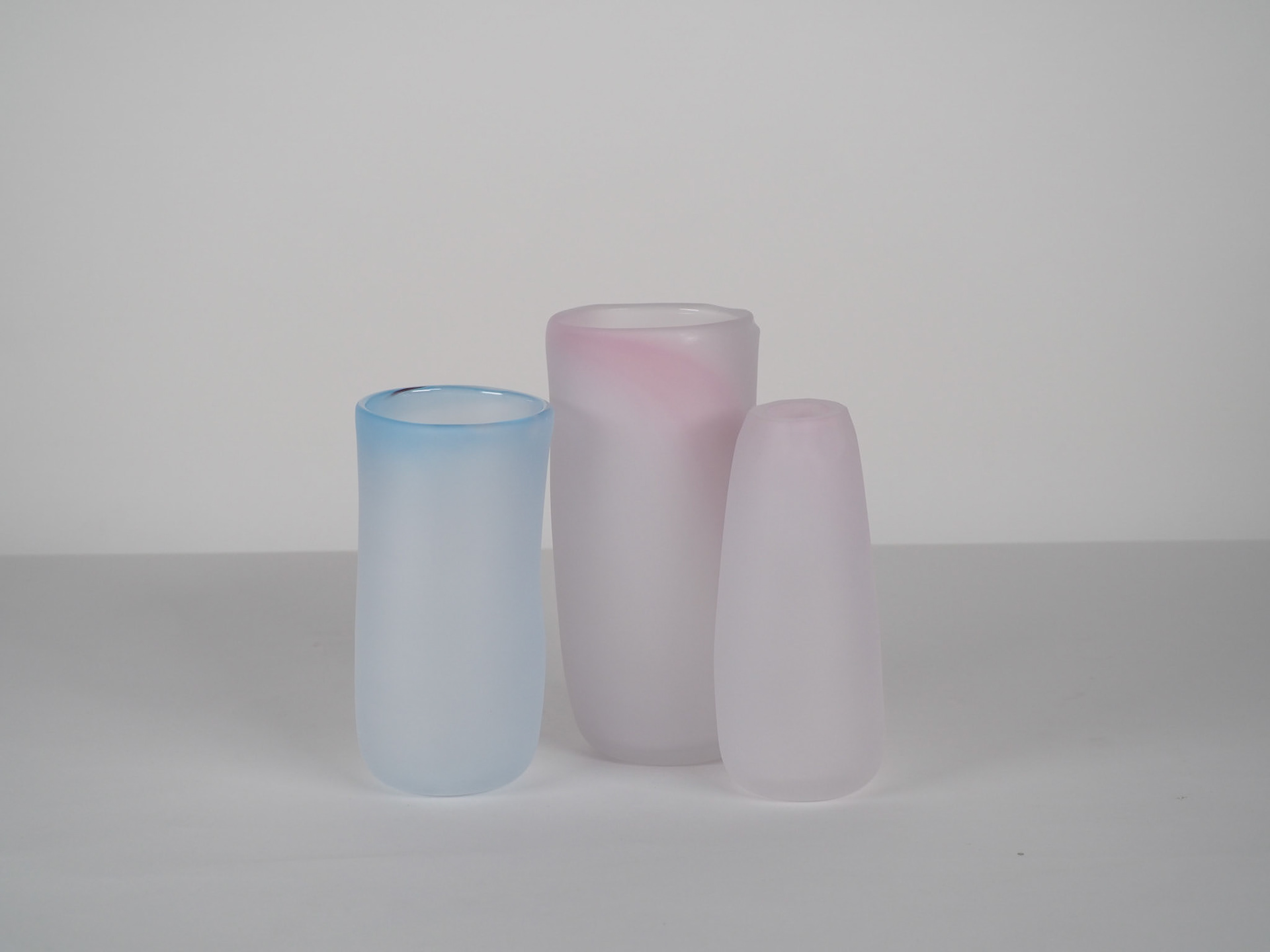
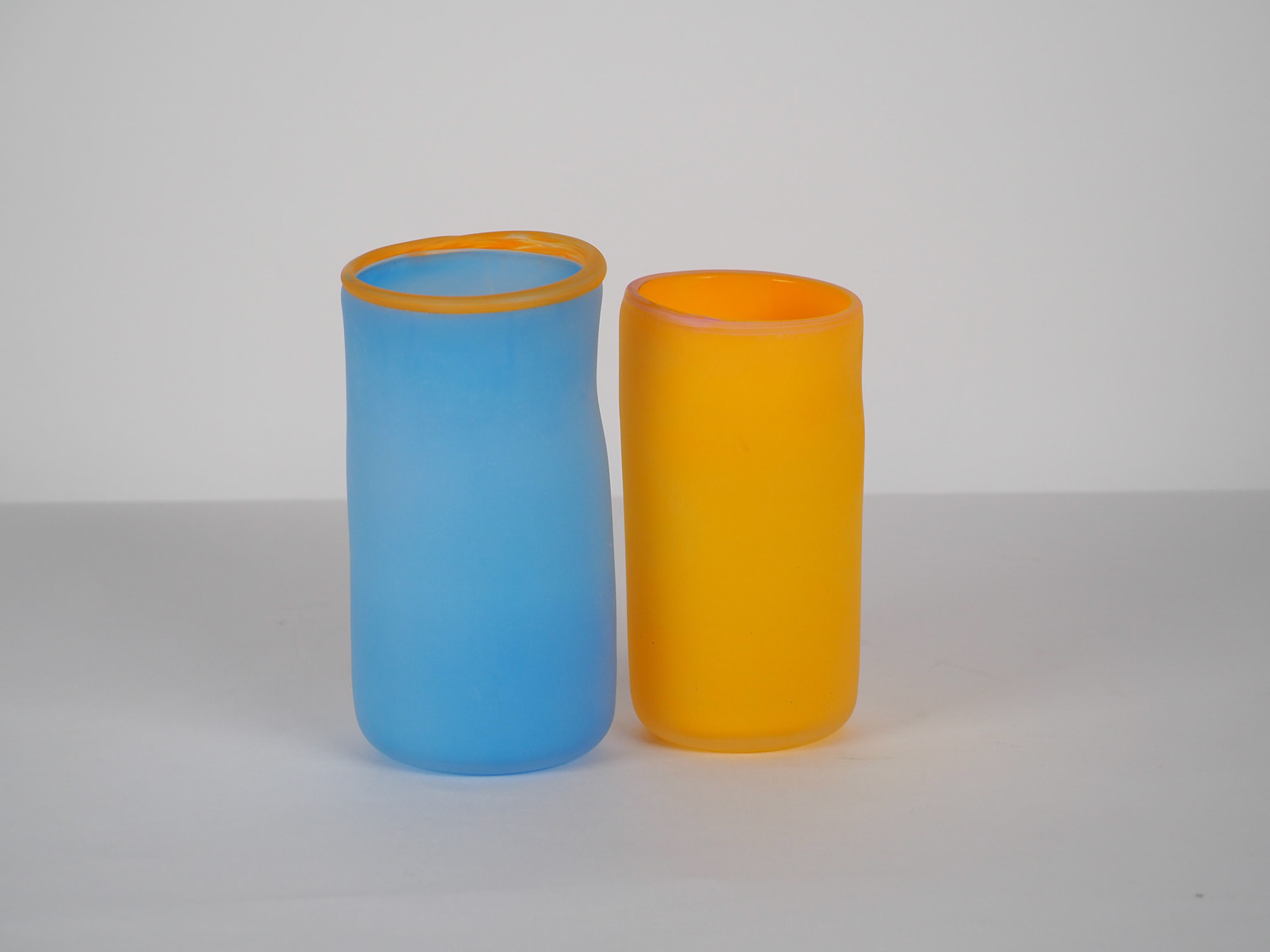


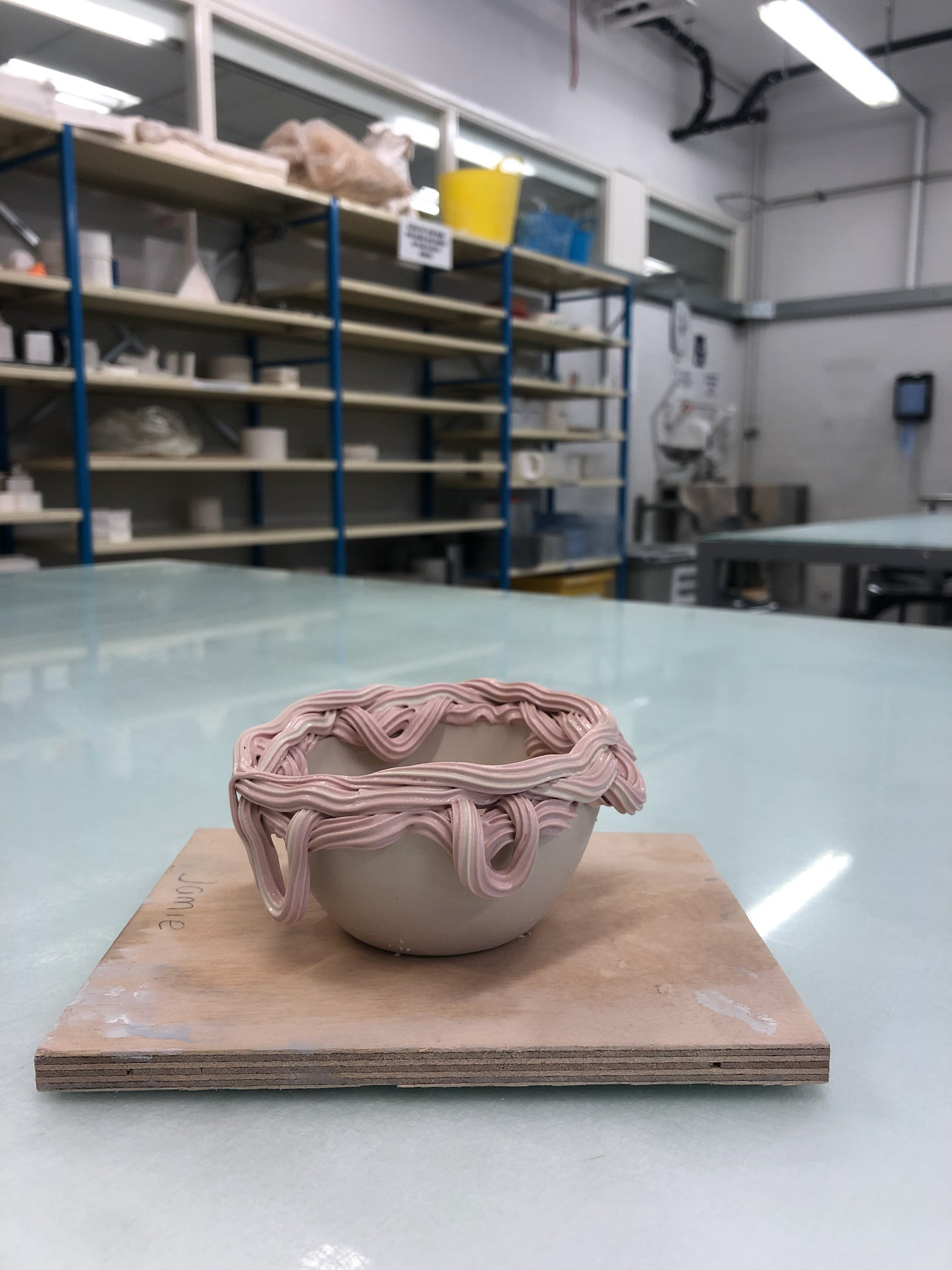
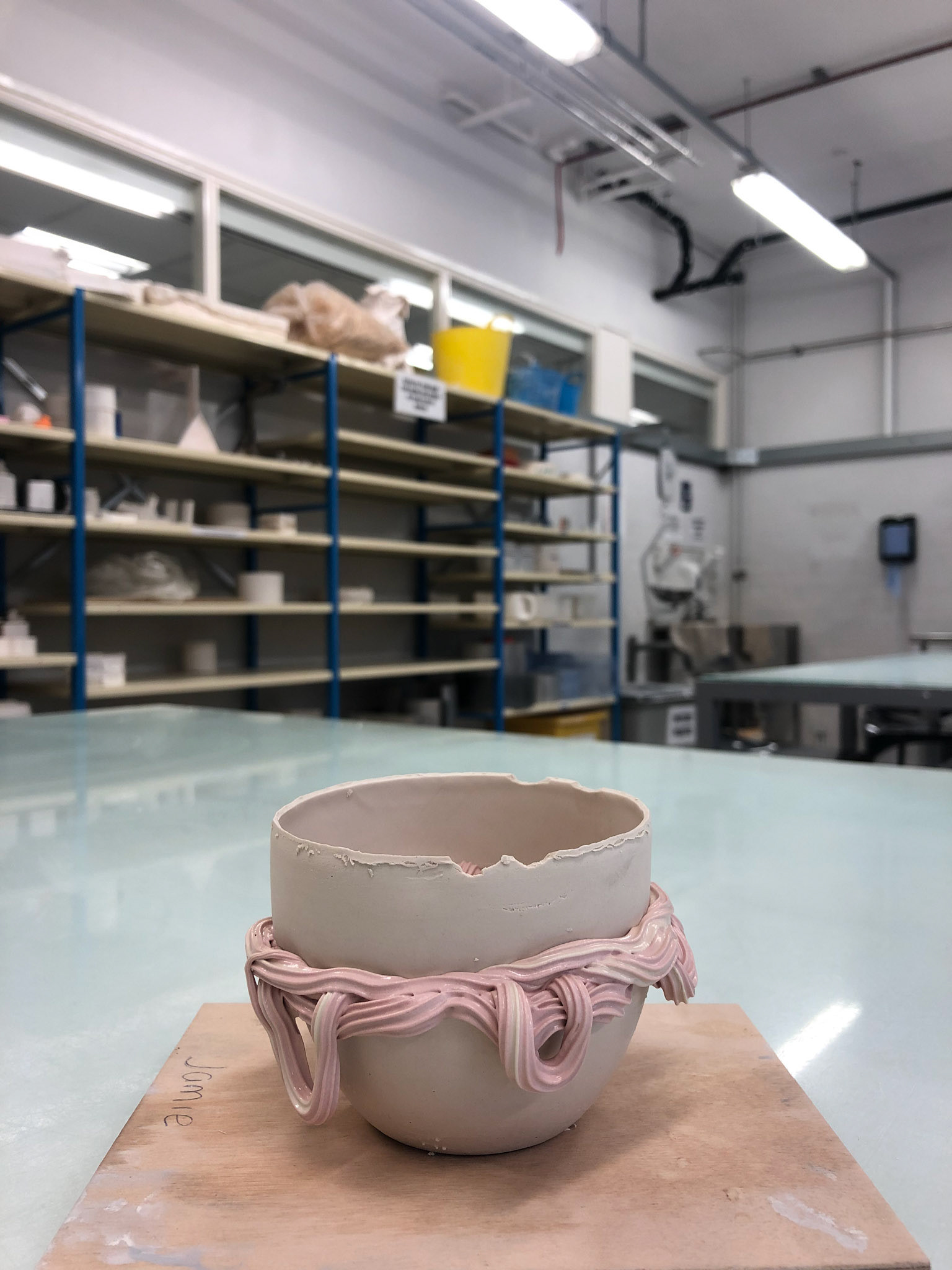

Slip casted form, cut into pieces and rejoined together using piped slip. I like this idea because it encapsulates the idea that play is a movement between creation and destruction. Although, the slip was a little too wet and 'slopped' too much.
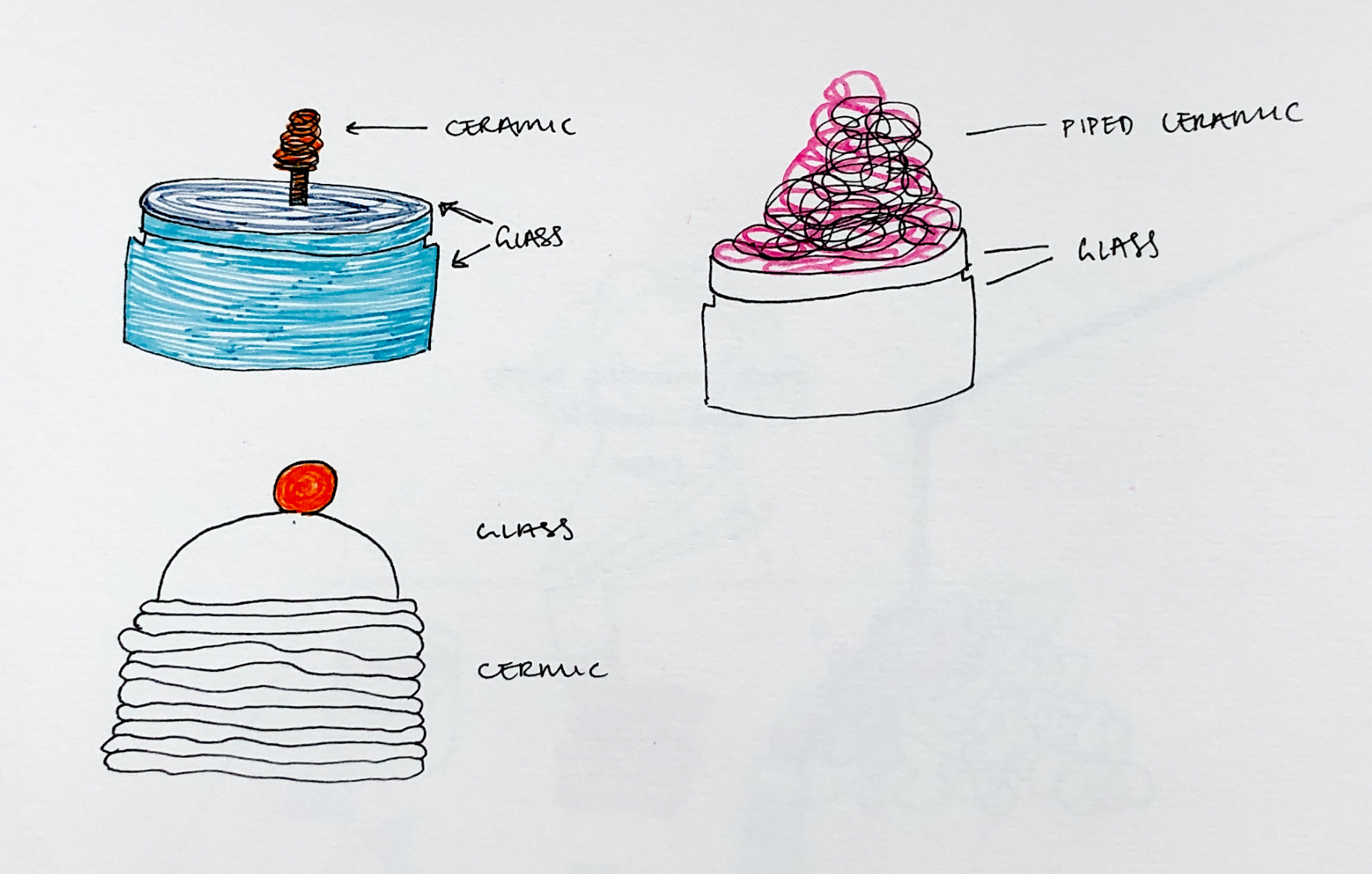
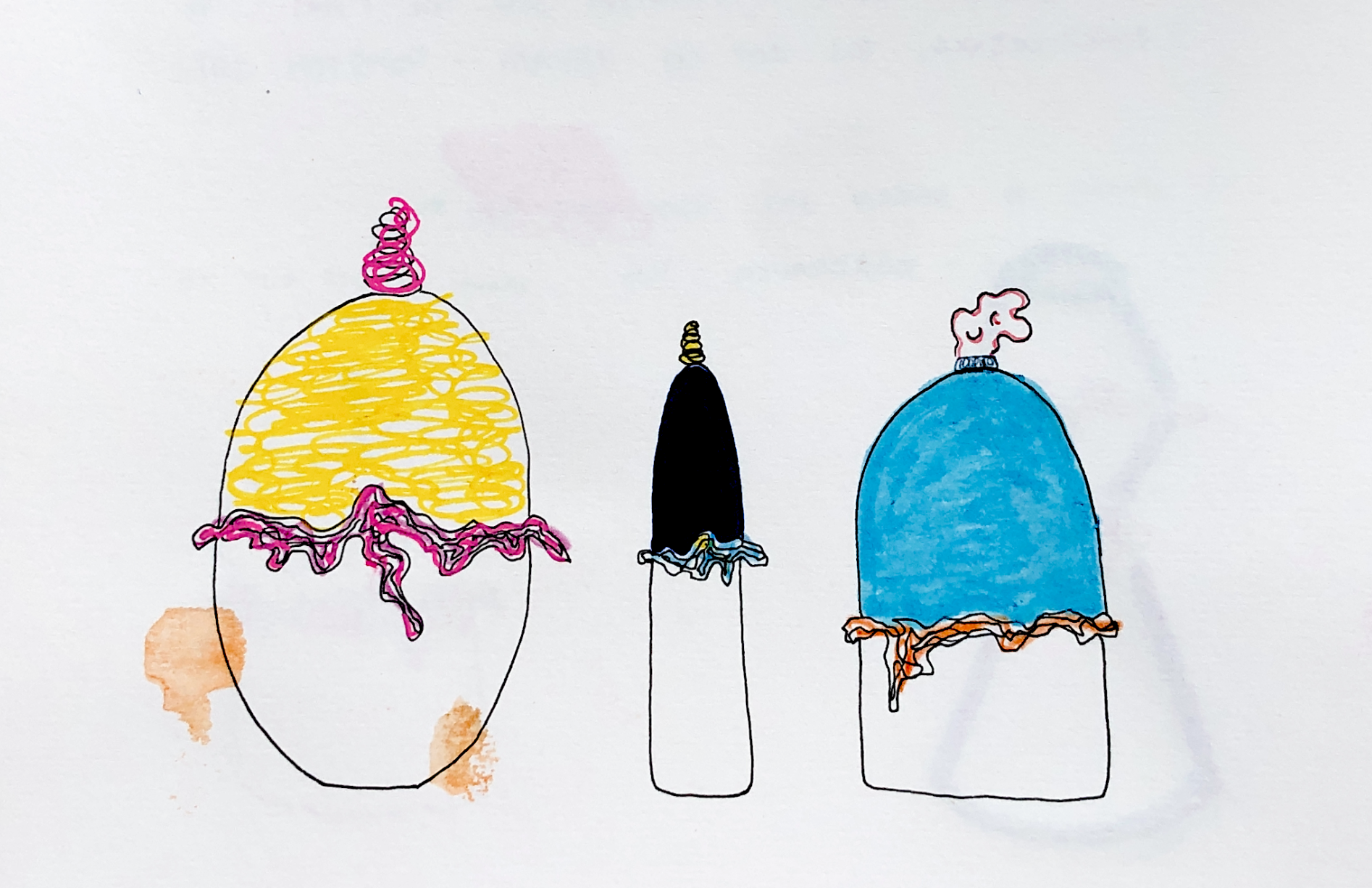
I began thinking about what kind of forms to make, I wanted the form to link back to childhood and nostalgia in order to contribute to the play element of my project, I came up with the idea of lidded jars as a nod to the biscuit jars many of us had growing up. I started to think about ways in which I could include the tests that I'd already done in these designs, combining both glass and ceramics.

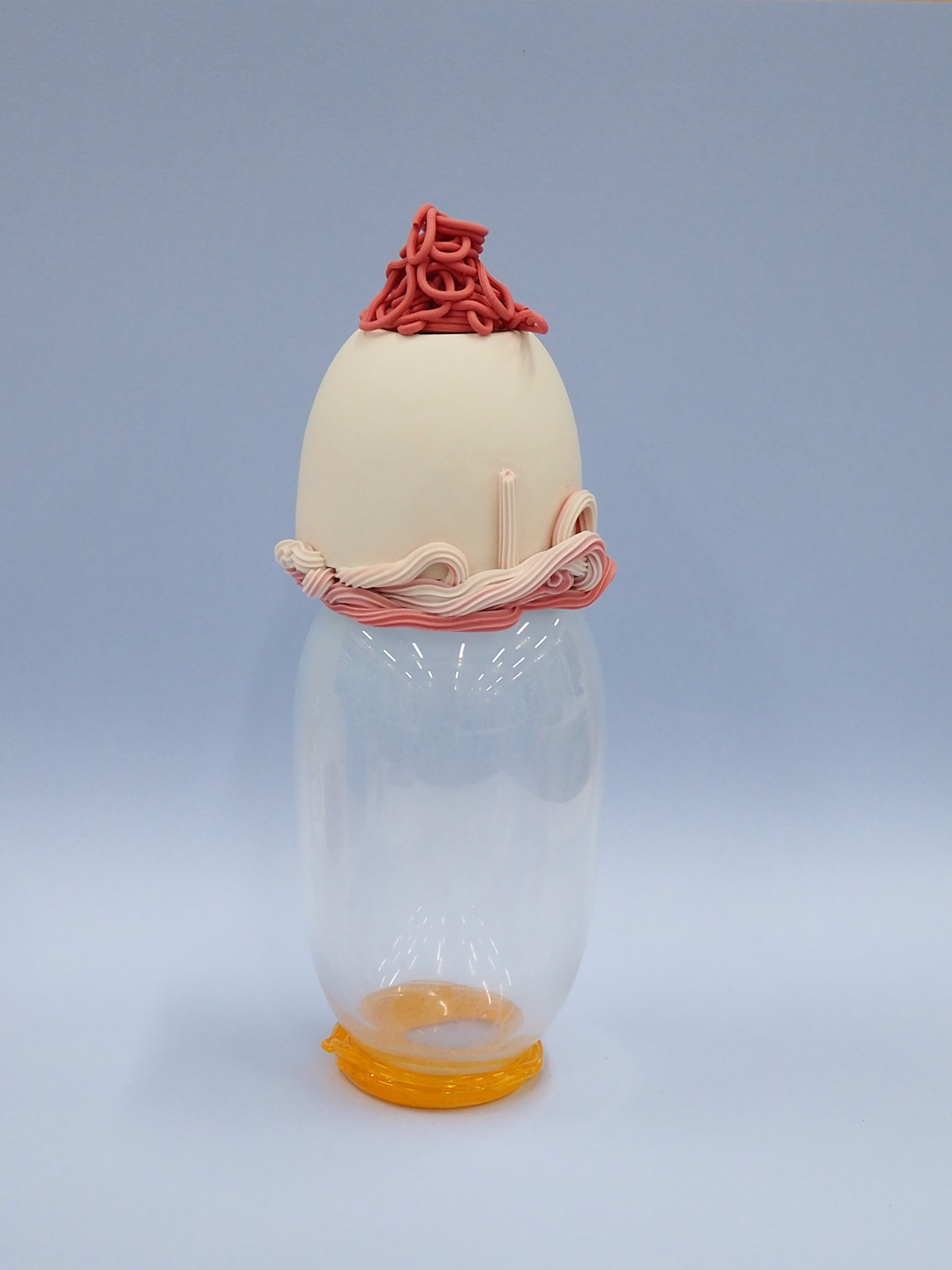
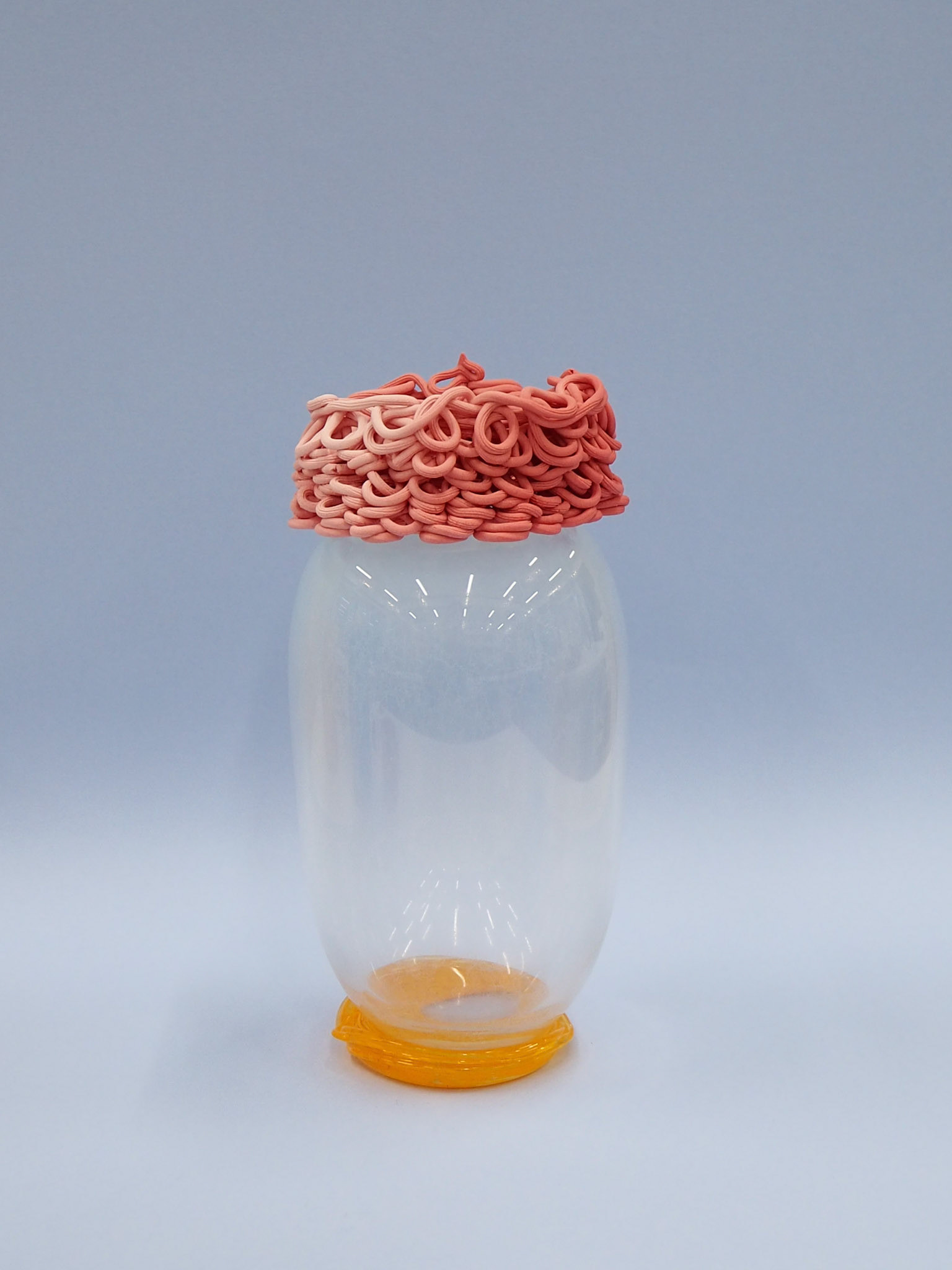
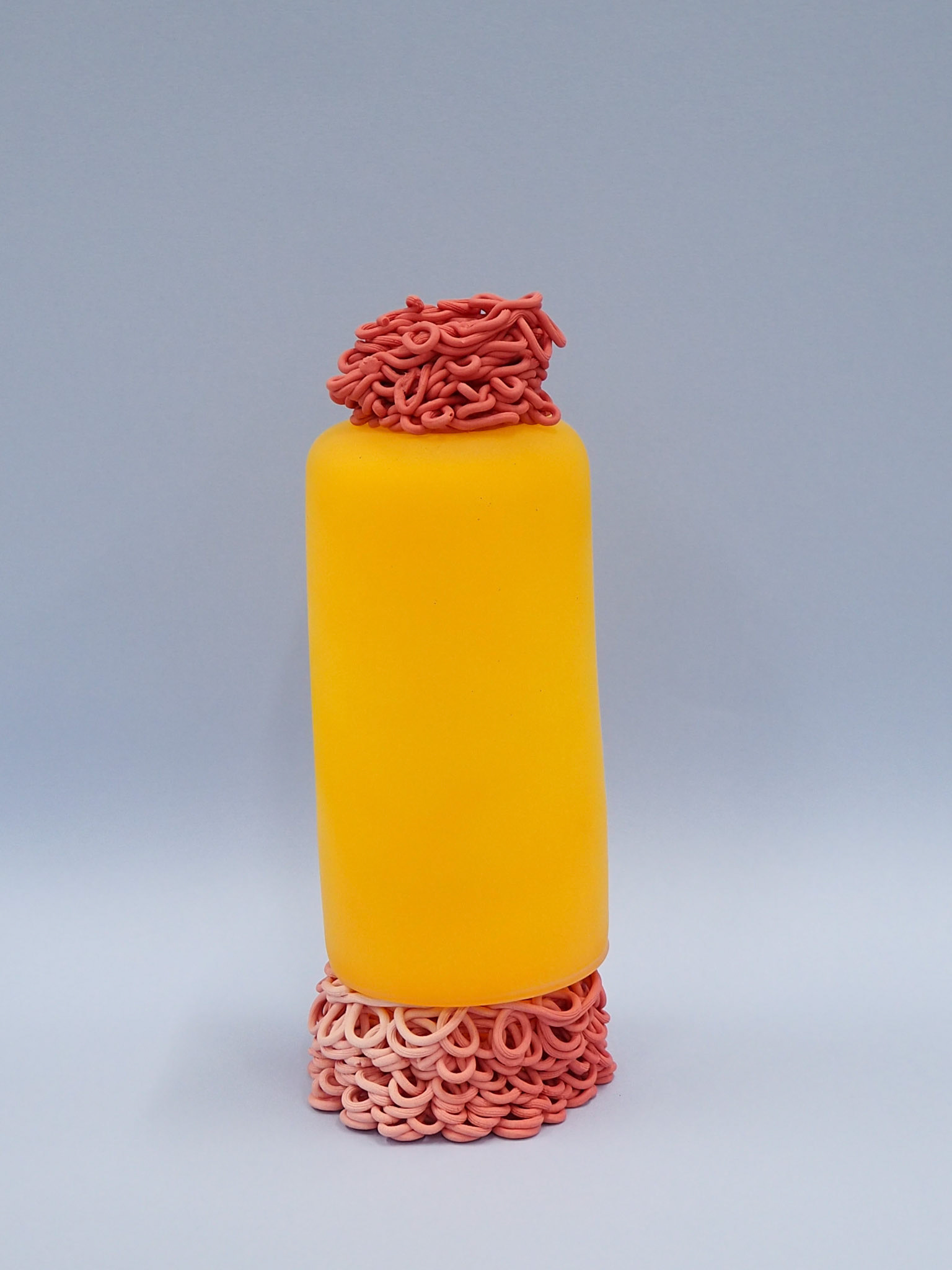
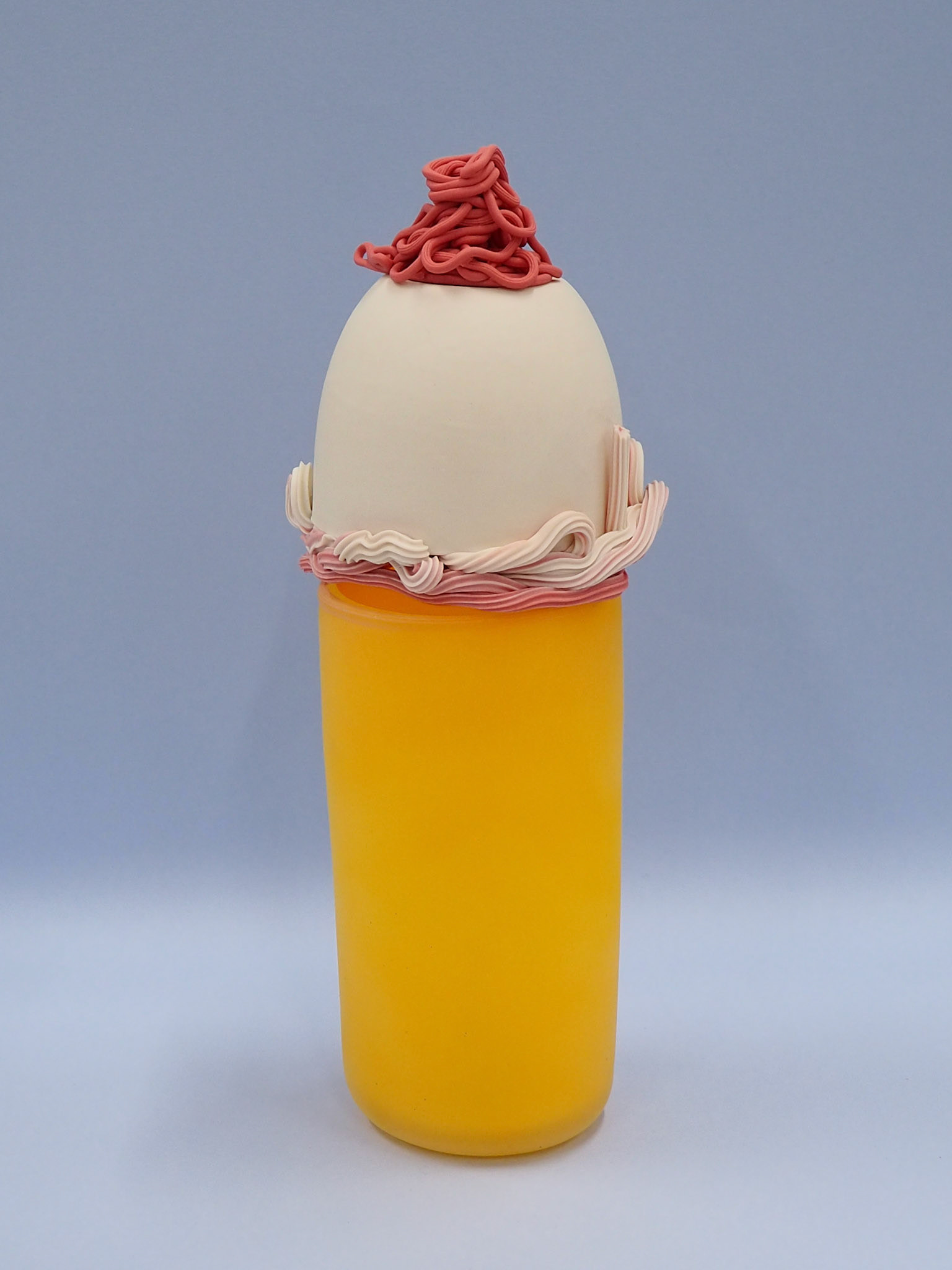
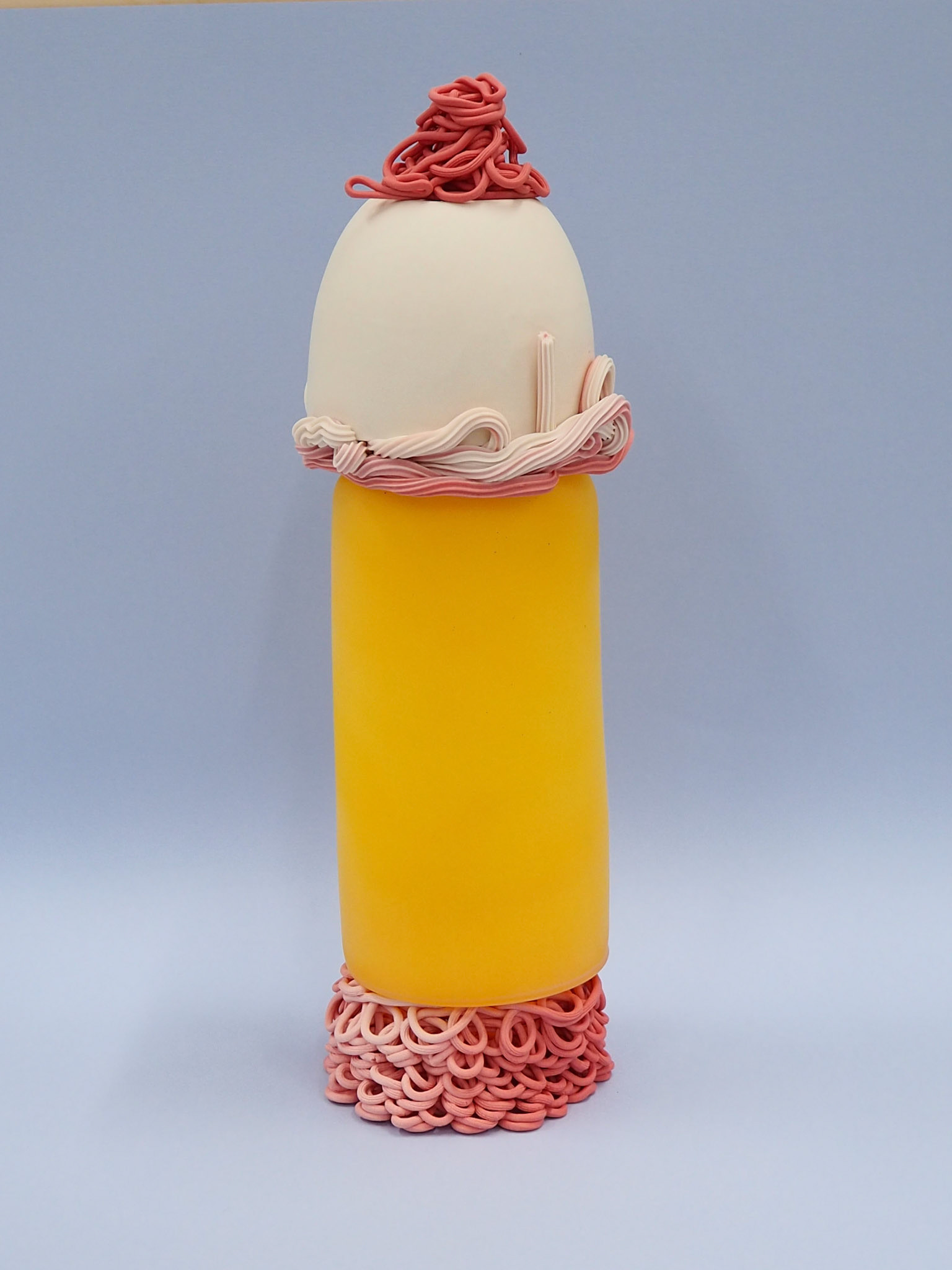
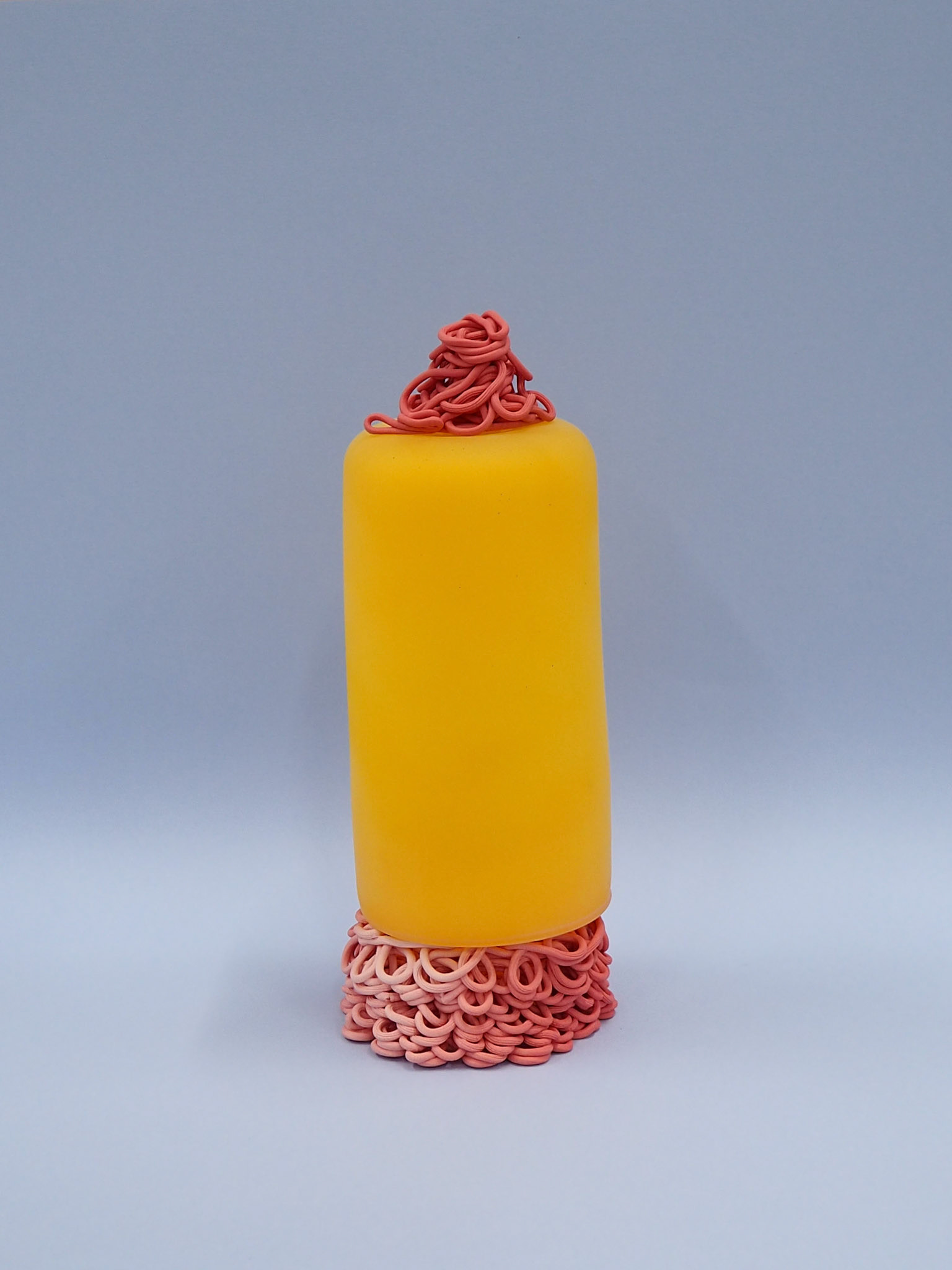
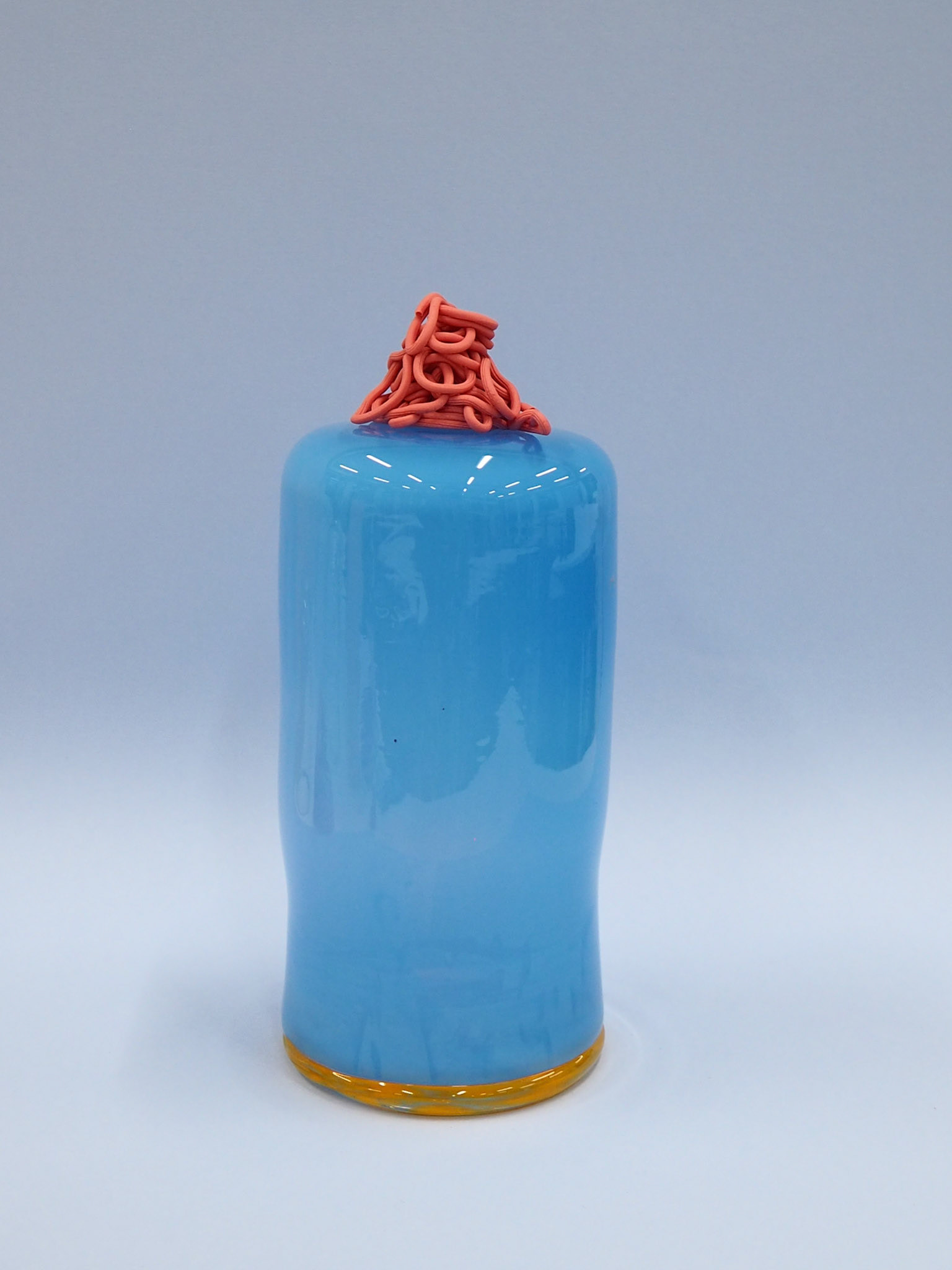
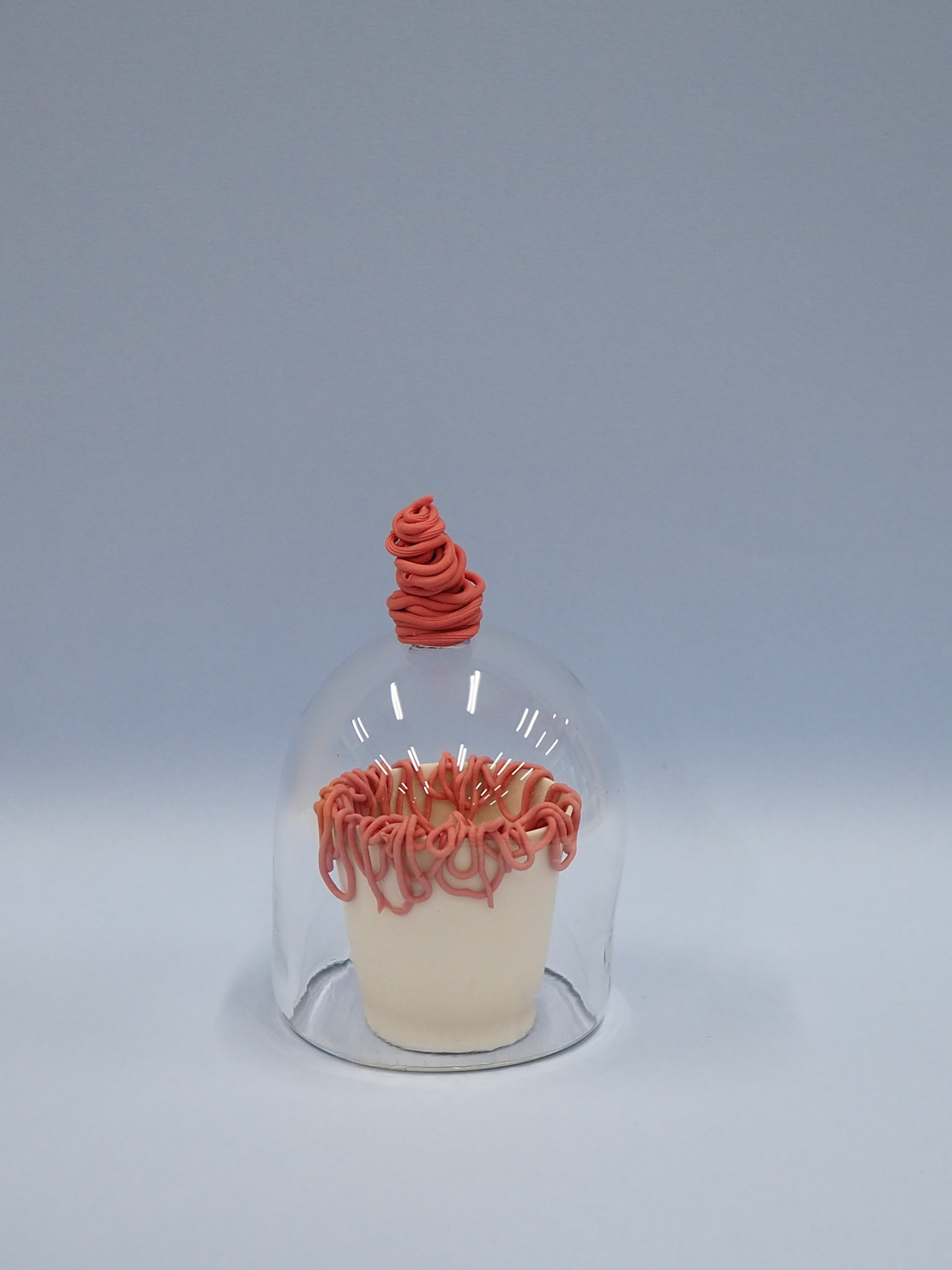
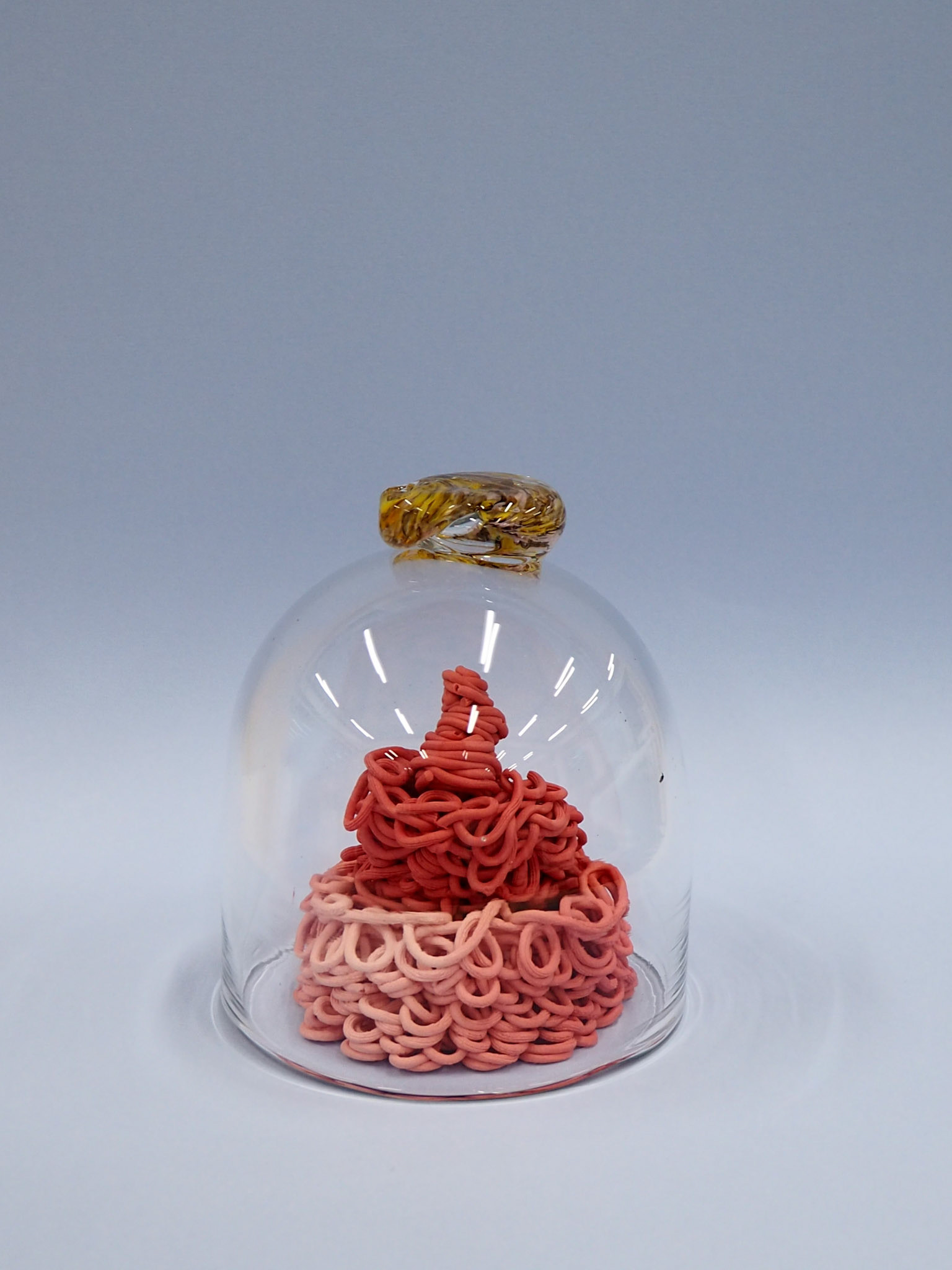



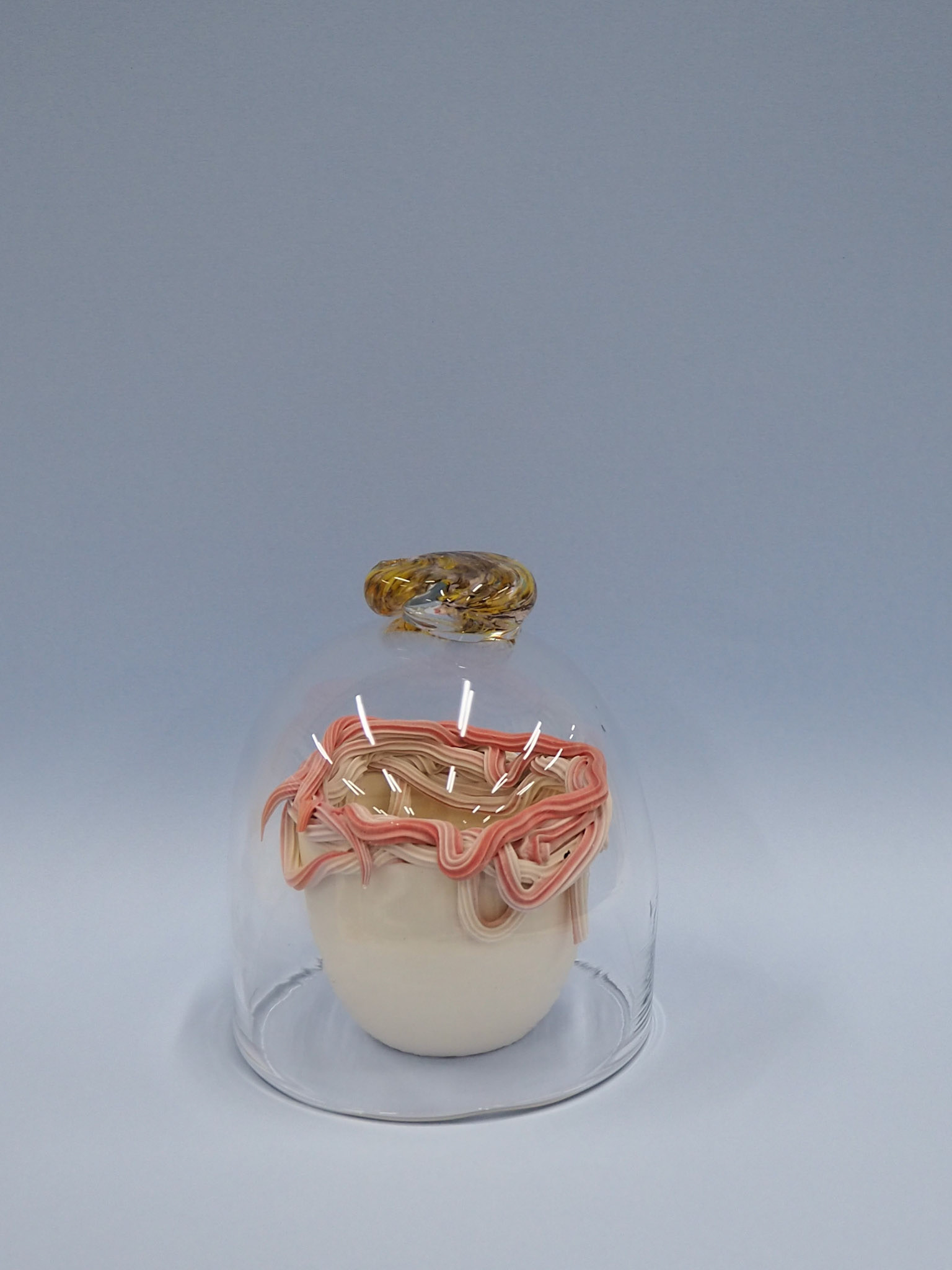

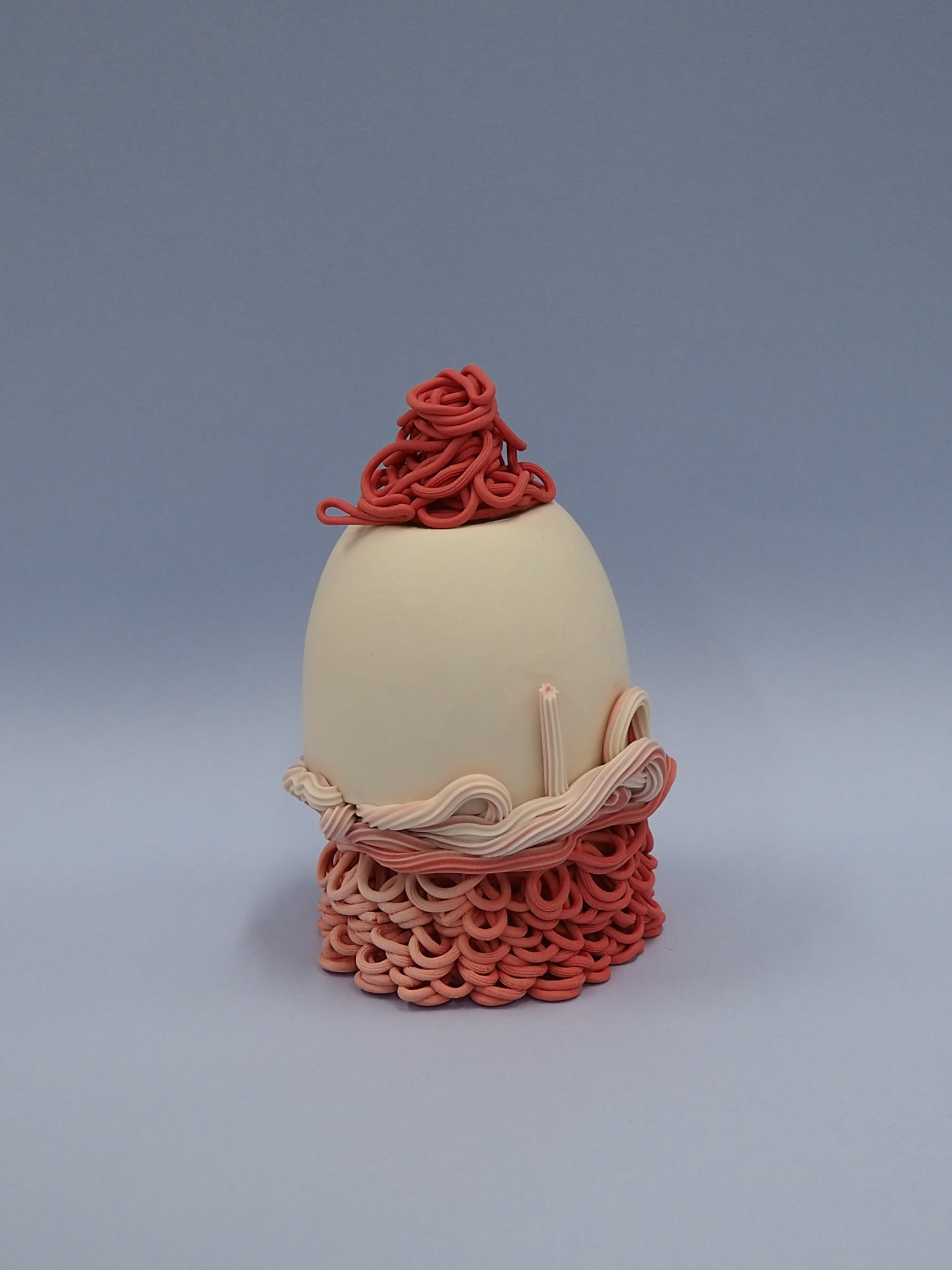
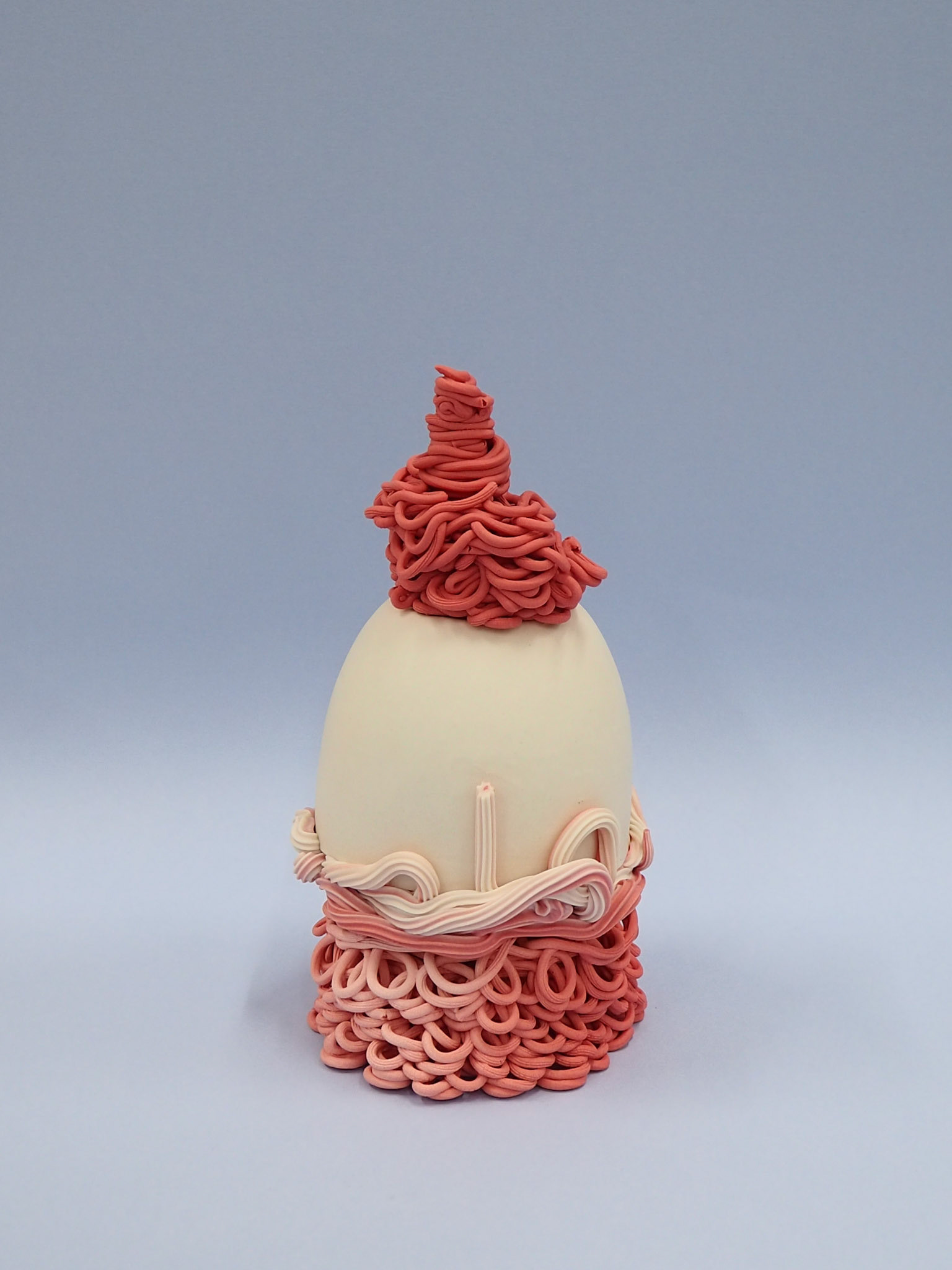
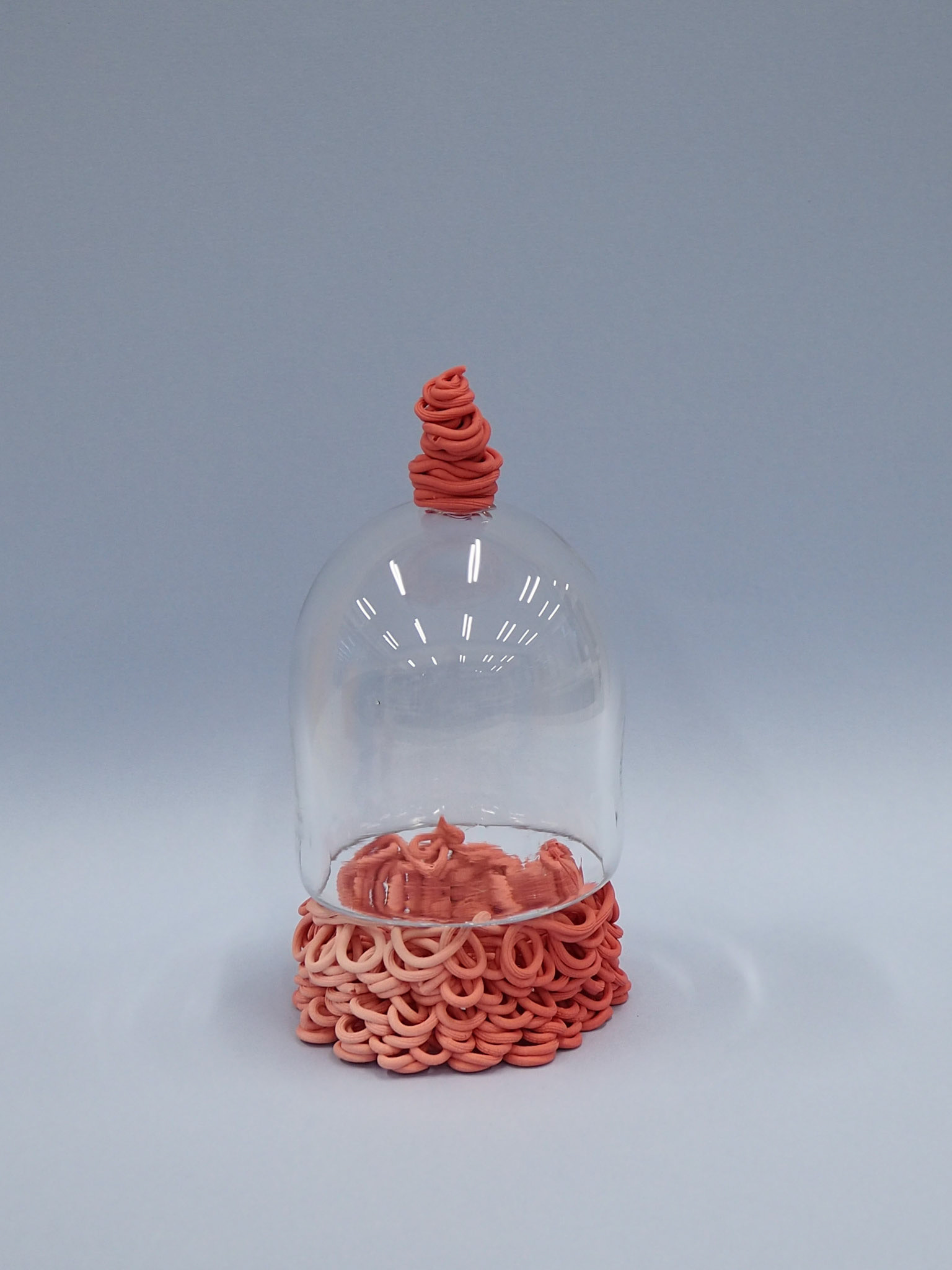
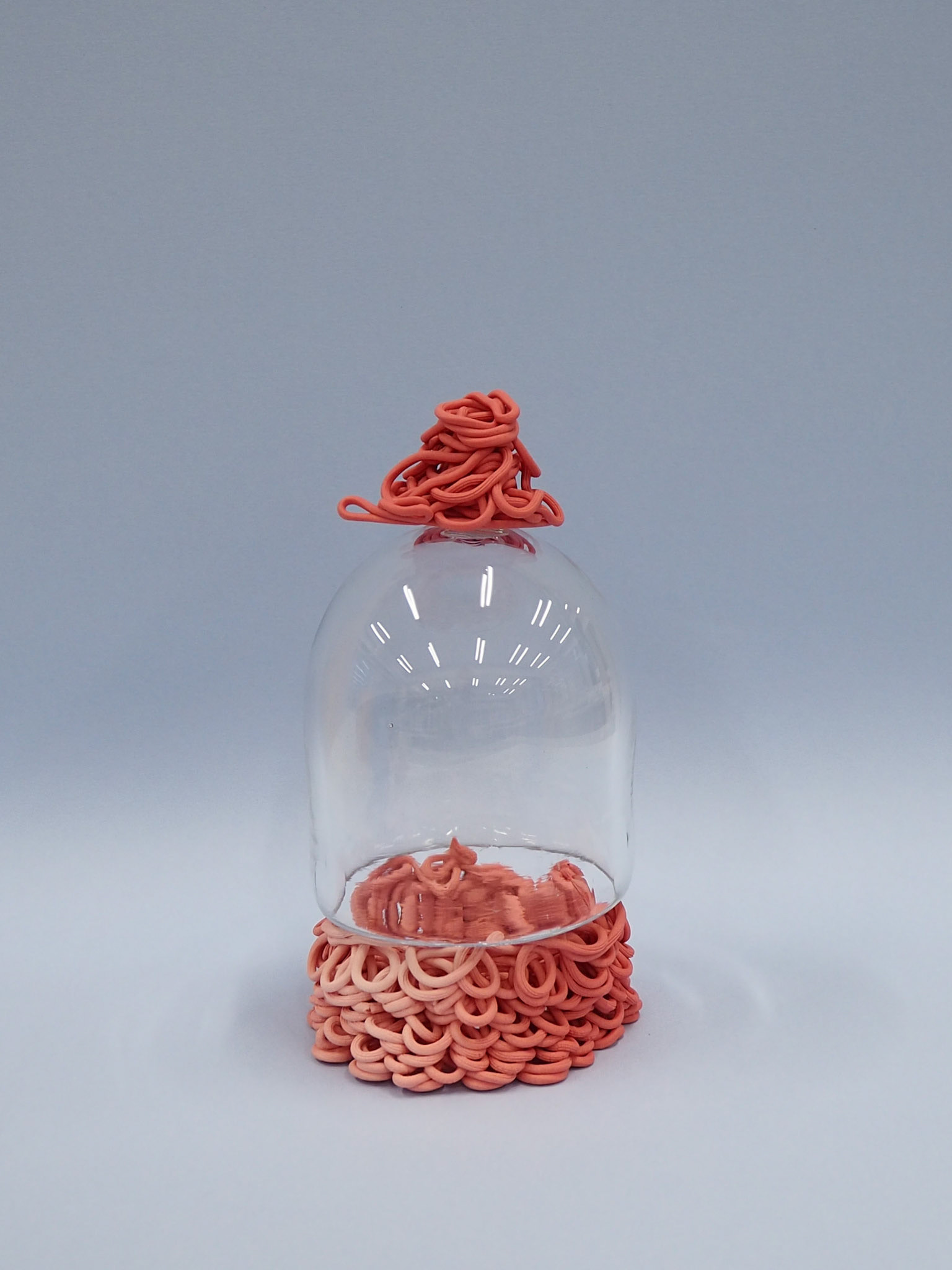
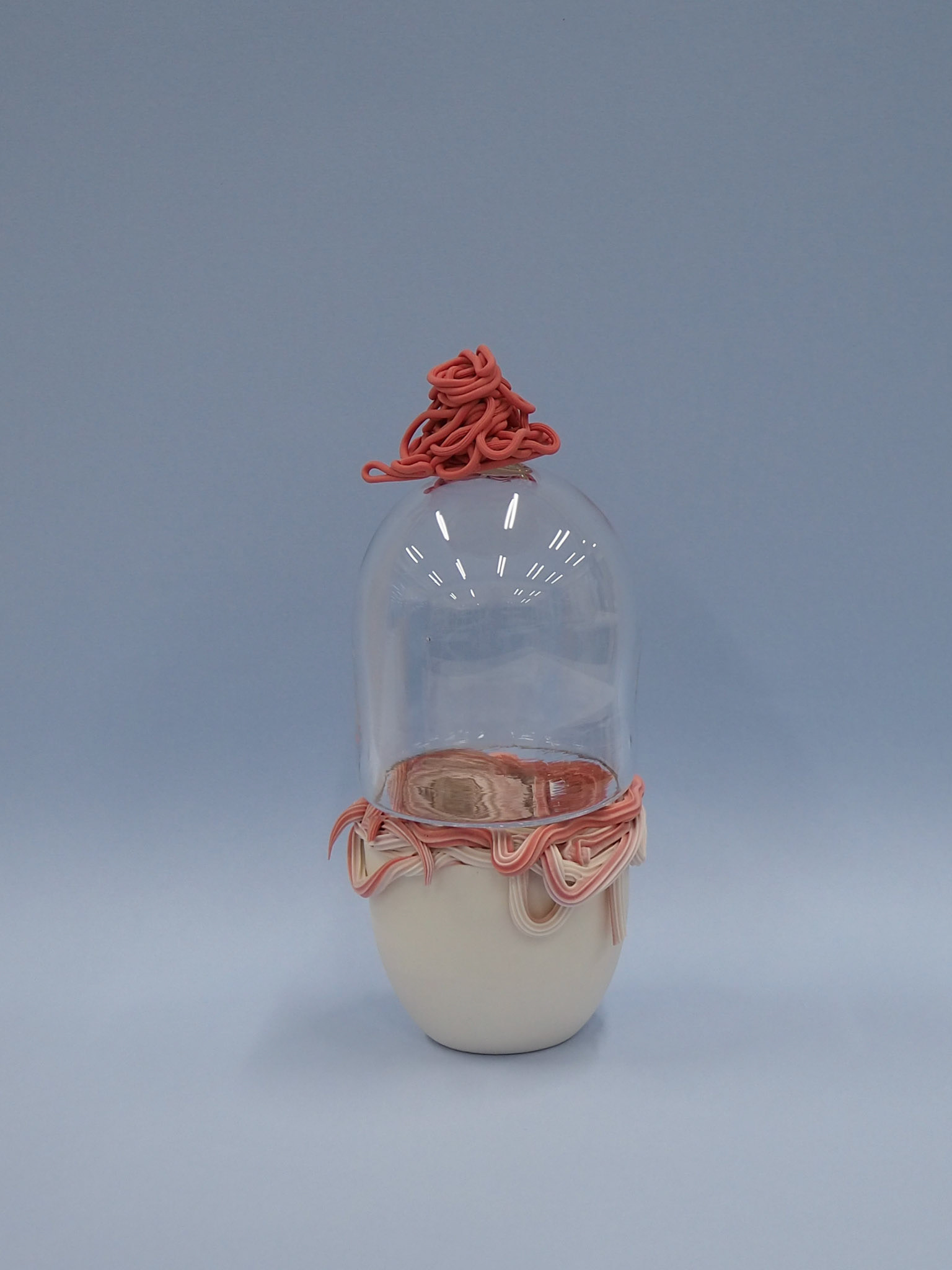
Using the objects I've made so far I decided to use them like lego pieces to make these stacks. Until now, my glass and ceramic pieces have felt a little unconnected but think this could be a good way of combining the two and making most of the materiality of both materials. I like the idea that each smaller piece I make could be a component of something bigger. This was a very playful process, the act of stacking them felt like a game. At this point I realised that my previous idea of lidded jars was quite limiting, the idea of these stacking forms leaves much more room for play. I like the dome shape and I will develop this further, although the bigger dome form in the photos has a coloured foot on the top, this colour doesn't work with the other pieces and doesn't bring anything to the composition.
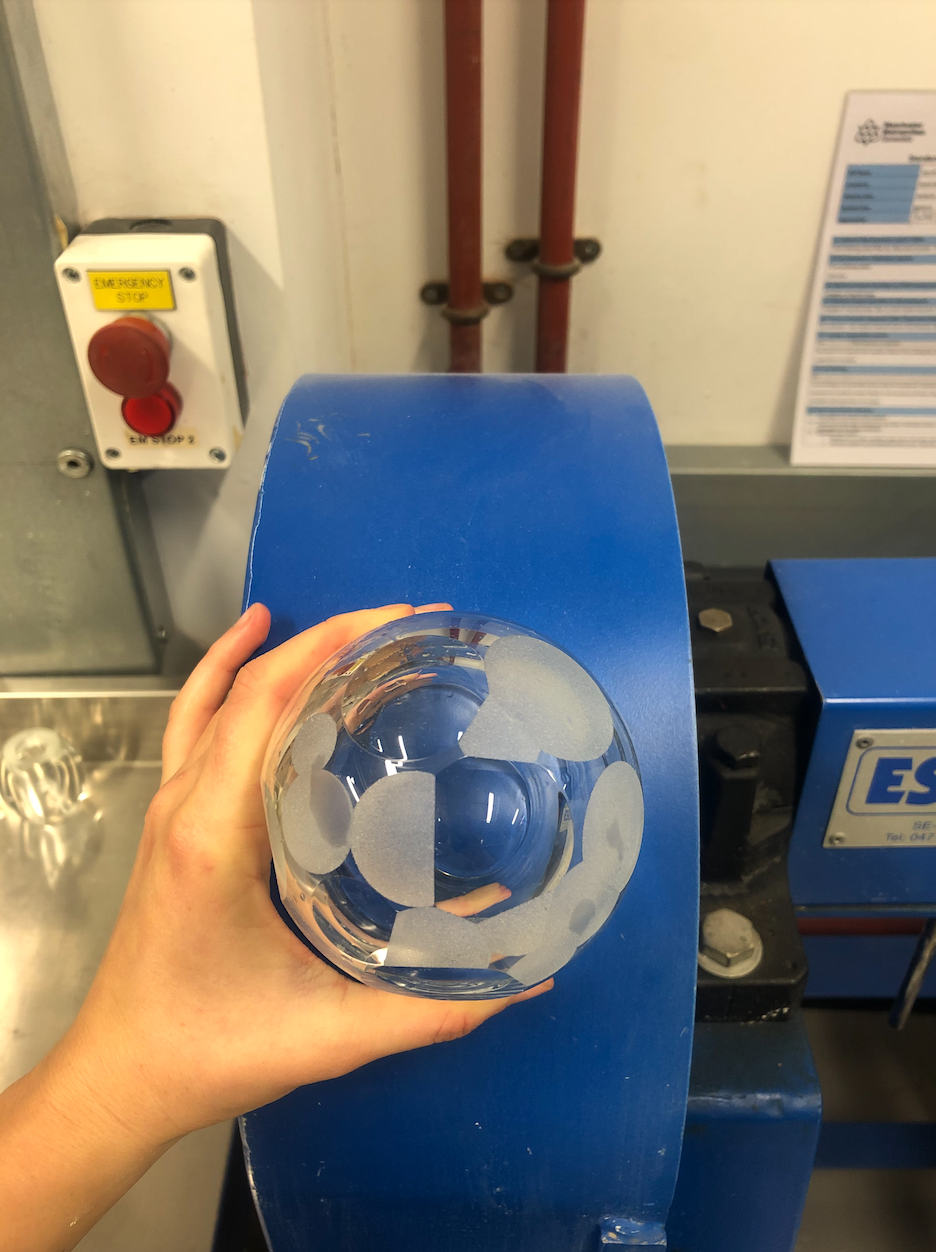
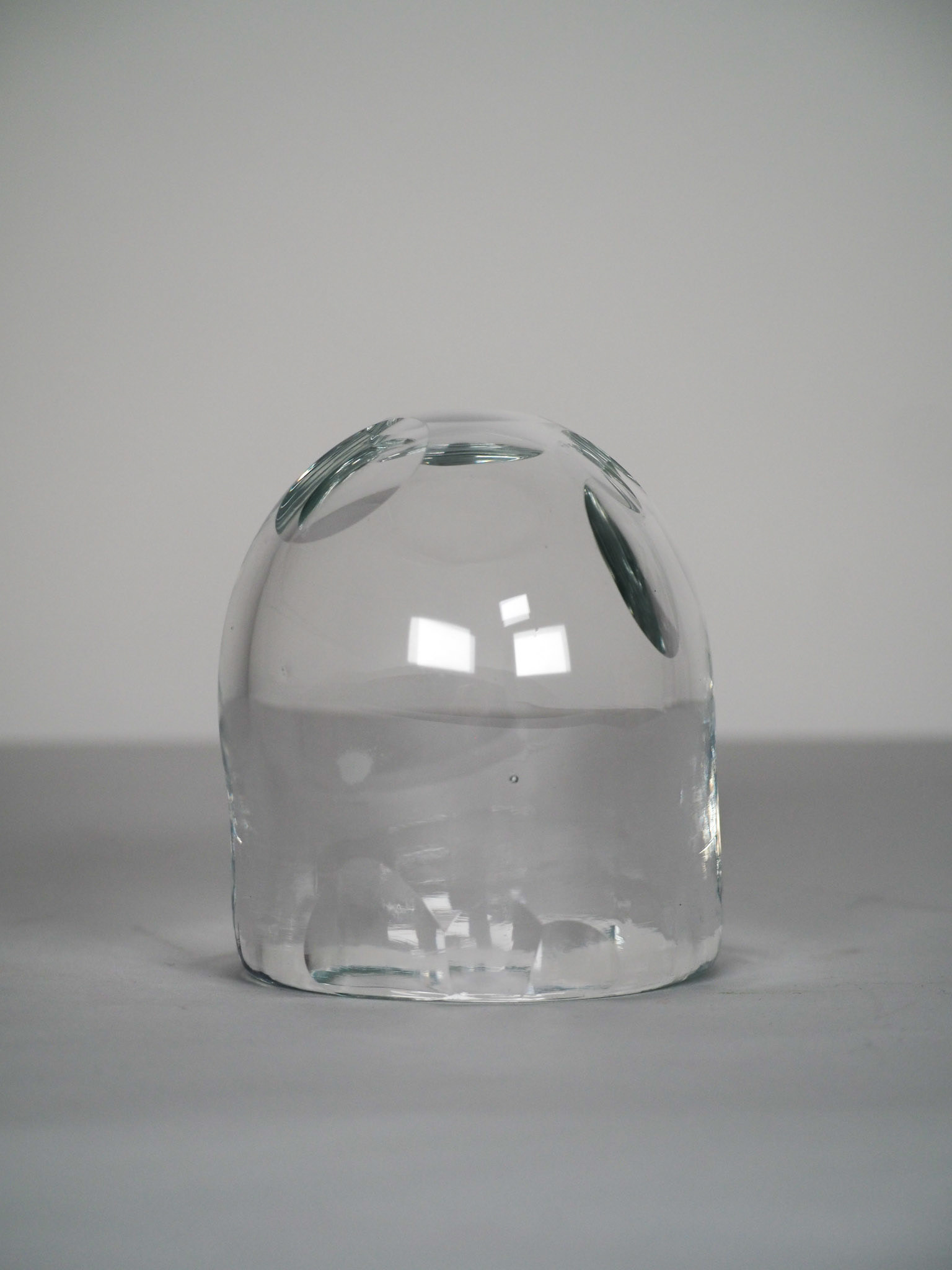

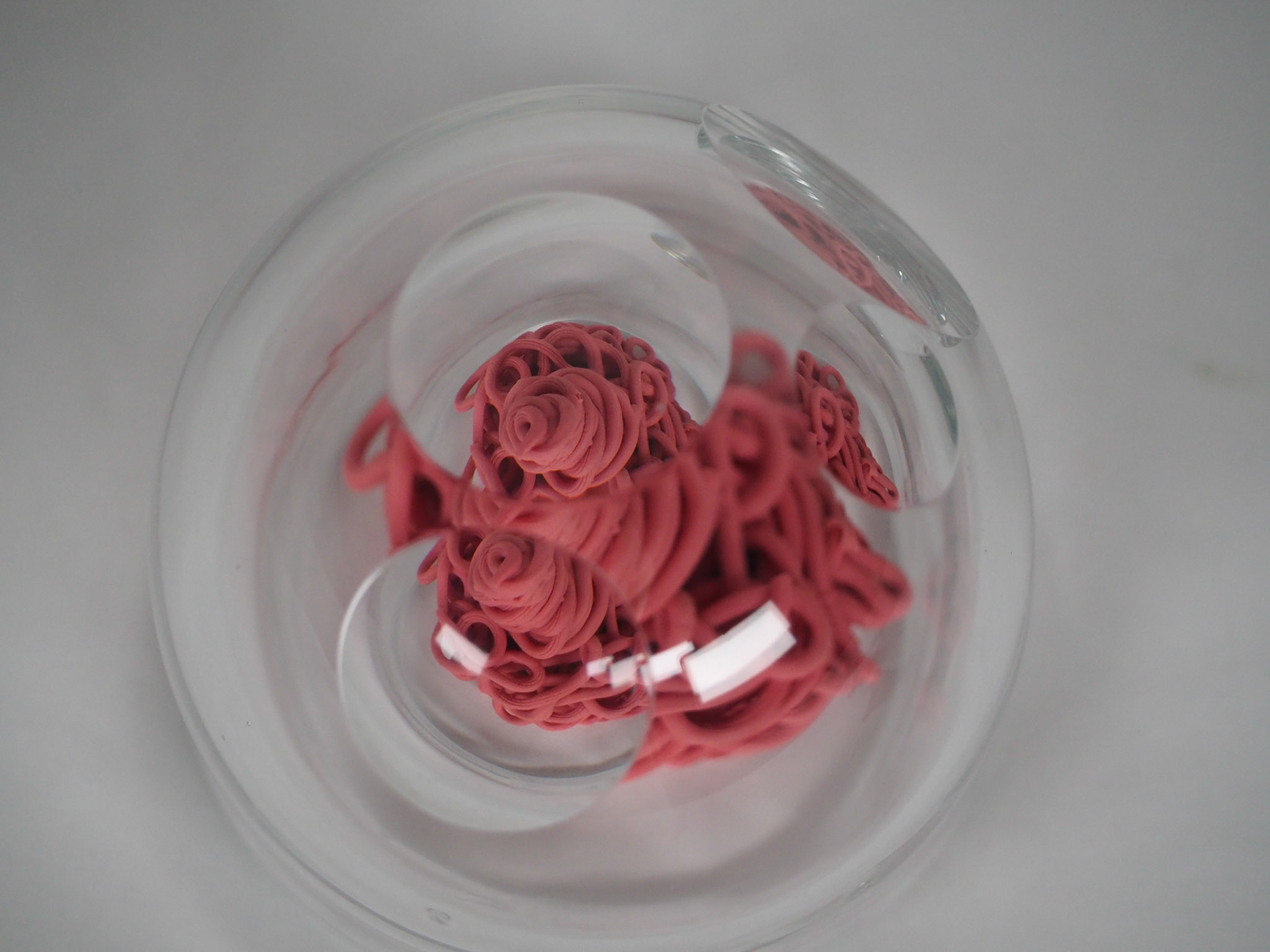


Here I started to further explore the perception of an object by creating lenses in the glass dome so that the image seen through it would be distorted depending on which direction the viewer is looking through. I am happy with how this turned out because it encourages the viewer to interact visually with the piece and move around it in order to change their view. I want to try this on different scales to see what difference it makes to the perceived image of the piece.


After stacking my work and creating these almost totems, I started to notice and record unintended stacks in my surroundings that I could take inspiration from.
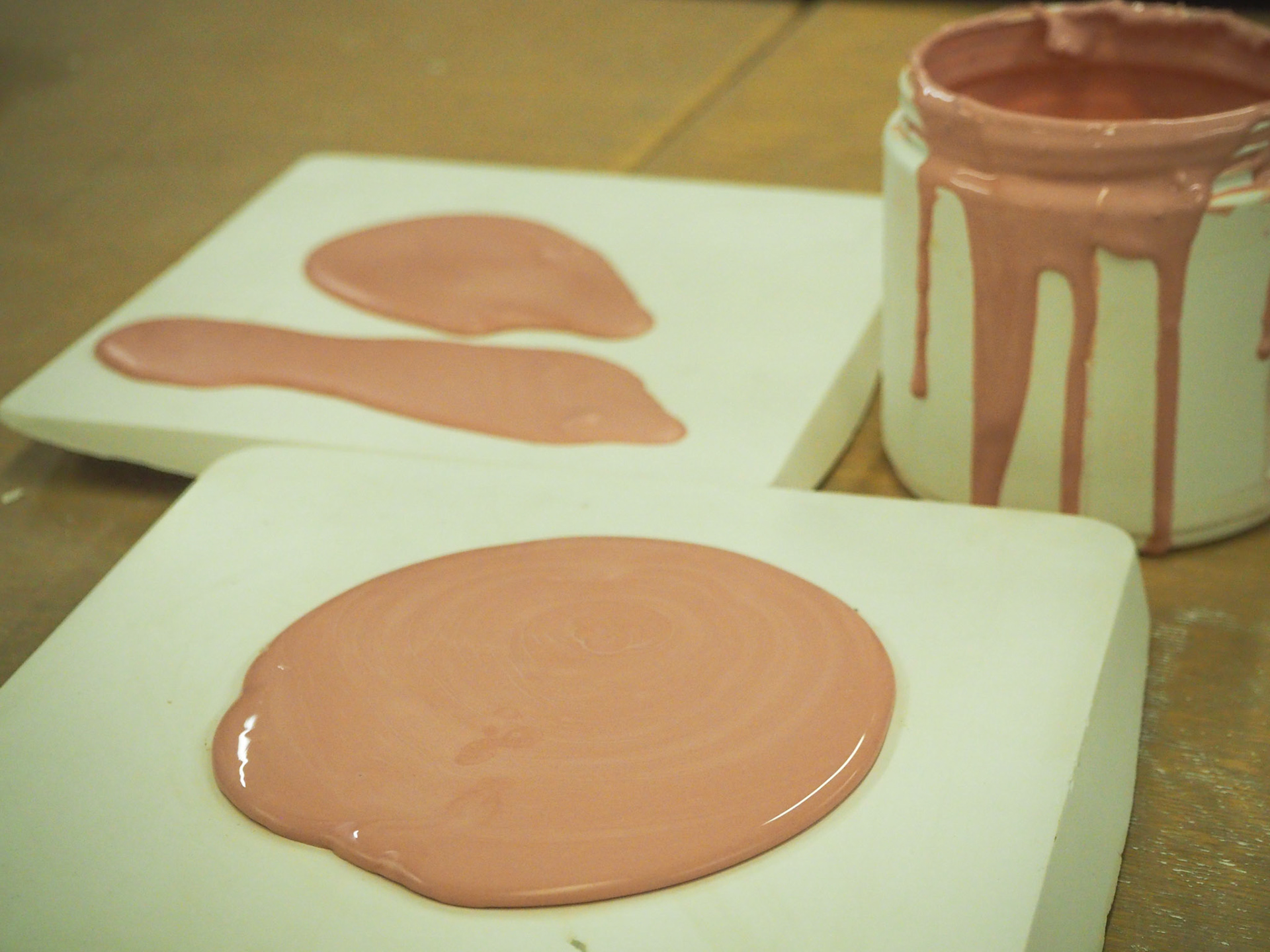


During a tutorial, CJ commented on how all the elements to the stacks are hard - glass and porcelain - this prompted me to consider how I can add softness to the stacks. I tried to achieve this by using porcelain slip and making puddle-like forms wit soft edges.




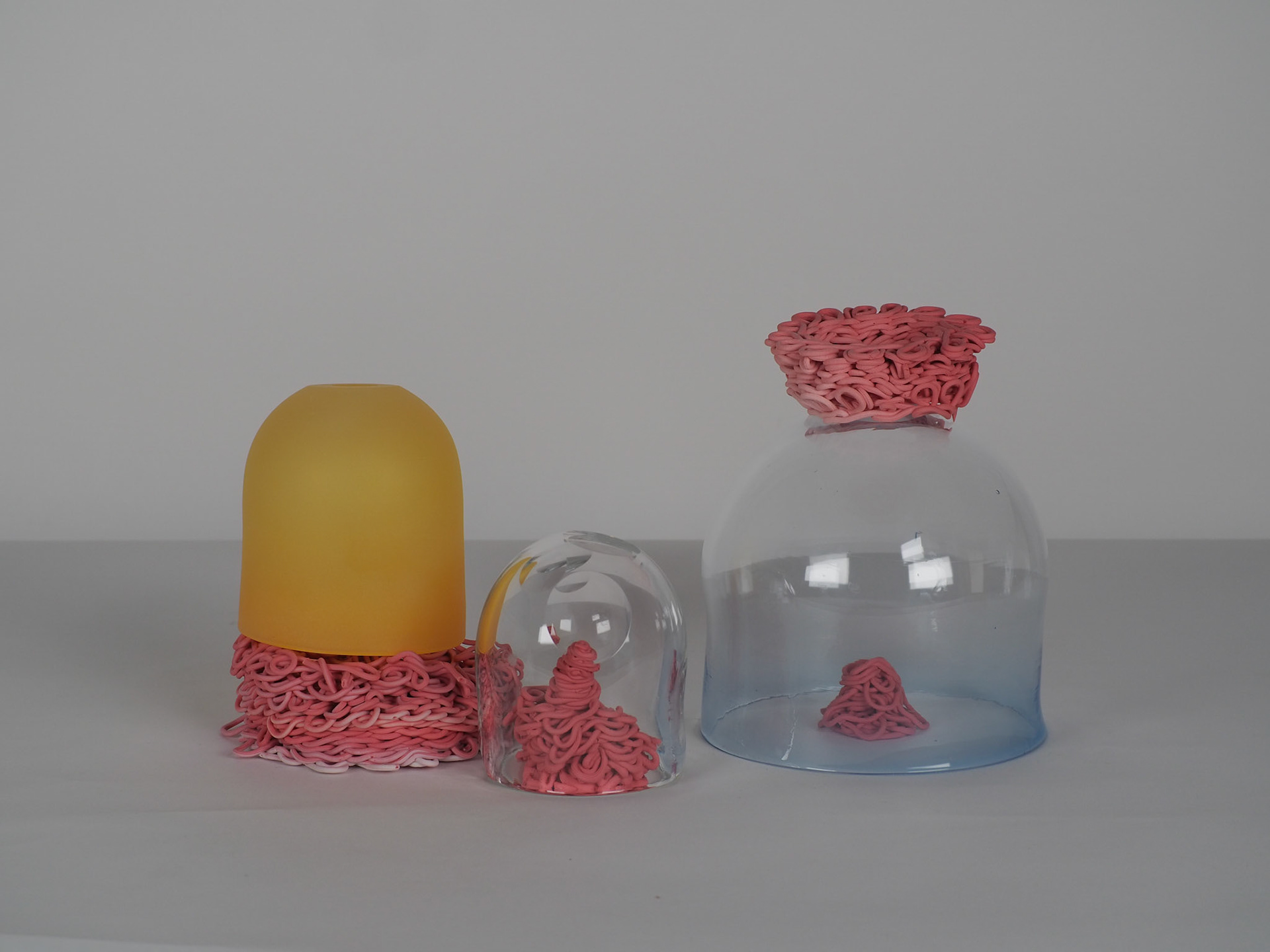

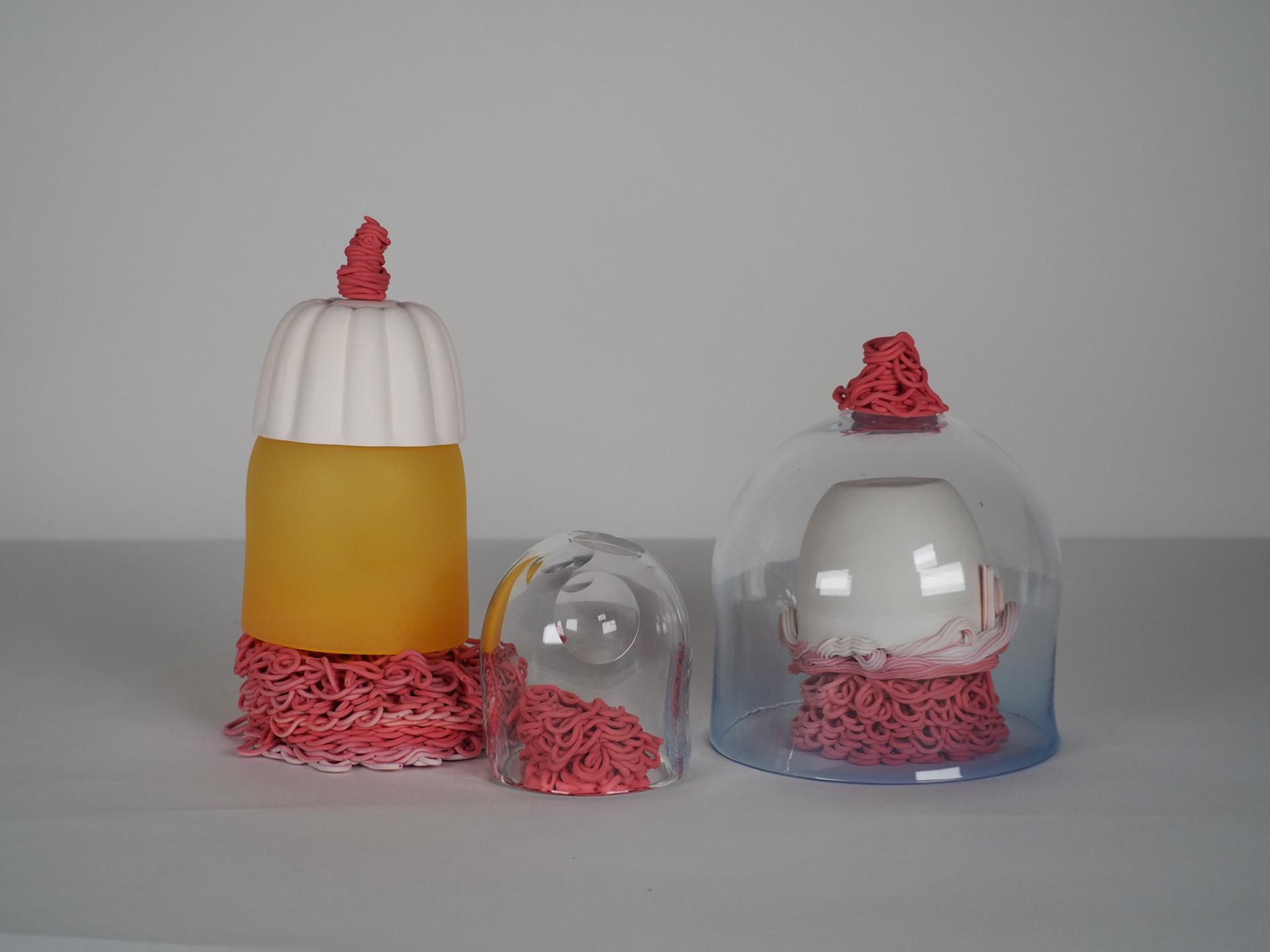
The use of gradients is something I really like because it is another way of adding softness to the pieces.

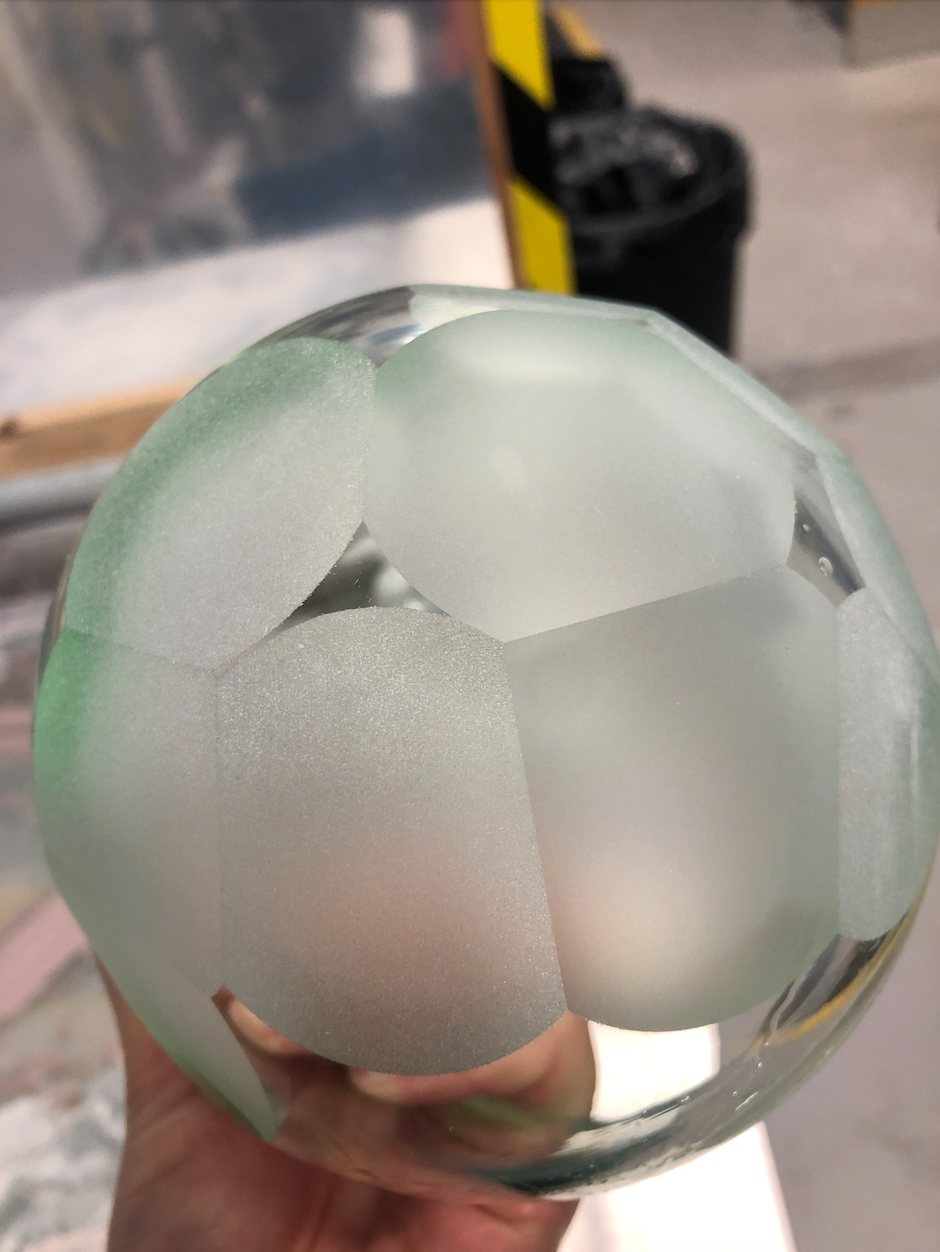
This was an attempt to make smaller lenses in order to see how the perception of the object inside can be changed. However, I made these marks using the diamond wheel and because they were so small, I when I moved onto the next wheel to start to polish the lenses, I found that I couldn't accurately place the wheel in she same place as before. At first I carried on but it soon became clear I didn't have the abilities to polish the glass to a standard I would be happy with. I decided to do bigger lenses so that I can polish them to a better standard in order to make more refined work.

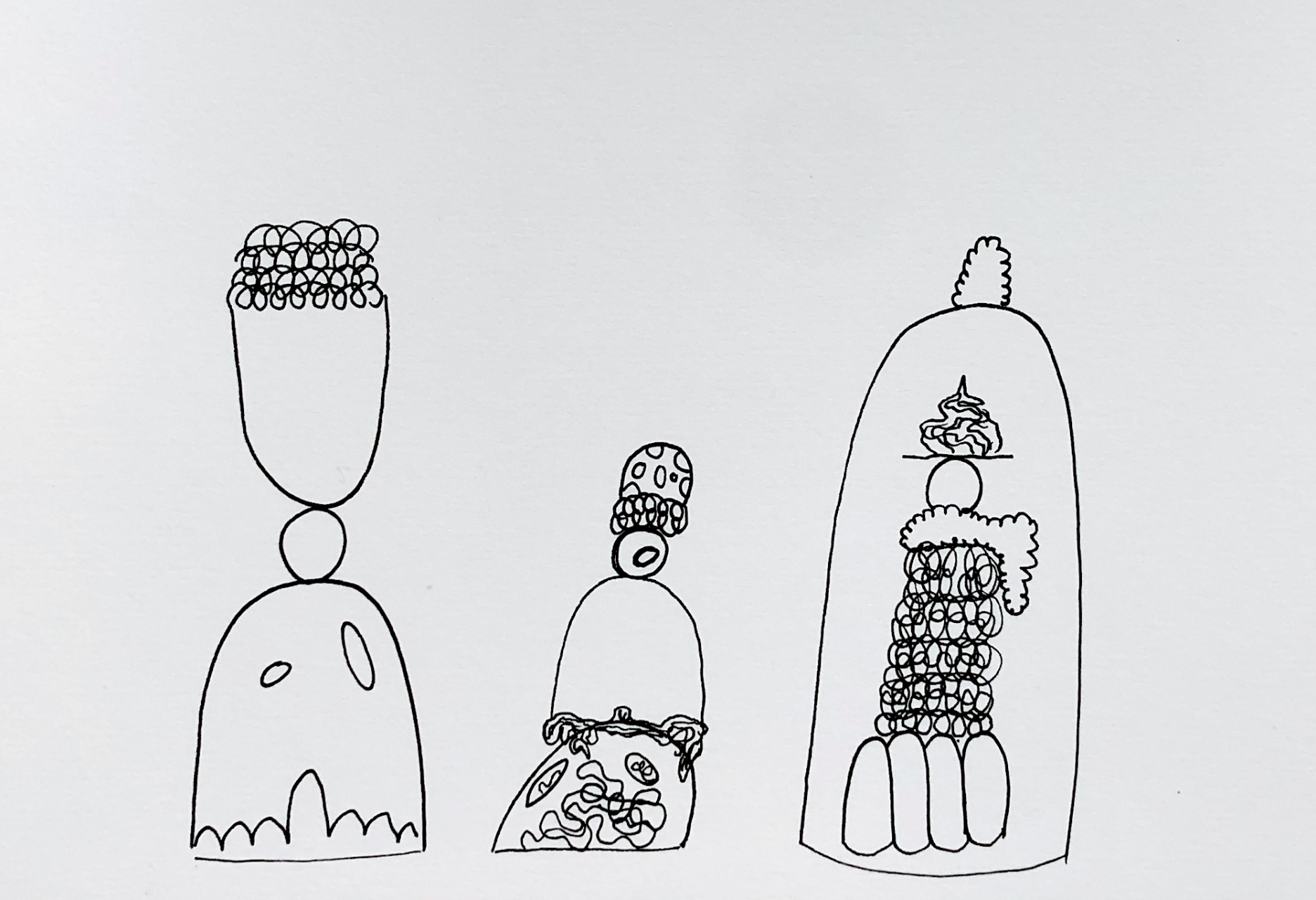
Ideas for stacks. These drawings include glass domes, piped ceramic forms, blown glass forms, porcelain and felted sections

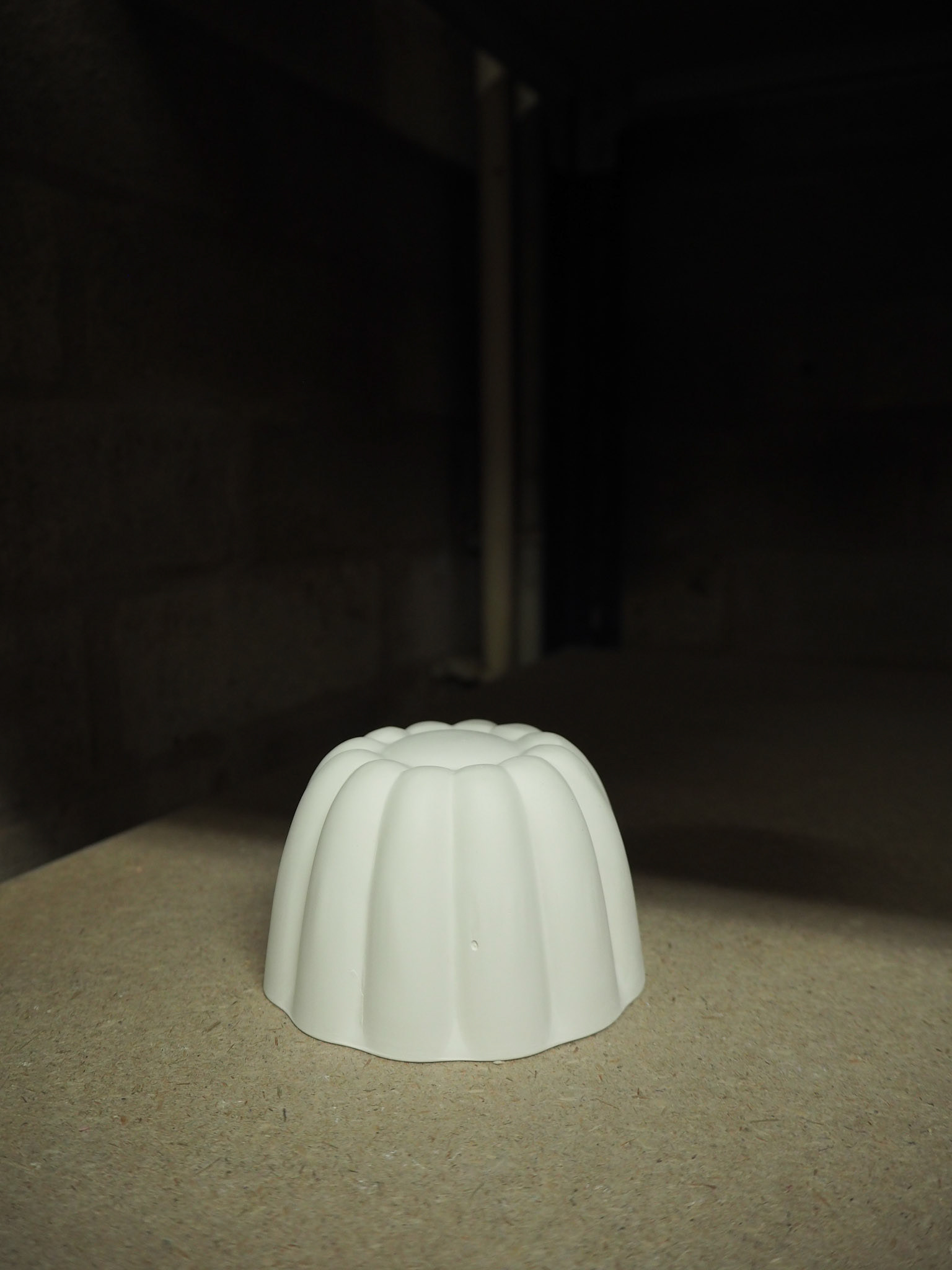
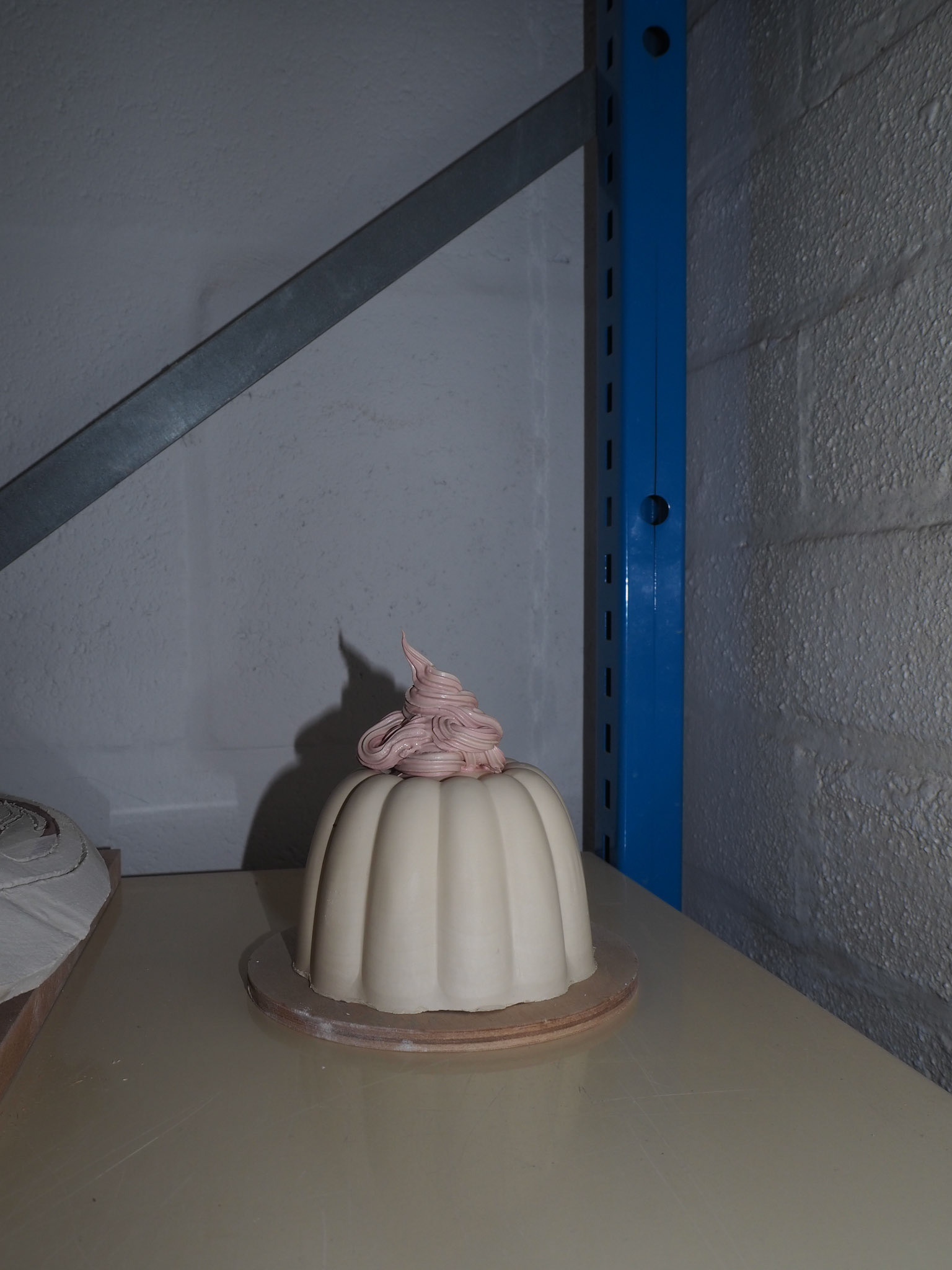
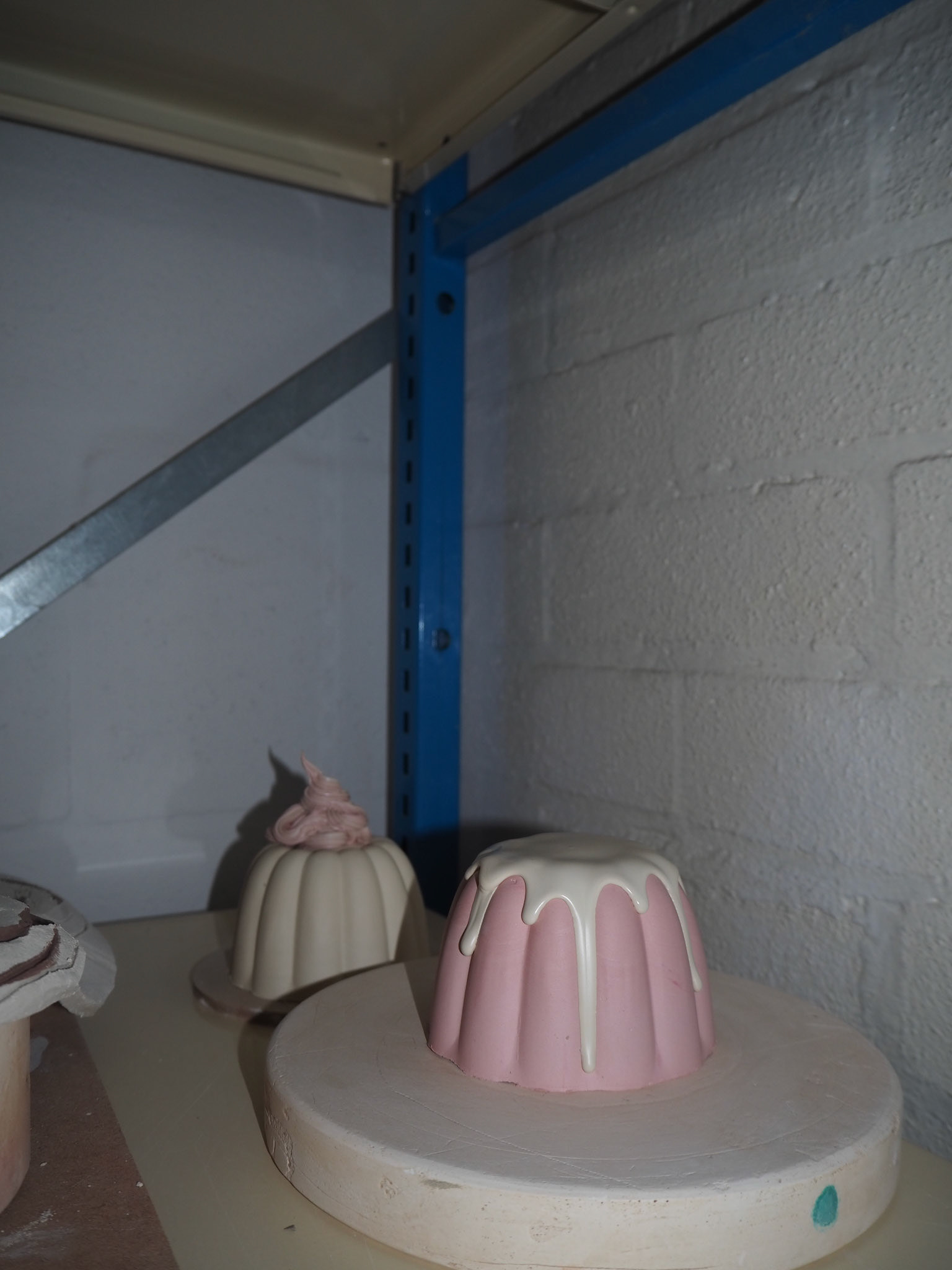
Part of my playful approach to making is taking objects or processes out of their intended context and into one where they don't belong. This helps me to change the perception of the piece. I made a plaster mould out of a jelly mould with this in mind but I'm starting to think I've taken the edible elements of my practice too literally. I want there to be an undertone of perceived edibility but I think these slipcasts are a little too edible-looking. I have also made a mould with 50% molochite and 50% plaster to blow glass into so I am intrigued to see whether this is too literal too.
Blowing into the 50% molochite 50% plaster mould.
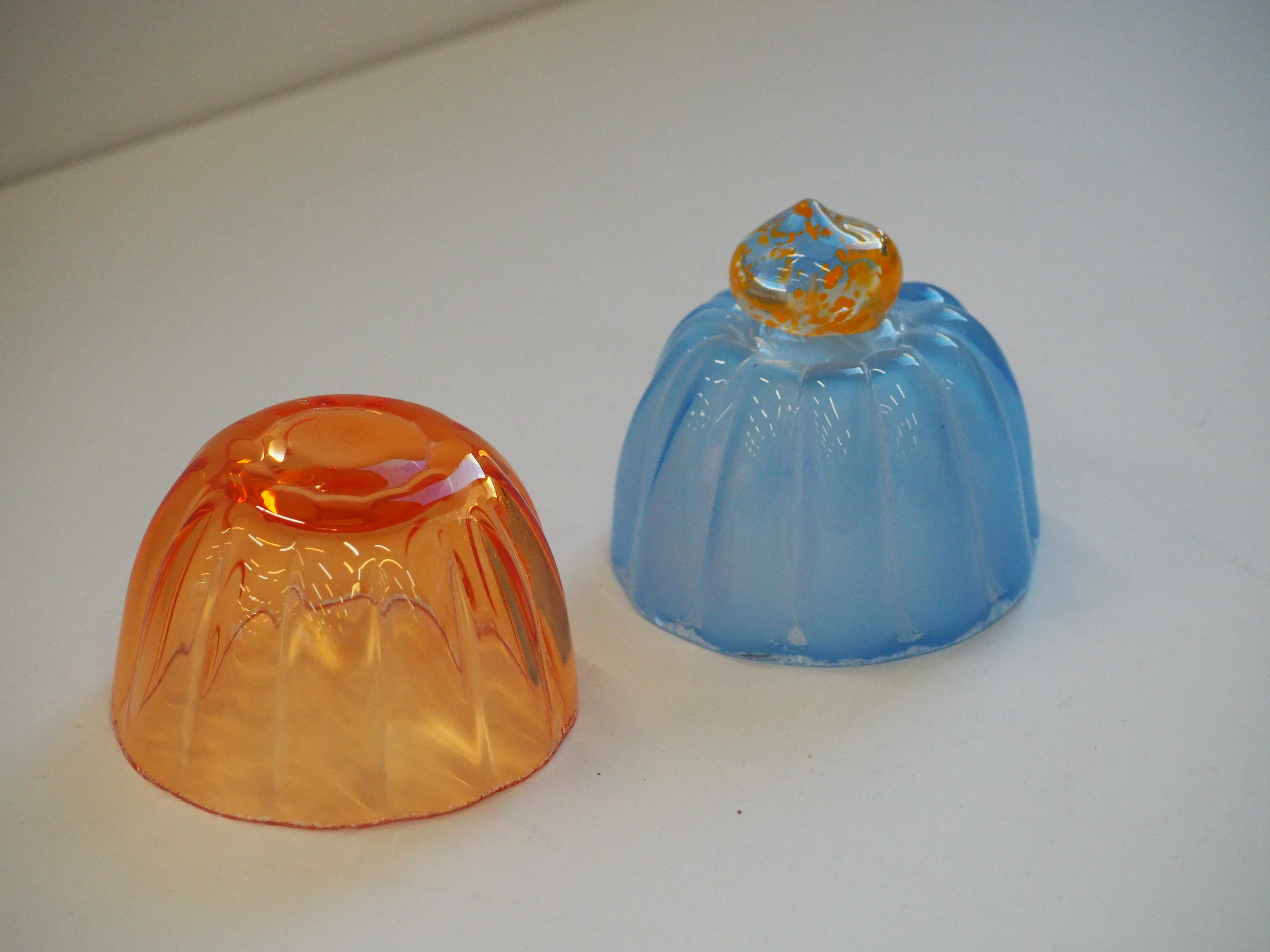

Results from blowing into the plaster mould. I don't think the blue works with the shape of the mould because it it doesn't look like jelly, however the translucent red looks quite realistic which I am happy about because this could be used to play with the perception of an object. I still think this might be a little too obvious but maybe if placed into a stack it could be an interesting component - we shall see.
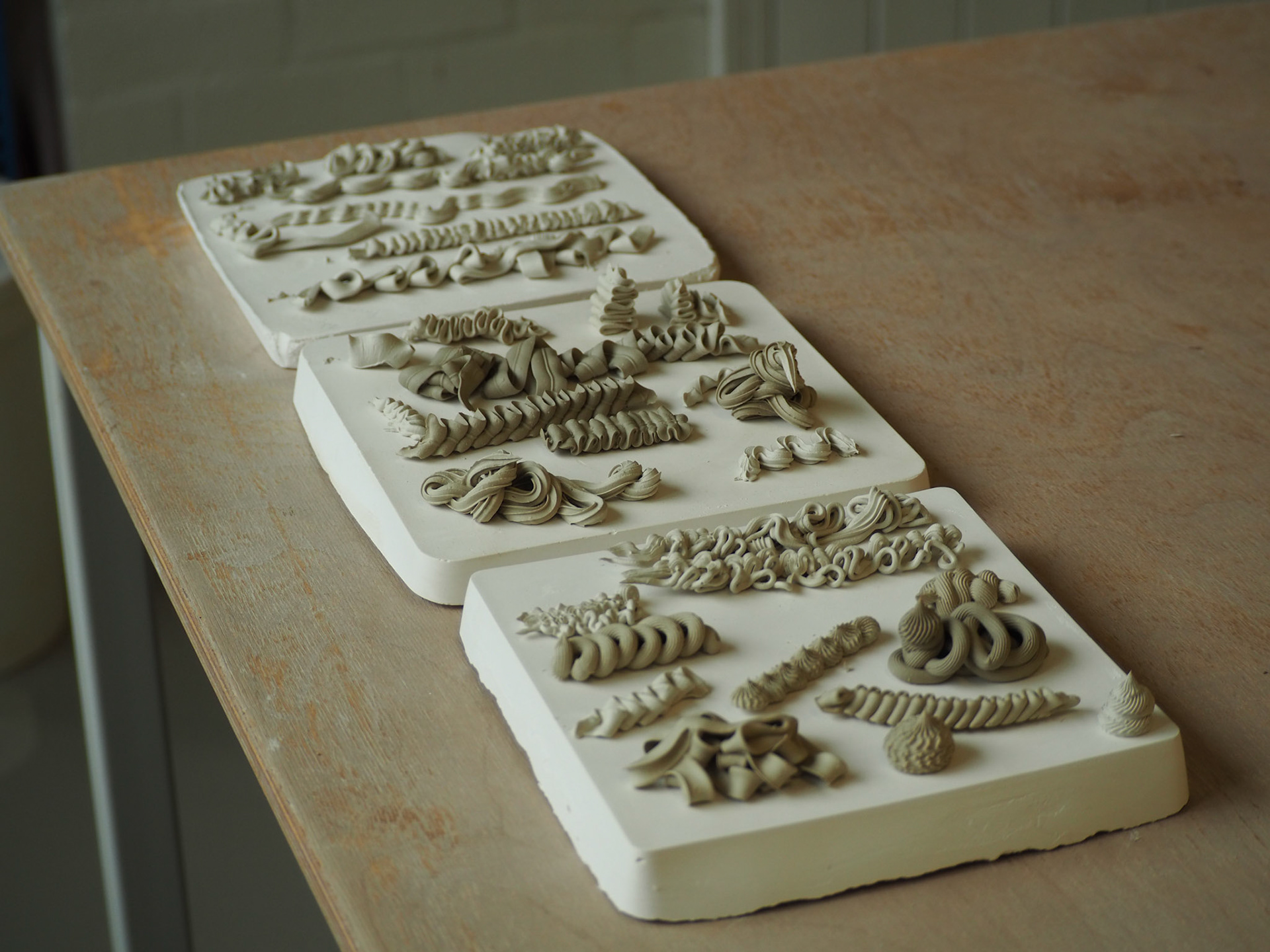
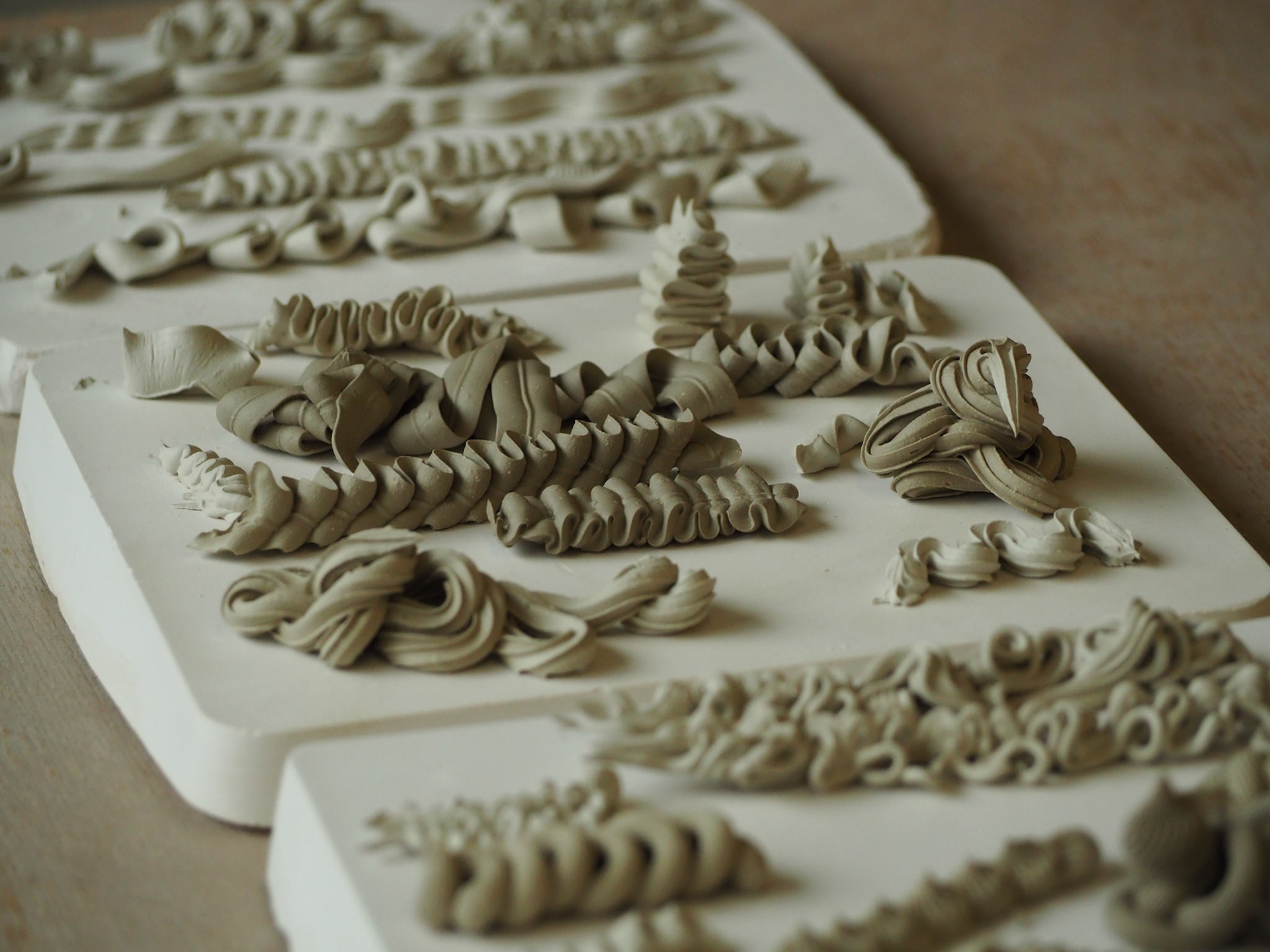
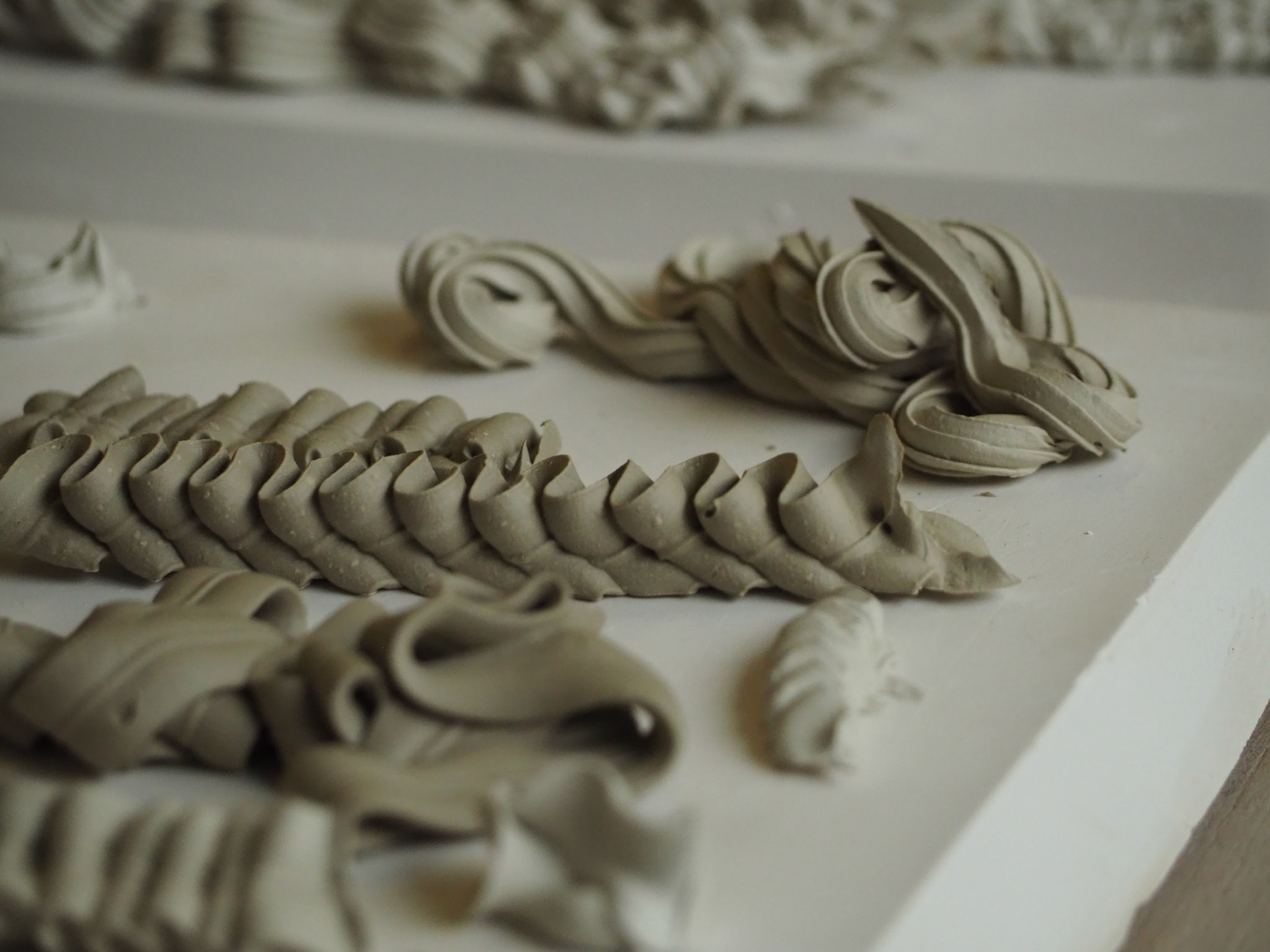
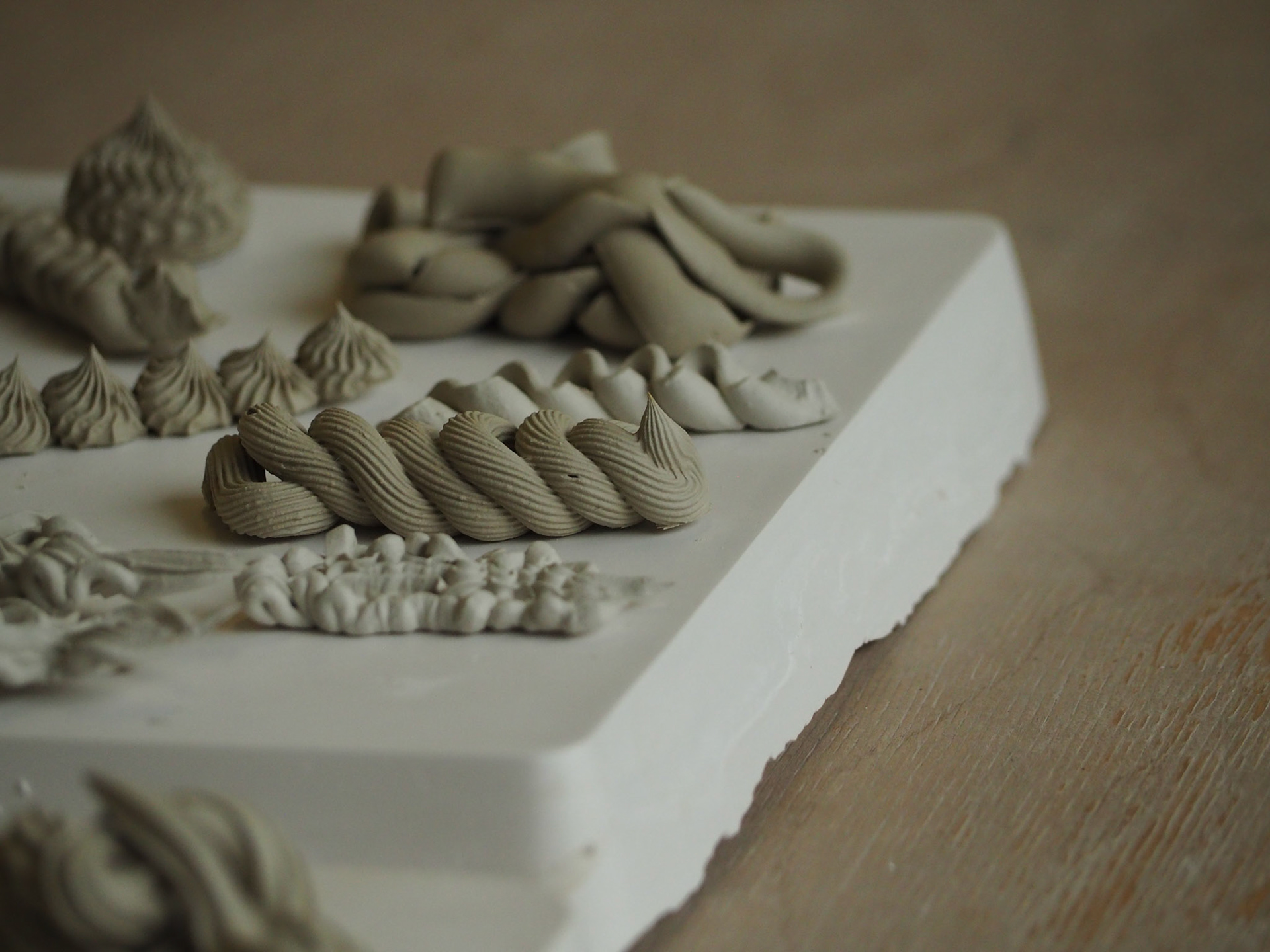
Testing different piping nozzles to see the difference in texture.
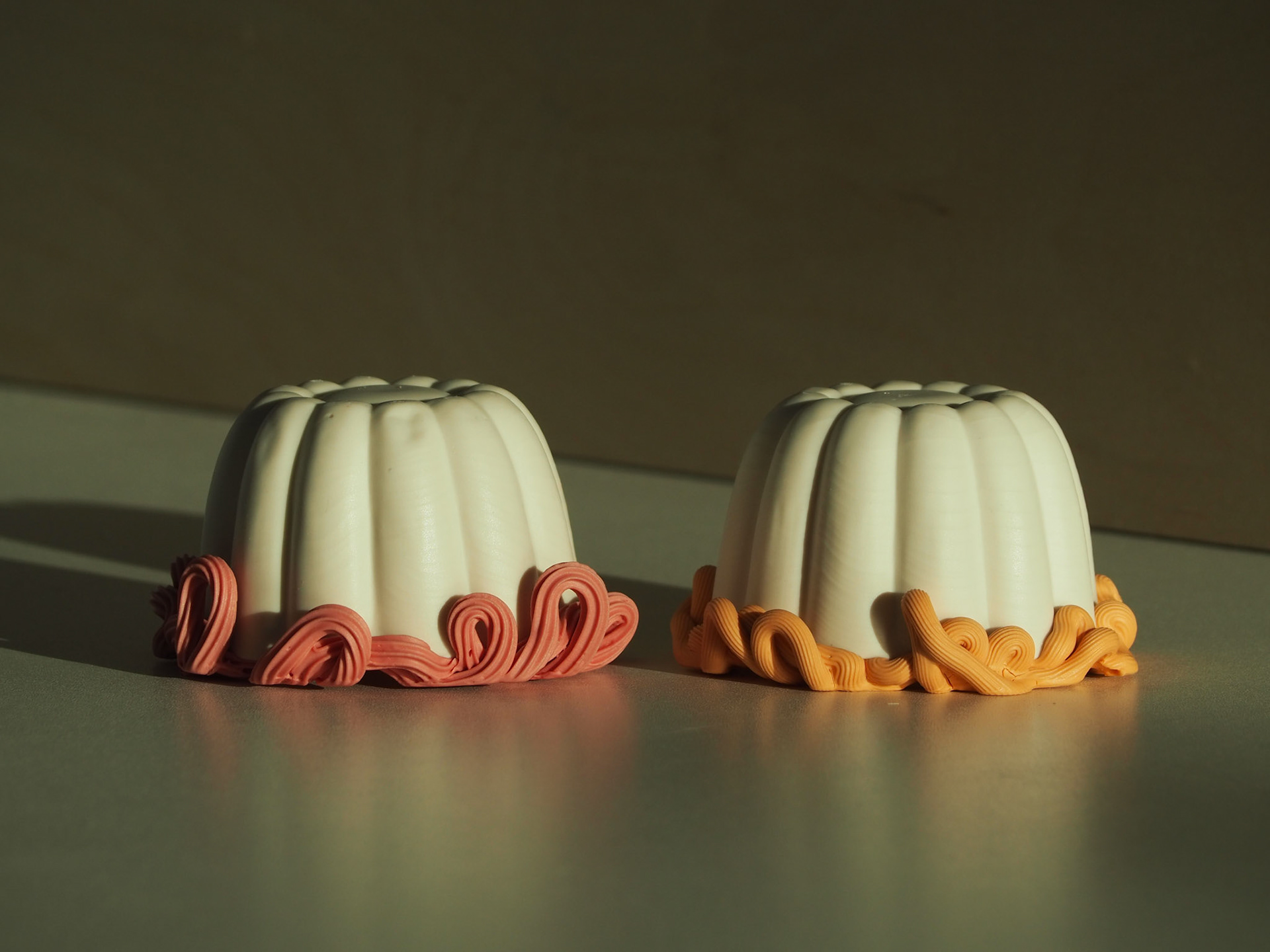
Piping to add decoration to the slipcasts in order to add a generosity of texture.


My delivery of equipment arrived which meant that I could continue with my ceramic work. I used the same technique as before but altered the direction of the loops onto the inside of the piece instead of the outside, This revealed the knitted pattern that was on the inside my previous pieces. I worked slowly when making this, allowing small sections to partly dry before adding more. I am pleased with how consistent I managed to keep it, all my other work made in similar ways always slumped so this felt like an achievement. Although, there were lots of small air bubbles in the slip - this is something for me to work on.
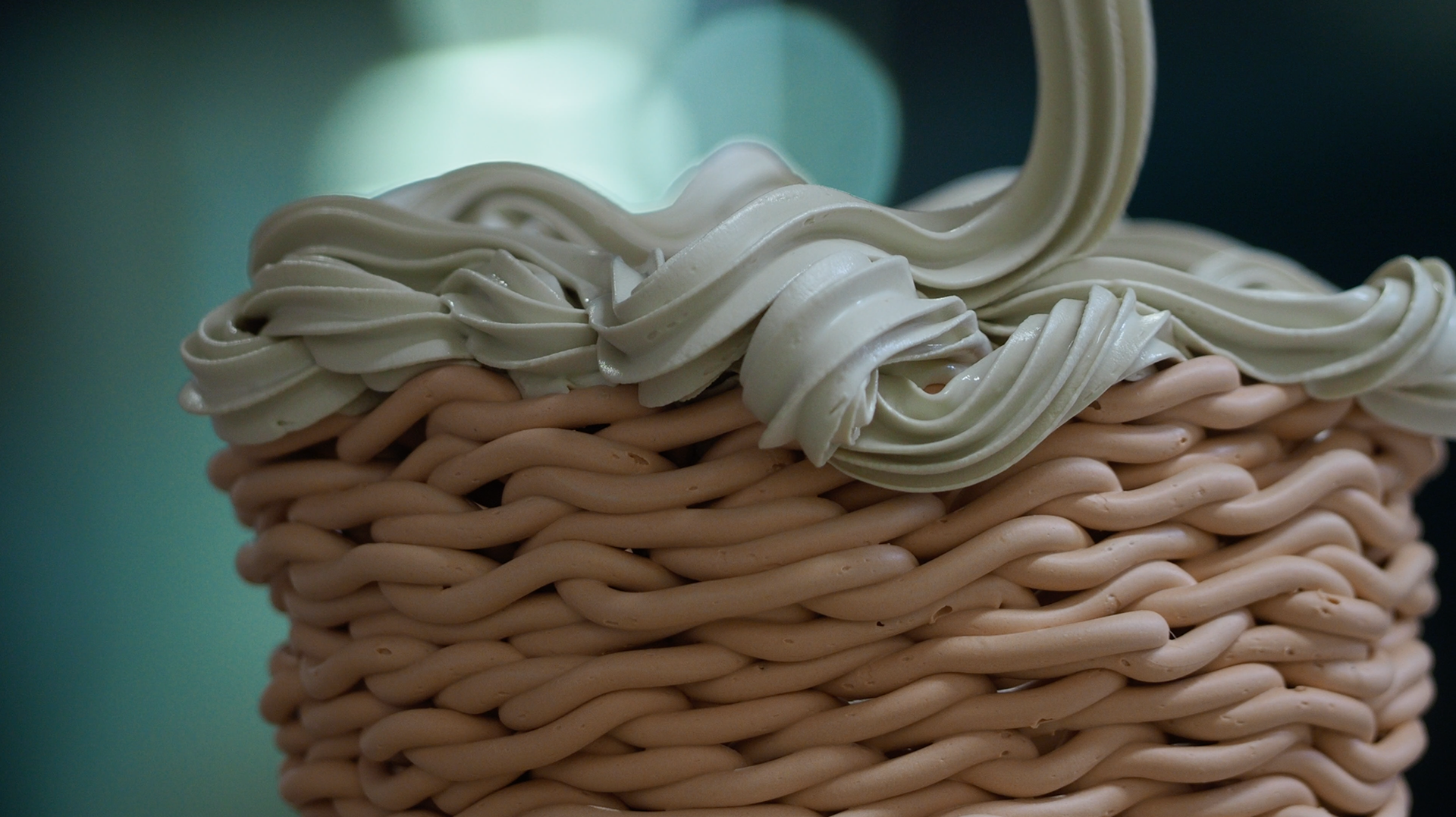

I tried adding a piped top but there were too many textures and the piece became too busy, I then tried piping without texture but it contrasted too much with the delicacy of the rest of the piece so I removed it.
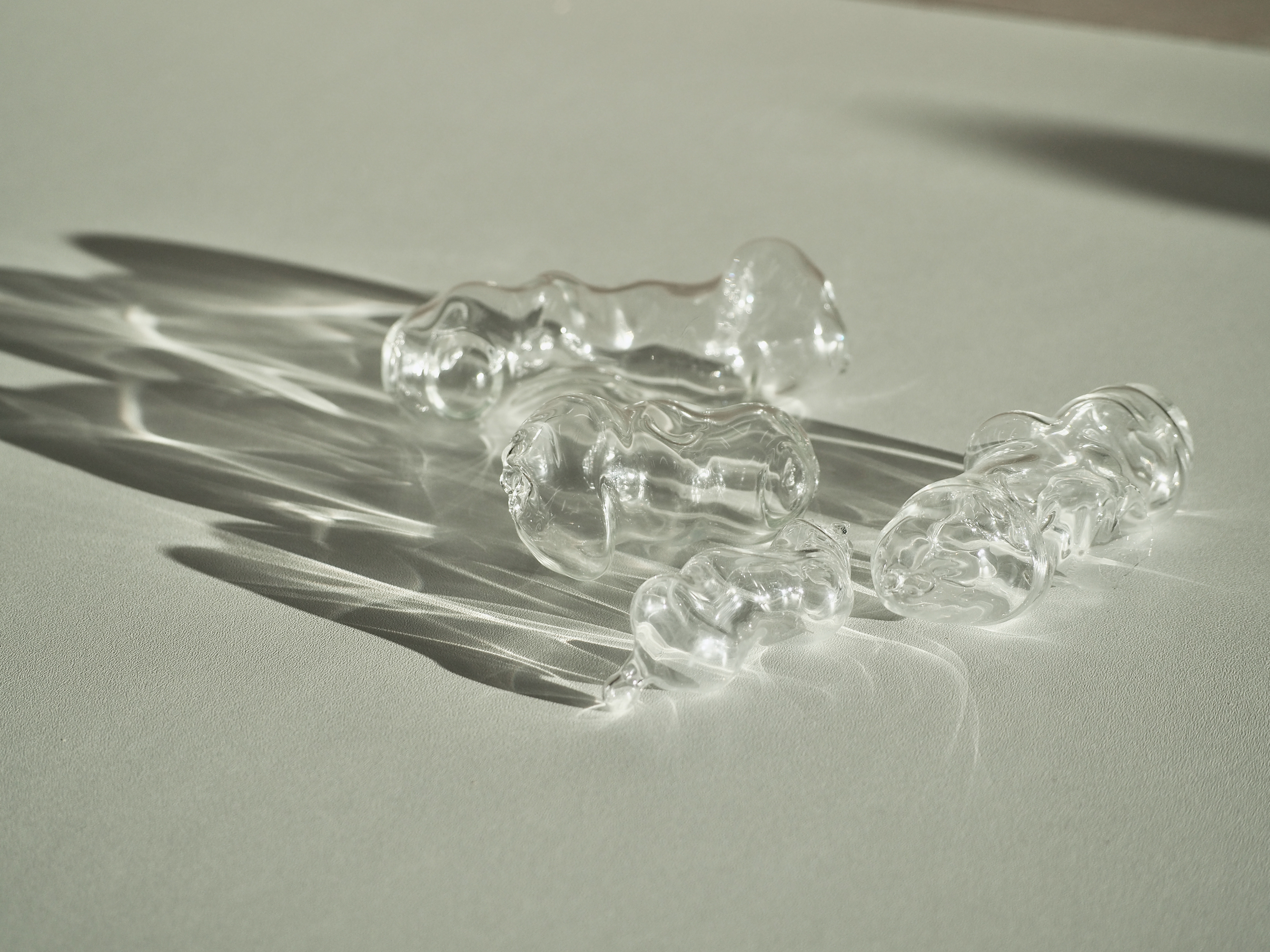

Looking at how light bounces through the glass pieces.
I have come to realise that a big part of my making processes in both glass and ceramic is about capturing movement in a still object. For example, when I pipe in ceramics, the slip slumps with gravity and this movement is frozen when the slip dries. There is an intrigue here for me as to how this comes across visually, this is another way I can play with the perception of an object. This is also true for these lampworked pieces, the process of making these is very reminiscent of blowing bubbles as a child, turning this whisper of playfulness into permanent object.
I found light to be a useful tool to highlight the that movement I am aiming to bring attention to, unseen movement, chaos.
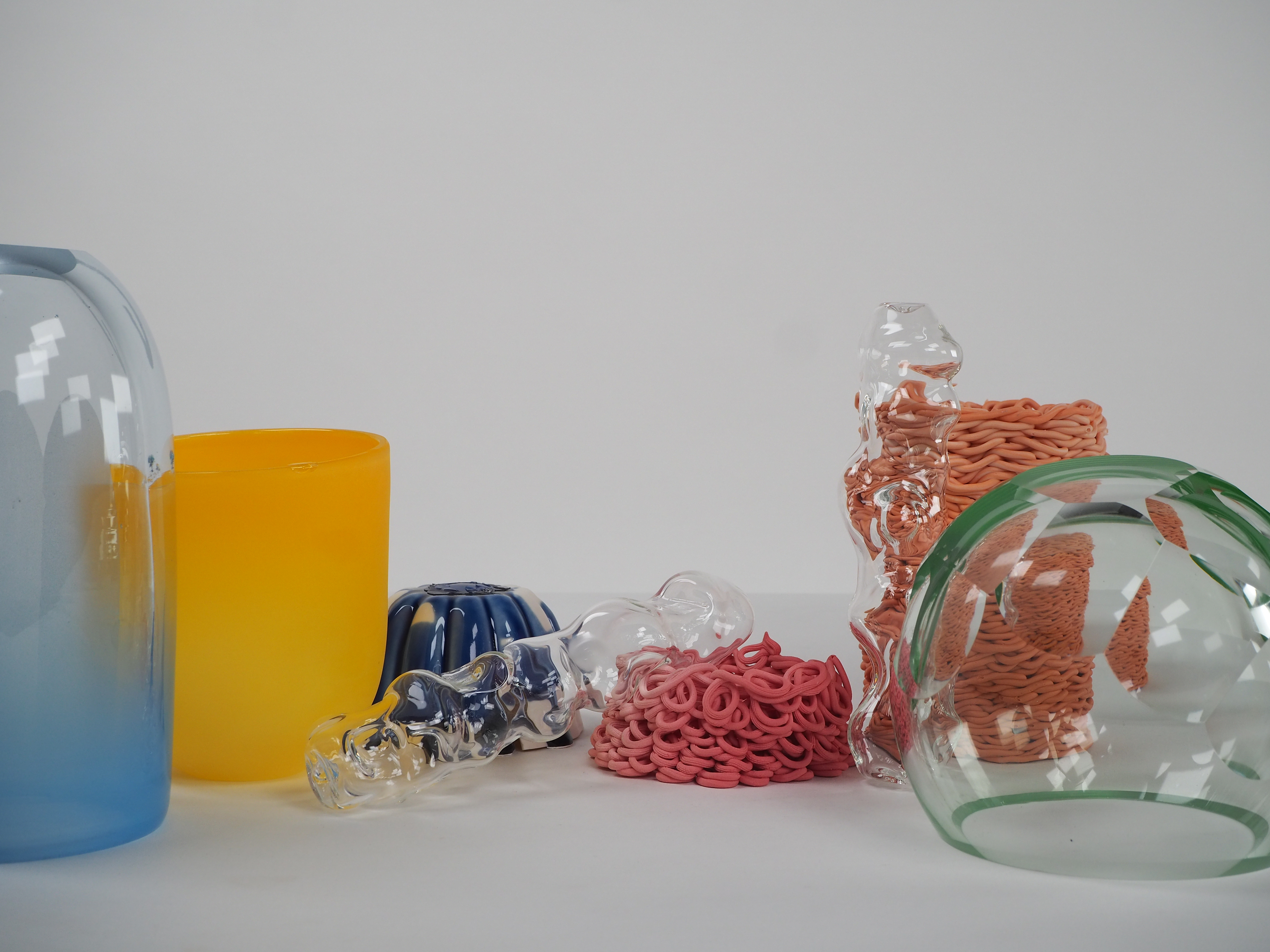
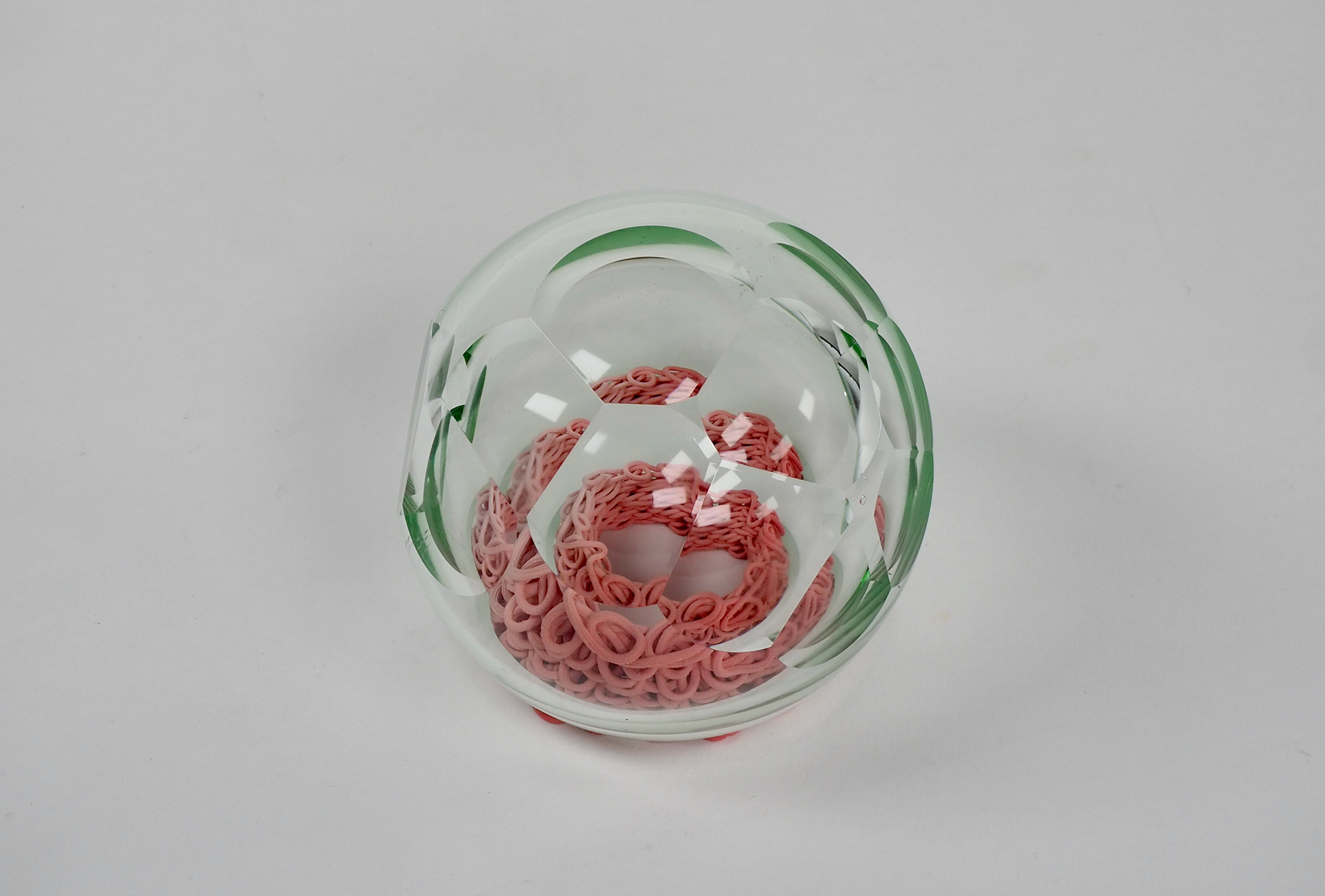

Work In Process - Reflection on the project so far
I am proud of the work I have produced for the work in progress show, there have been a few times this year where I have thought I may be making with too many processes, which could be at the detriment to the overall quality of my work. I was worried I was going to be a 'Jack of all trades, master of none' if you will. However, I think I have proved to myself that I have the determination to execute each component to a quality that I can be proud of. I think the objects I have produced are a resolved response to playfulness in making through the lens of childhood.
In terms of the curation of my work, I had a few ideas of how I would like to curate some tests as my work in progress exhibition, but after seeing the shelves I felt that stacking too many things on top of each other was not a practical decision. I therefore chose to exhibit a more resolved collection of pieces in a stack.
On reflection, I feel I have made a resolved series of work in terms of the motivation behind my work. I feel that my work accurately represents a playful approach to making and exists to distract from the formality of the everyday by playing with the percieved. However, visually, there is a lot going on, I think I need to figure out what elements are the most important and focus on those, really fine tuning the collection.
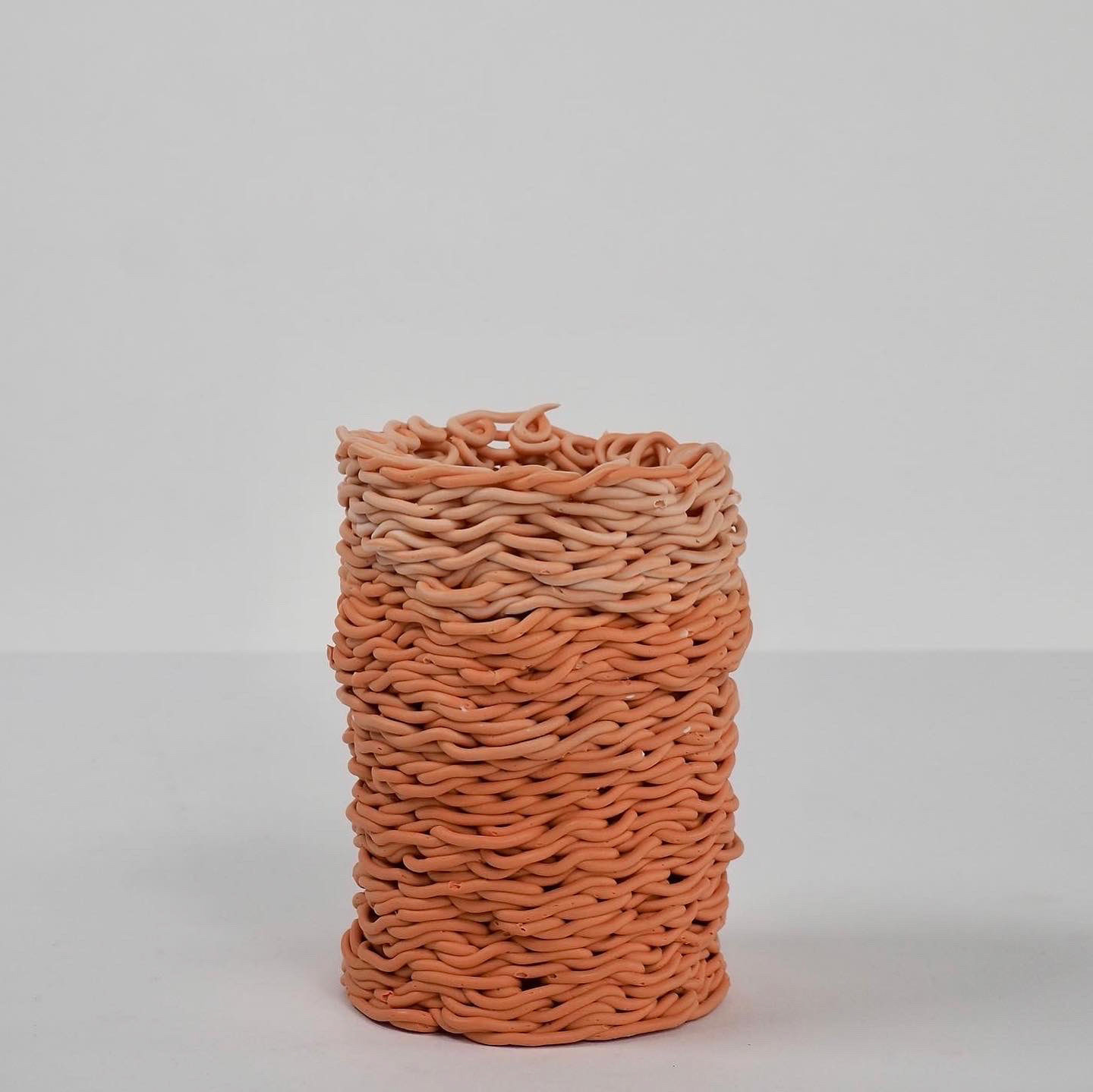

A big part of my project is to create objects that distract form the formality of the everyday, in order to achieve this I need to make objects that can be interacted with visually and create some sort of lense that changes the perception of the object. So far I have been doing this by cold working lenses into the glass pieces which distorts the image seen by the viewer. Another way I could do this is by making irregular curved glass pieces, here the borosilicate pieces morph the image seen through the glass, reminding me of the distorting mirrors that you see at fun fares. In order to explore this further I want to make a piece similar to these but much bigger, so that it can sit all the way around the ceramic piece and distort the image inside.

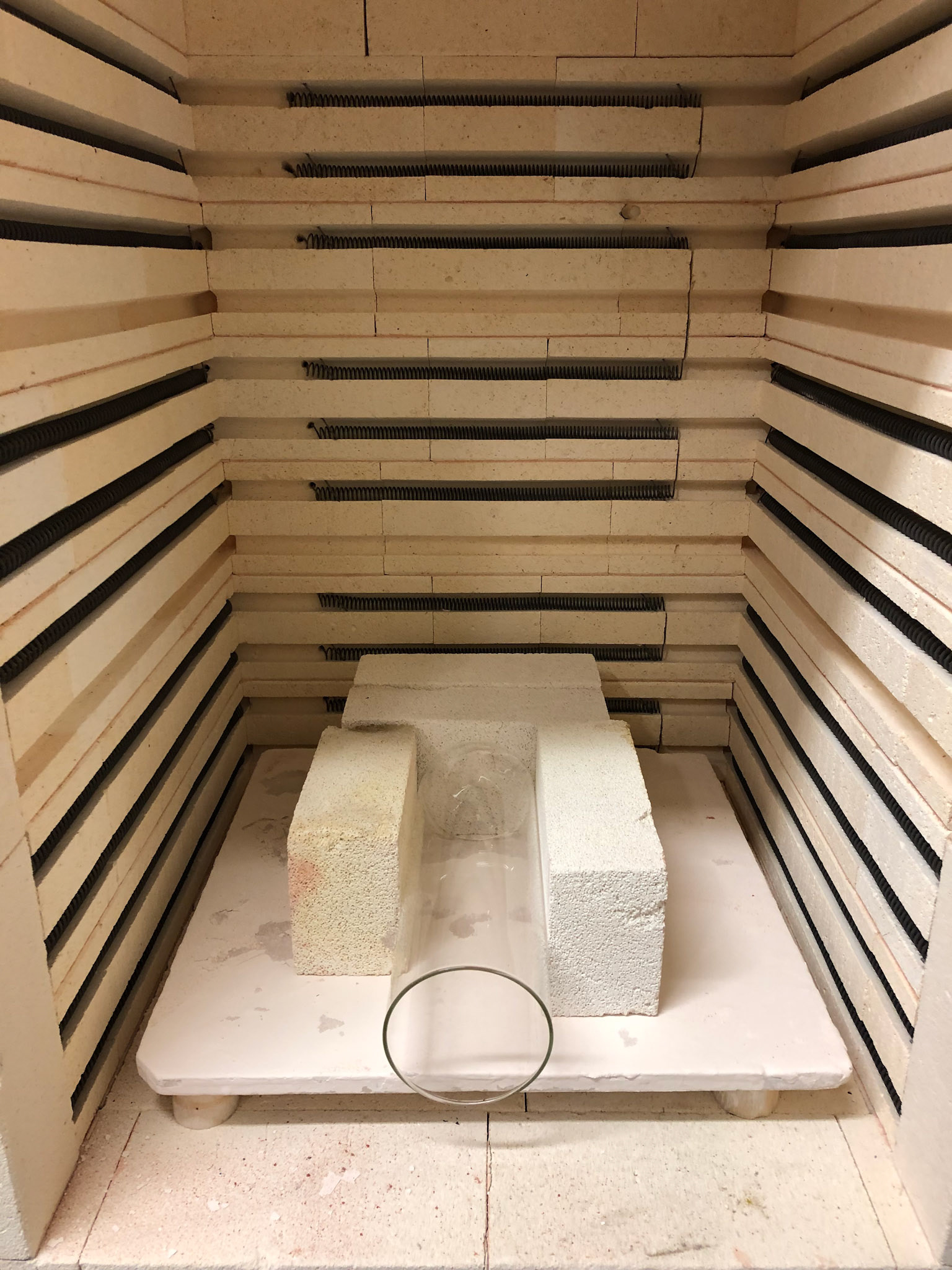

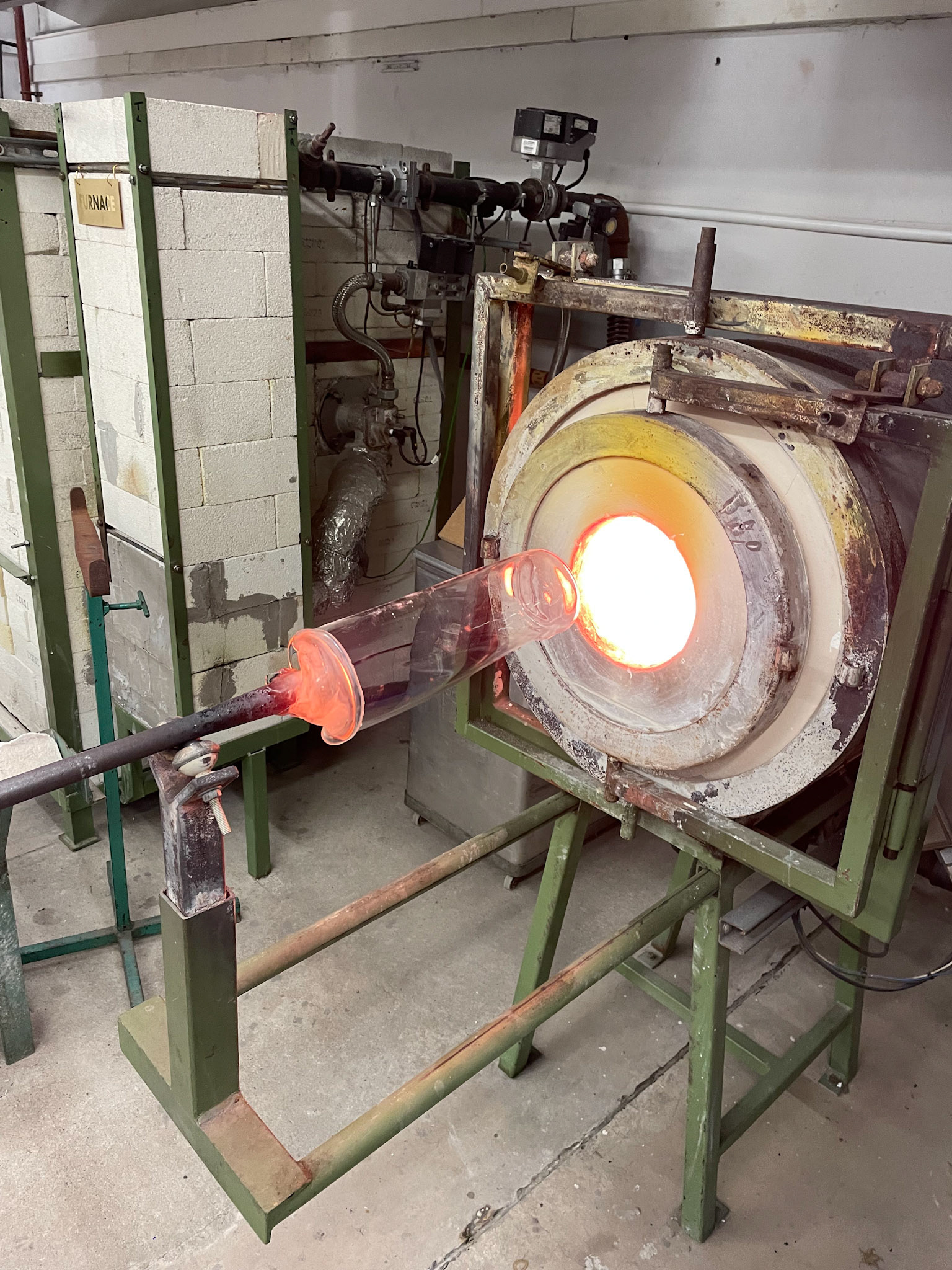
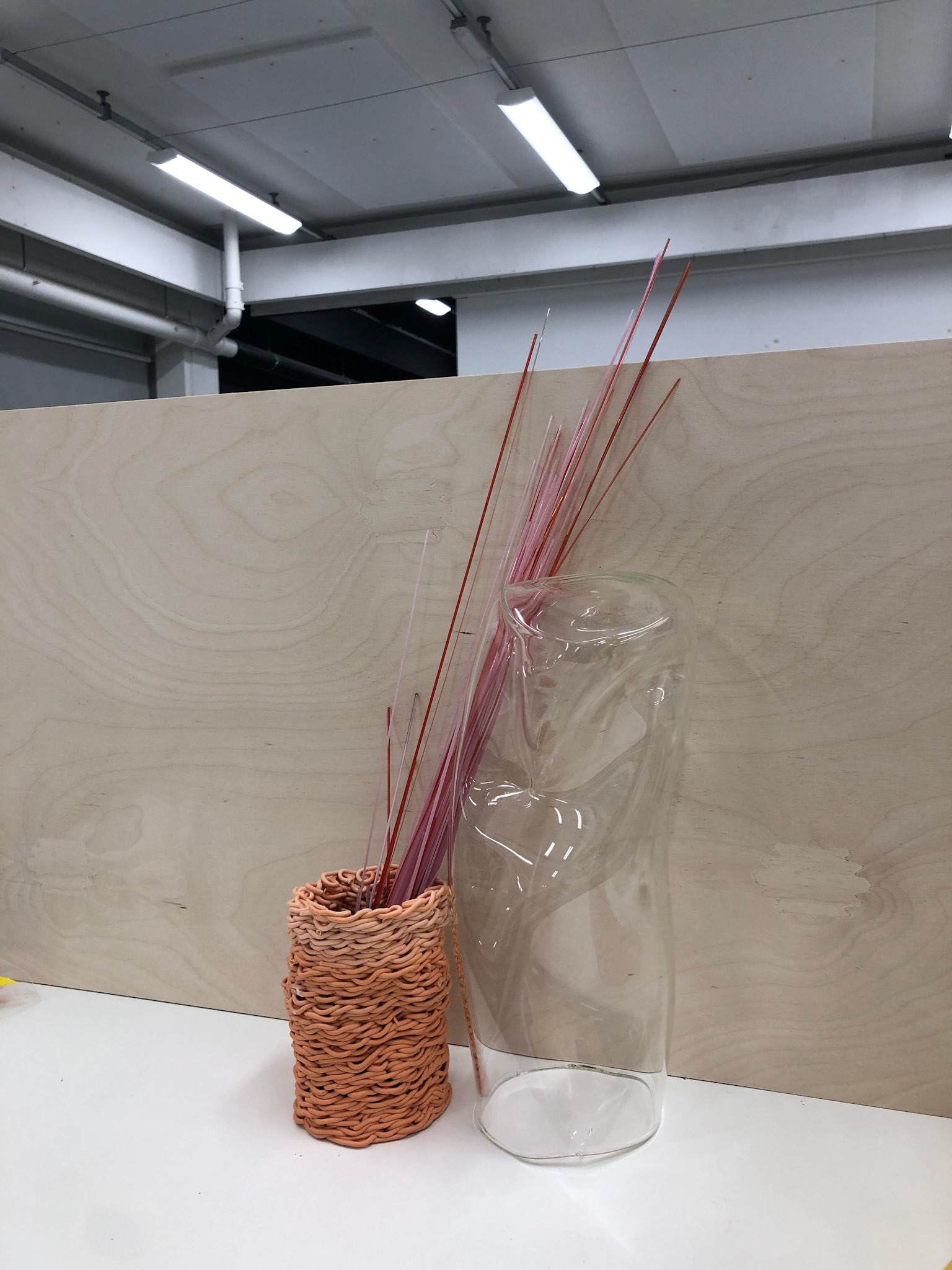
Some of the feedback I got after the work in progress show was to scale up. Part of my WIP work that I was really happy with was the borosilicate glass cloud-like forms so I decided to scale them up. I tried lamp working them using bigger tubes and a balloon to blow through in order to create a seal but the tube got too hot to handle. Through this I discovered that in order to scale up it would need to be in the hot shop.
I broke up one of the borosilicate tubes into shards and warmed it up to 550 degrees in the lehr and gradually picked up the shards into a blowpipe. This proved very difficult because borosilicate glass's melting point is much higher than the glass normally used in the hot shop but I eventually had enough glass on the end to work with. This took a very long time and getting it to be hot enough to flow using the glory proved to be very tiresome. I used this glass to blow a bubble and make a collar that would fit around the edge of the borosilicate tube that was warming up to 560 degrees in another kiln. After some failed attempts, I managed to get the tube onto the blowpipe but it was very long and hard to control. It naturally distorted itself in the glory with the heat.
I was happy with the result but I wasn't able to distort it as much as I would've wanted to because it was so hard to control and I had used up so much energy making the collar out of the borosilicate glass.
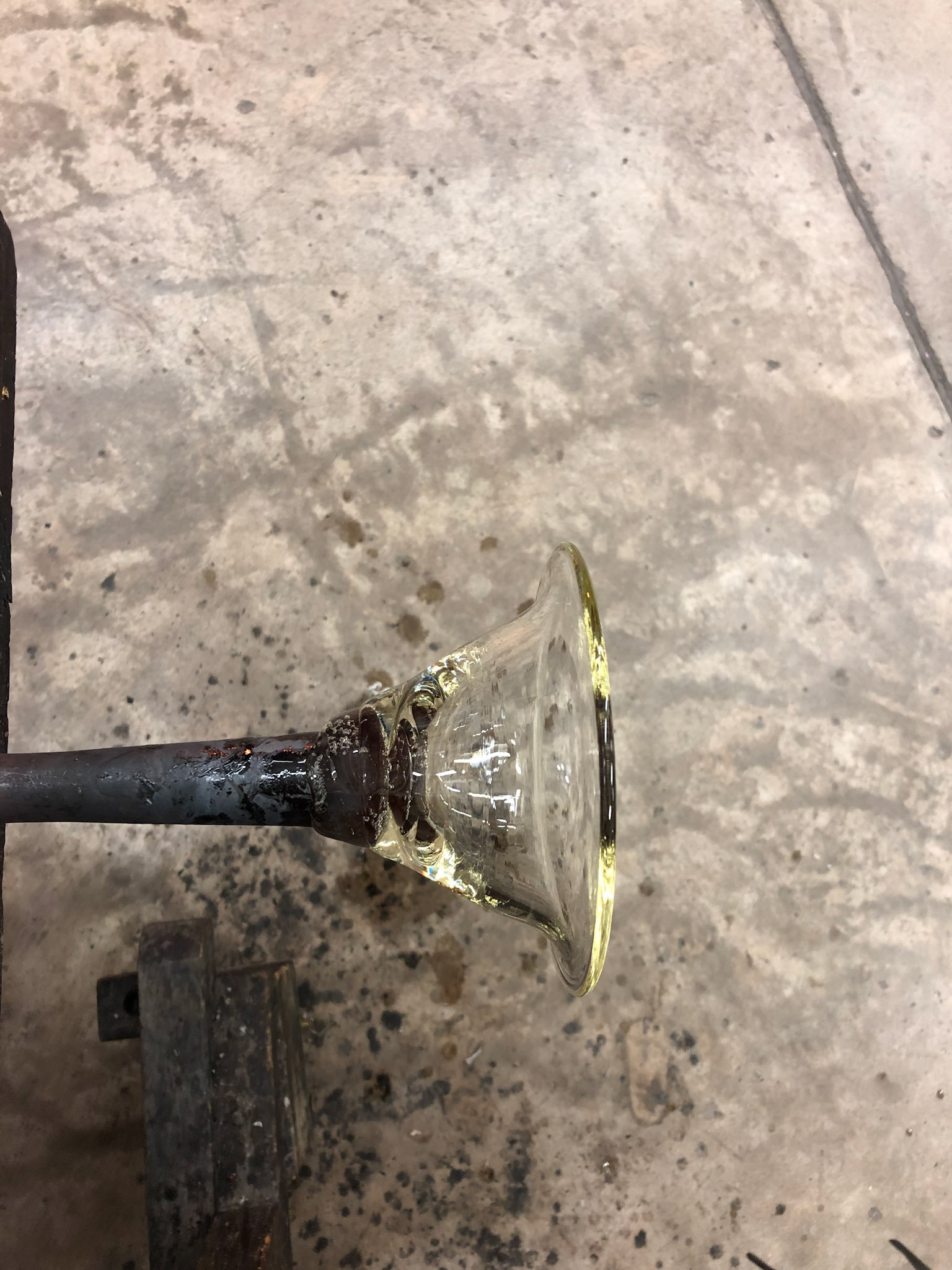
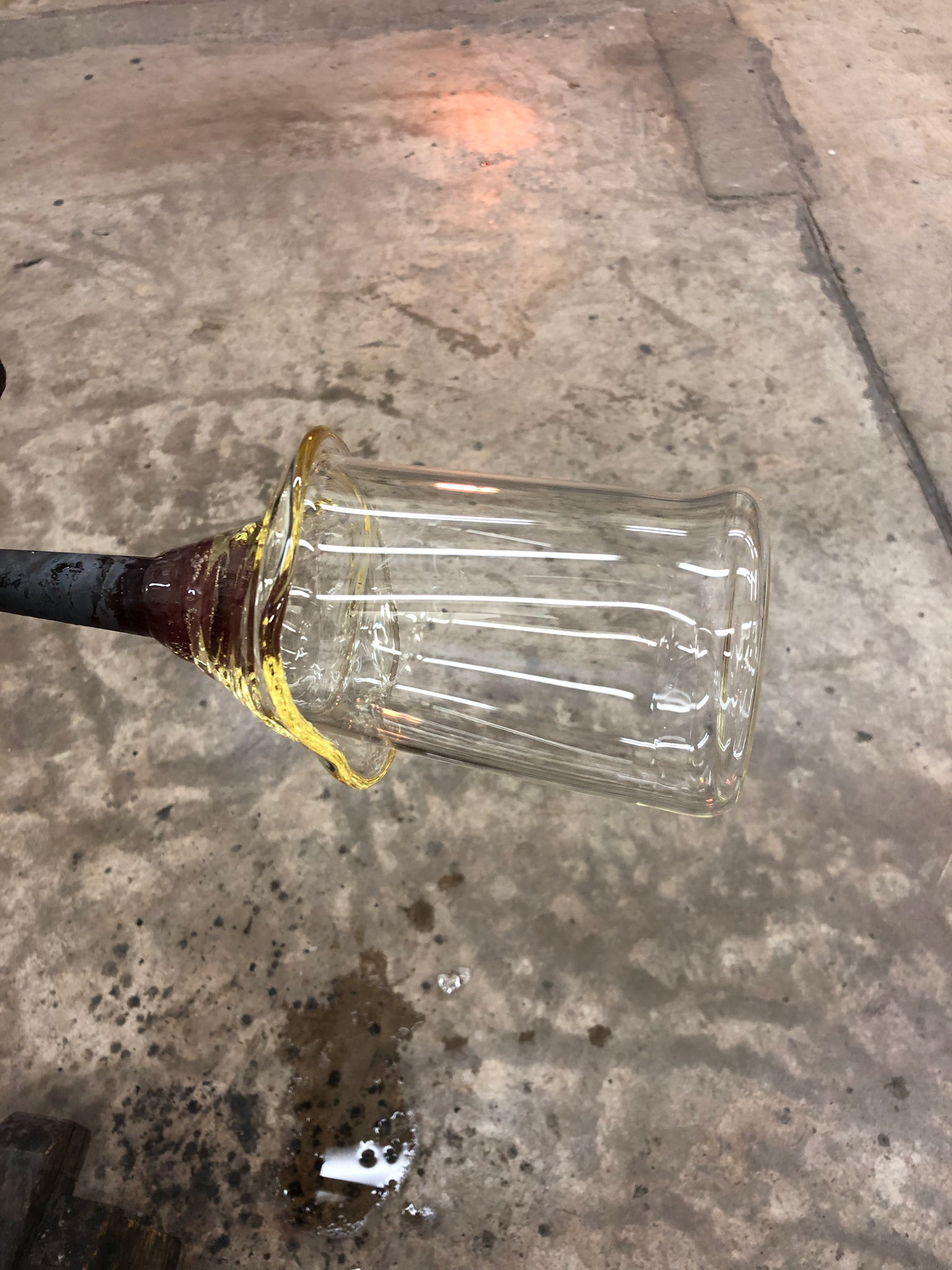





After the struggled of the day before, I chose to try again but use the furnace glass to make the collar out of instead of the borosilicate, this made the process much smoother and the glass stuck better because I could get it hotter. However I struggled to get a clean seal which meant I couldn't blow into it and change the form in that way so I heated up small sections with the blowtorch and used the graphite jacks to push in from the outside instead. Although I still wasn't happy with the outcome because it didn't have the same fluidity that the smaller objects had.
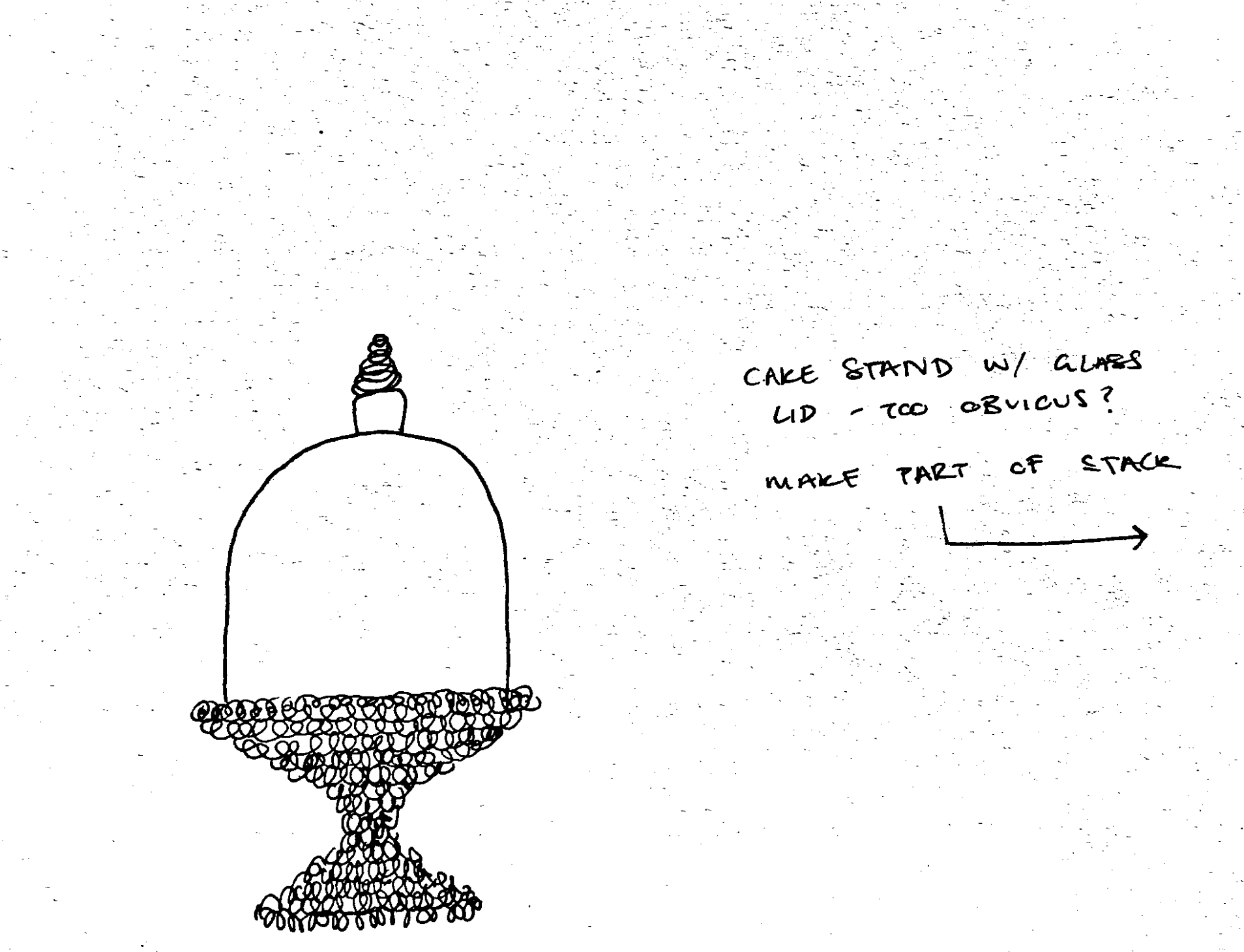

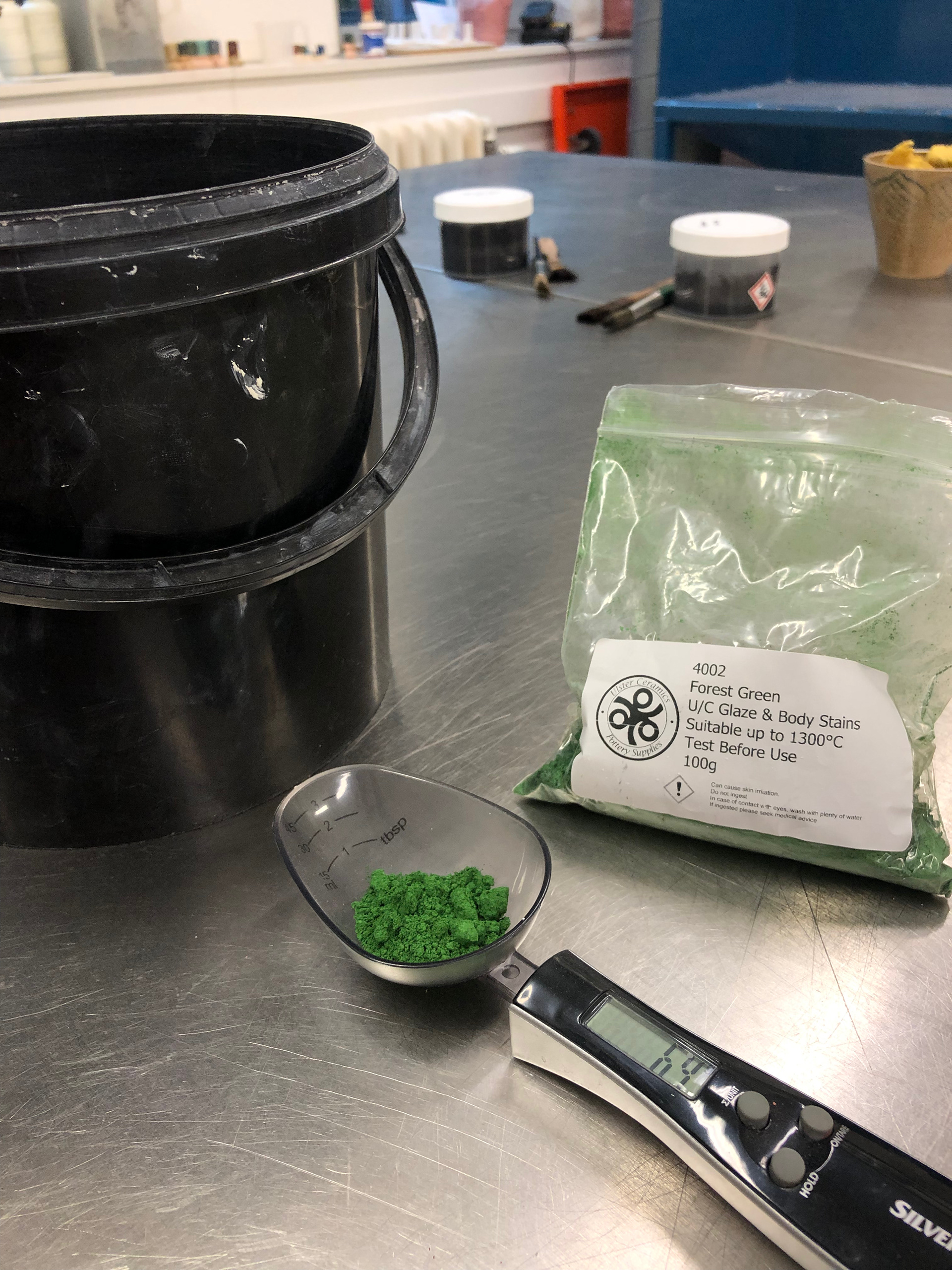
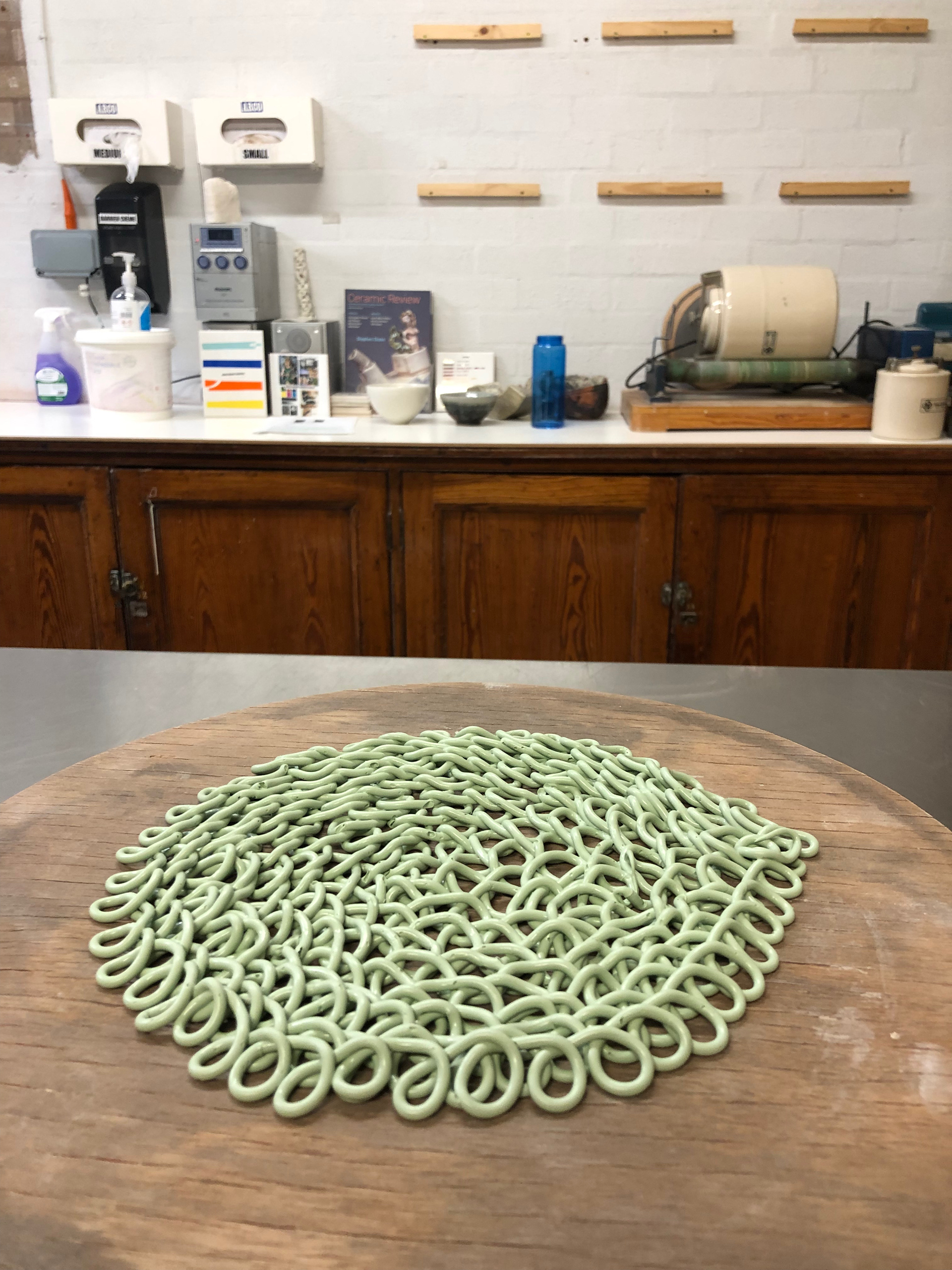
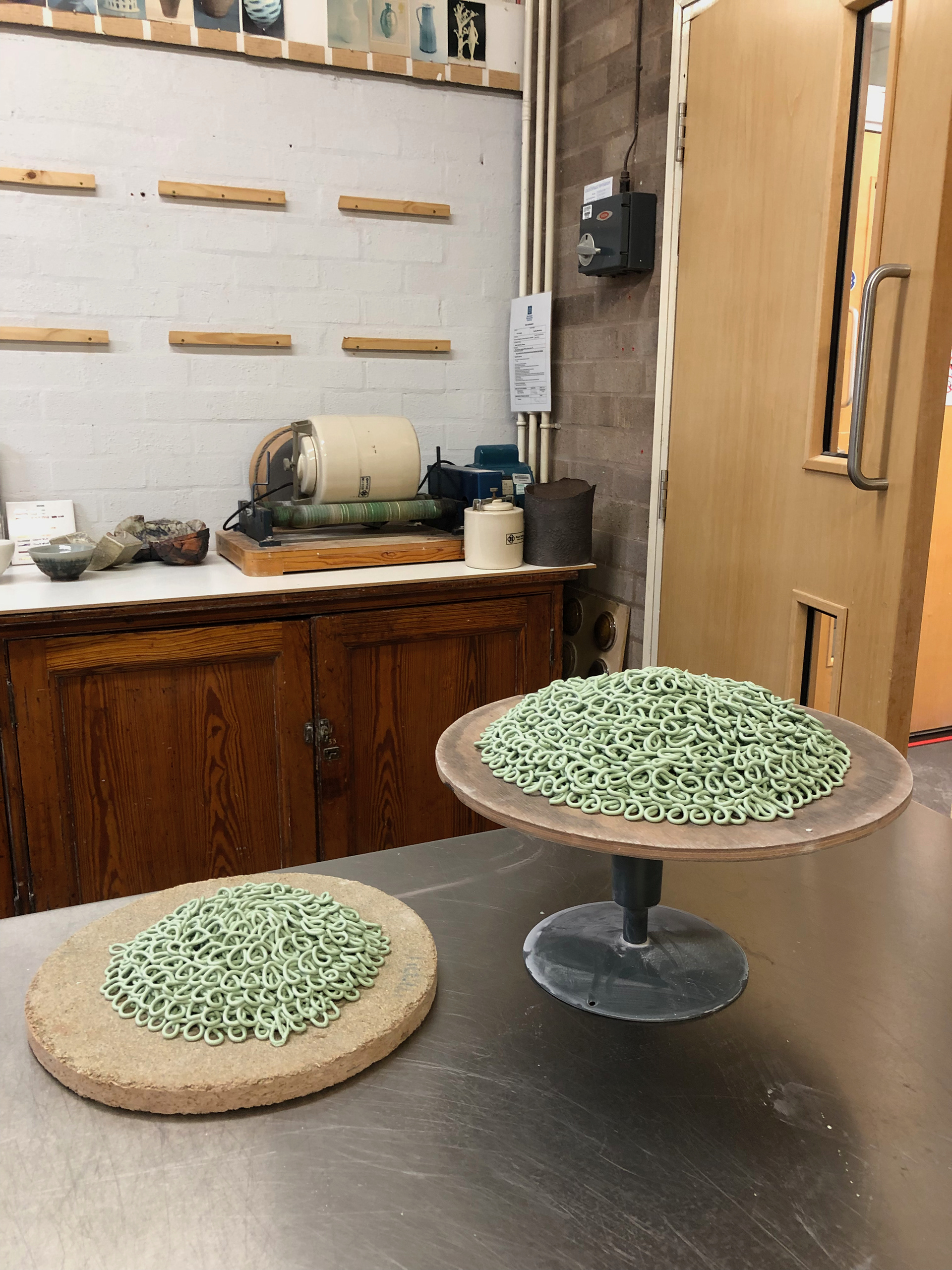

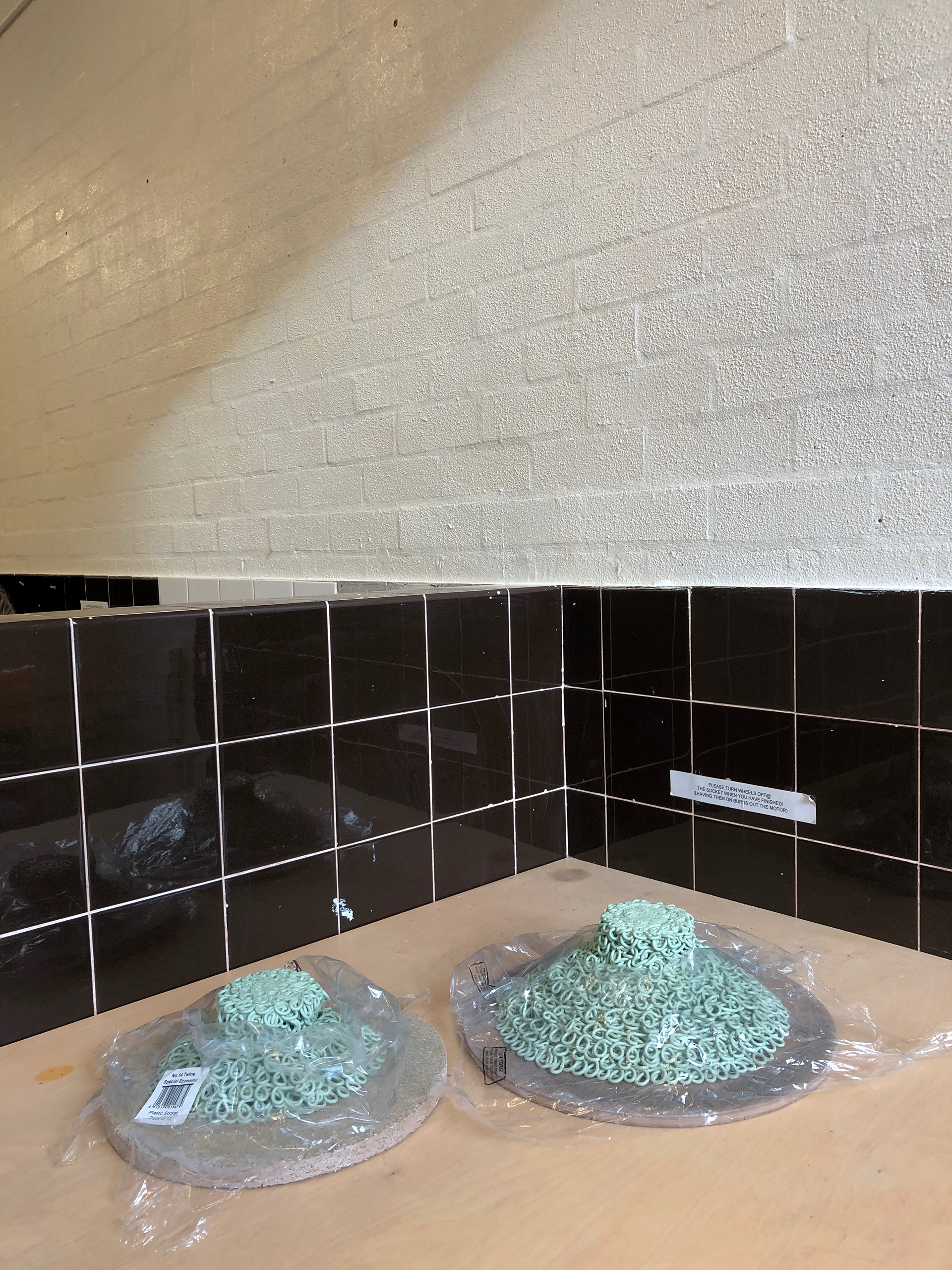
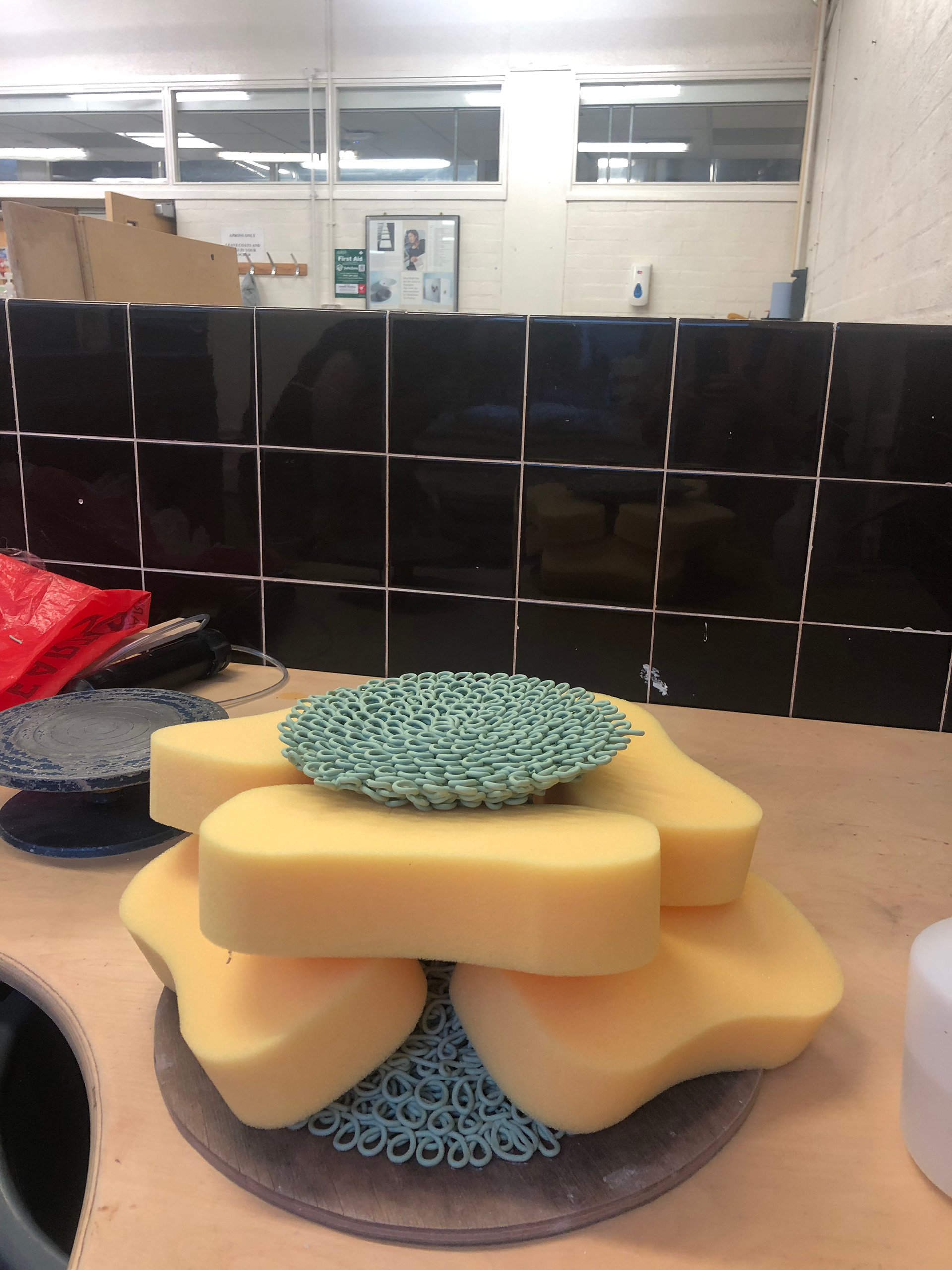
Using the air compressor to extrude a cake stand form to use in a stack. I enjoyed making these, I decided to make the stand in two parts and connect them at the leather hard stage in order to keep as much of the form as stable as possible. I was quite nervous to connect the two because they are very delicate but it all went very smoothly, I controlled the drying process to make them dry as slowly as possible to reduce the chance of cracks at the join.
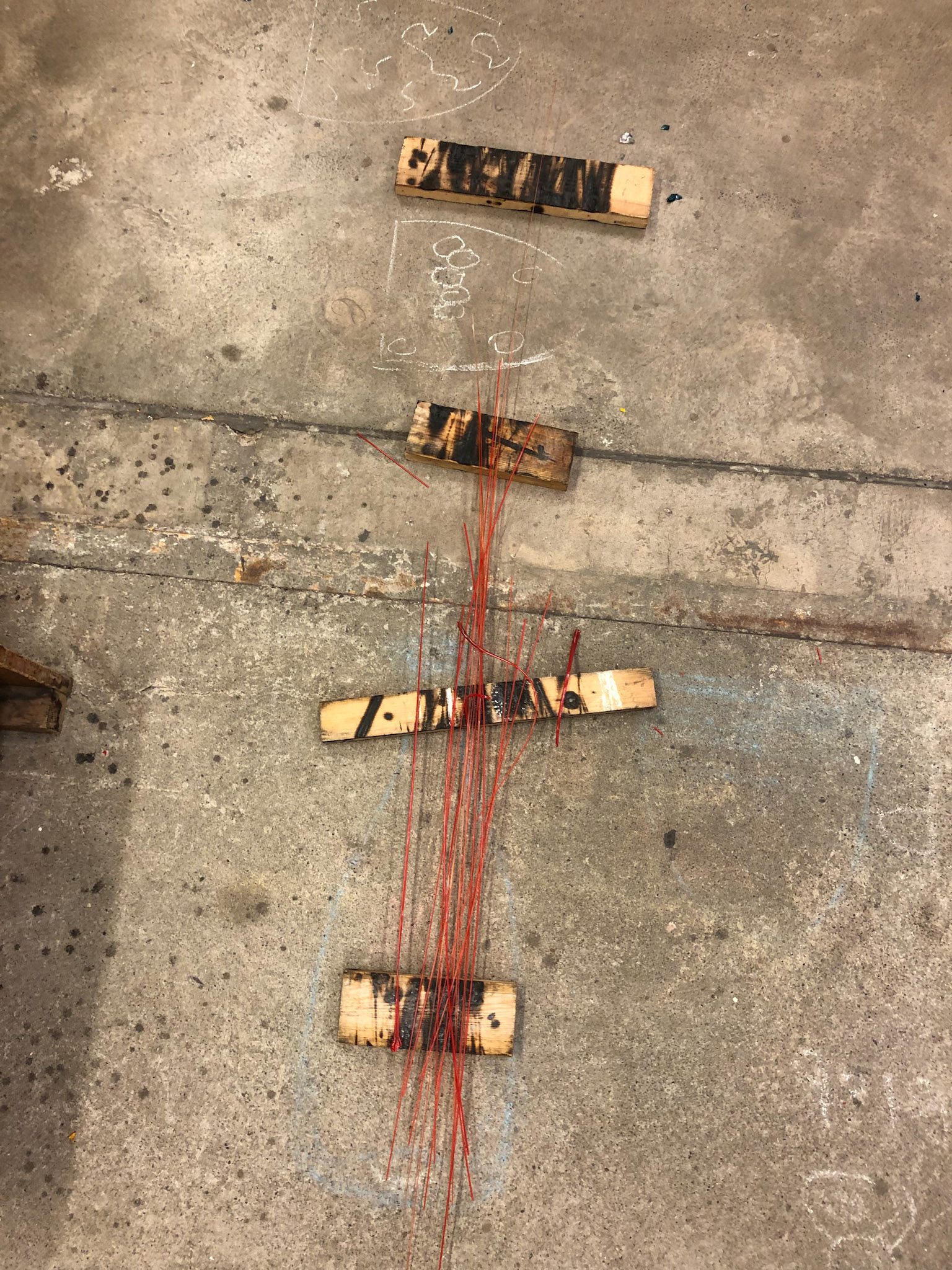

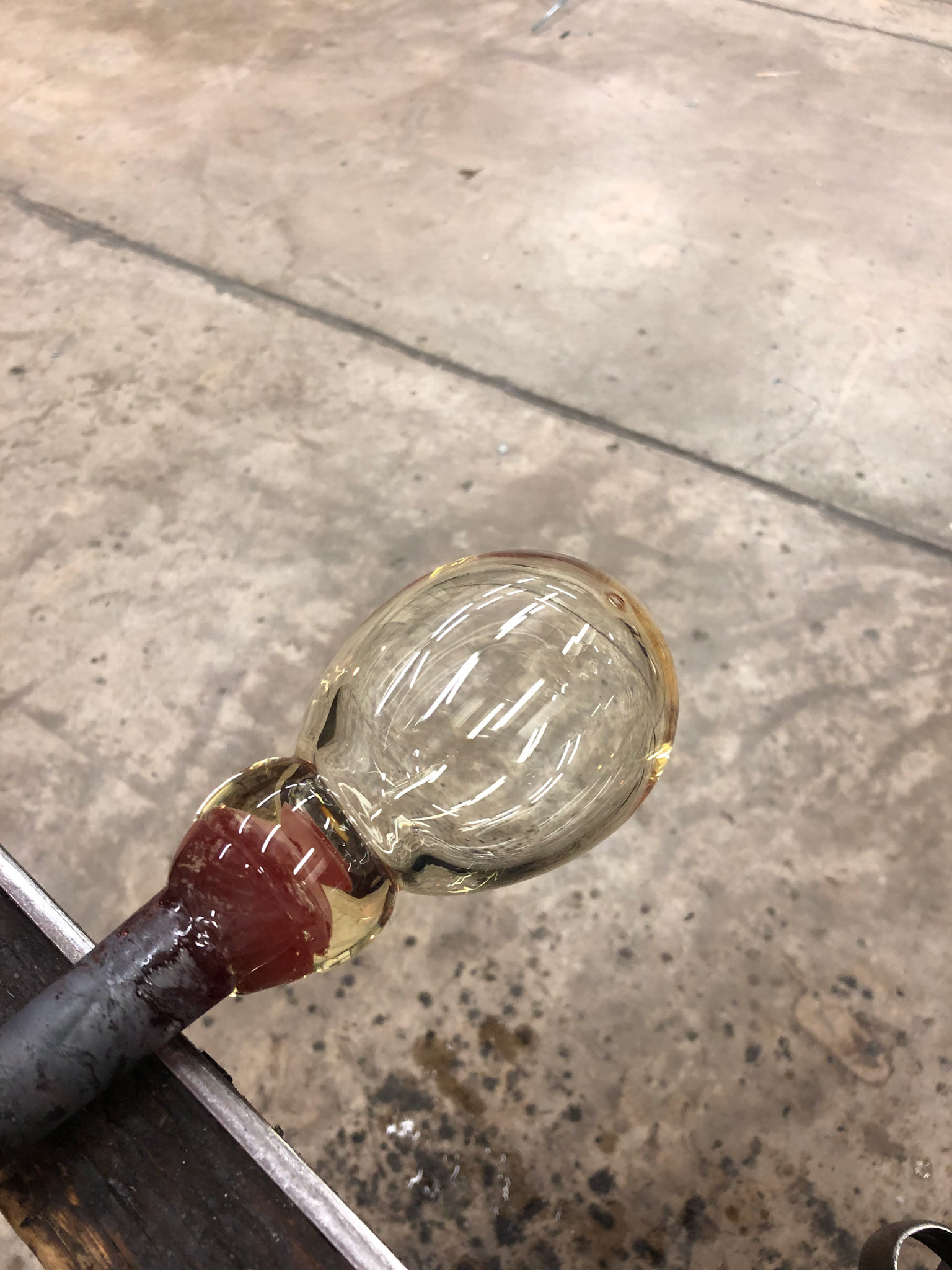
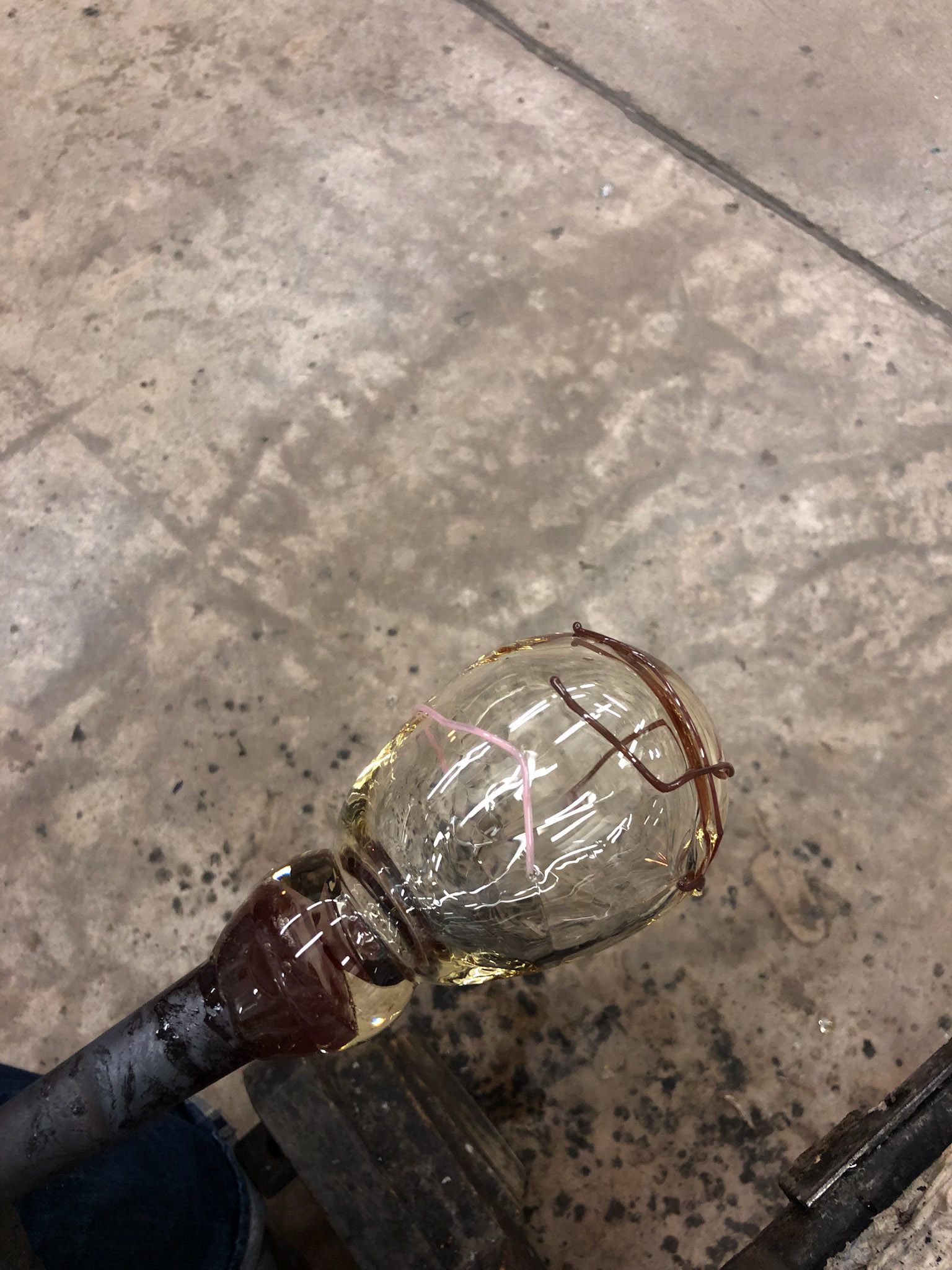
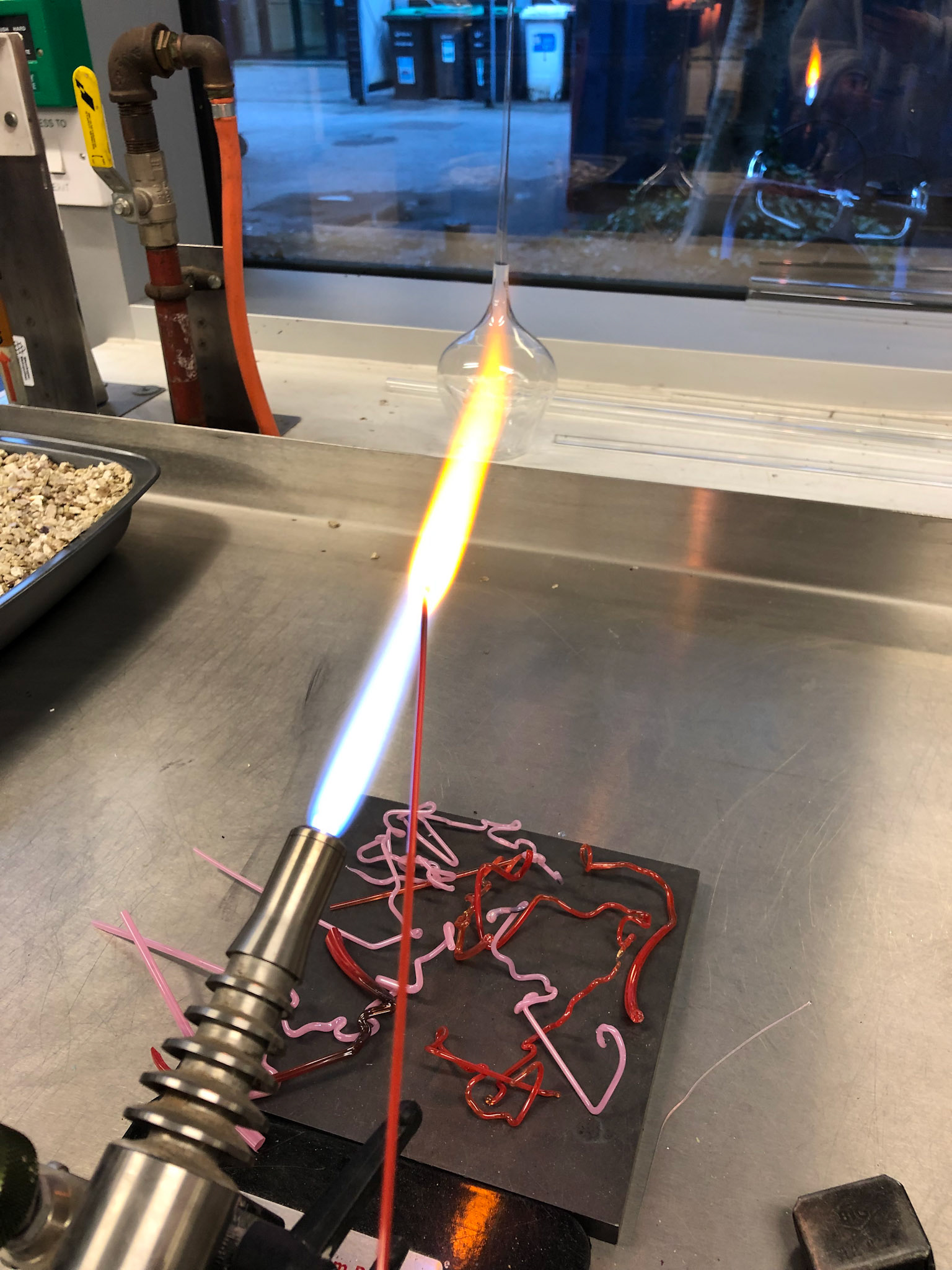
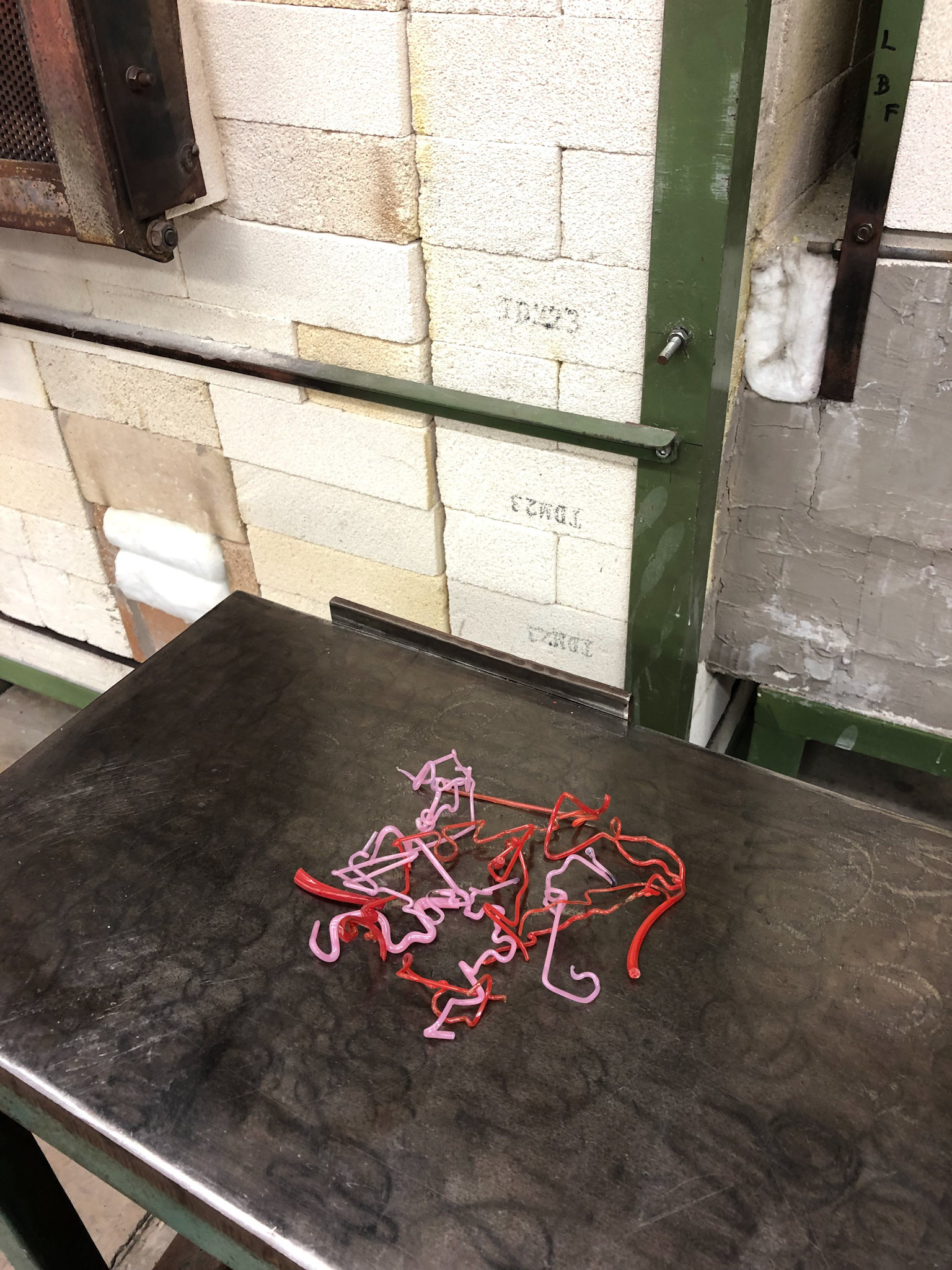
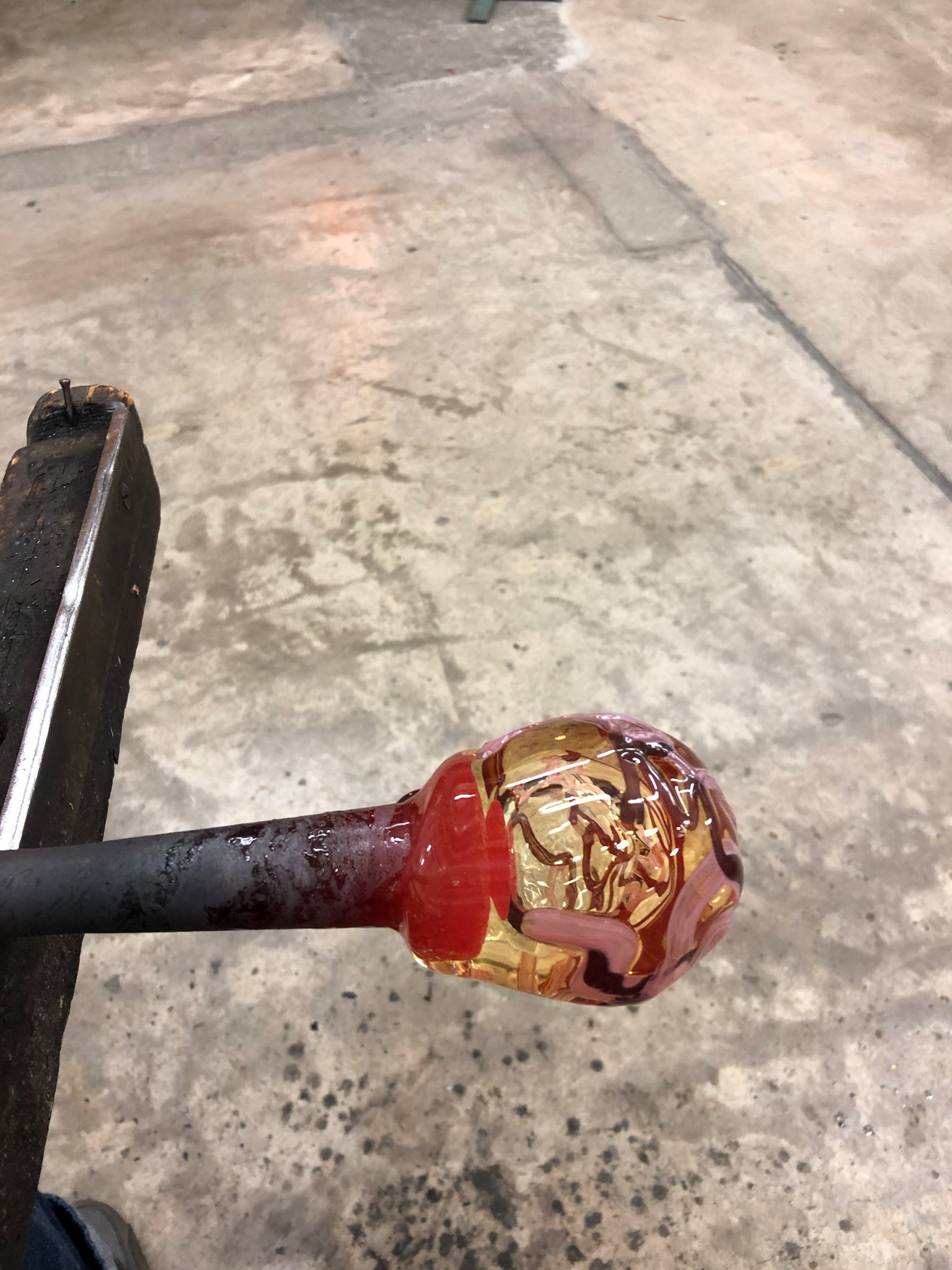
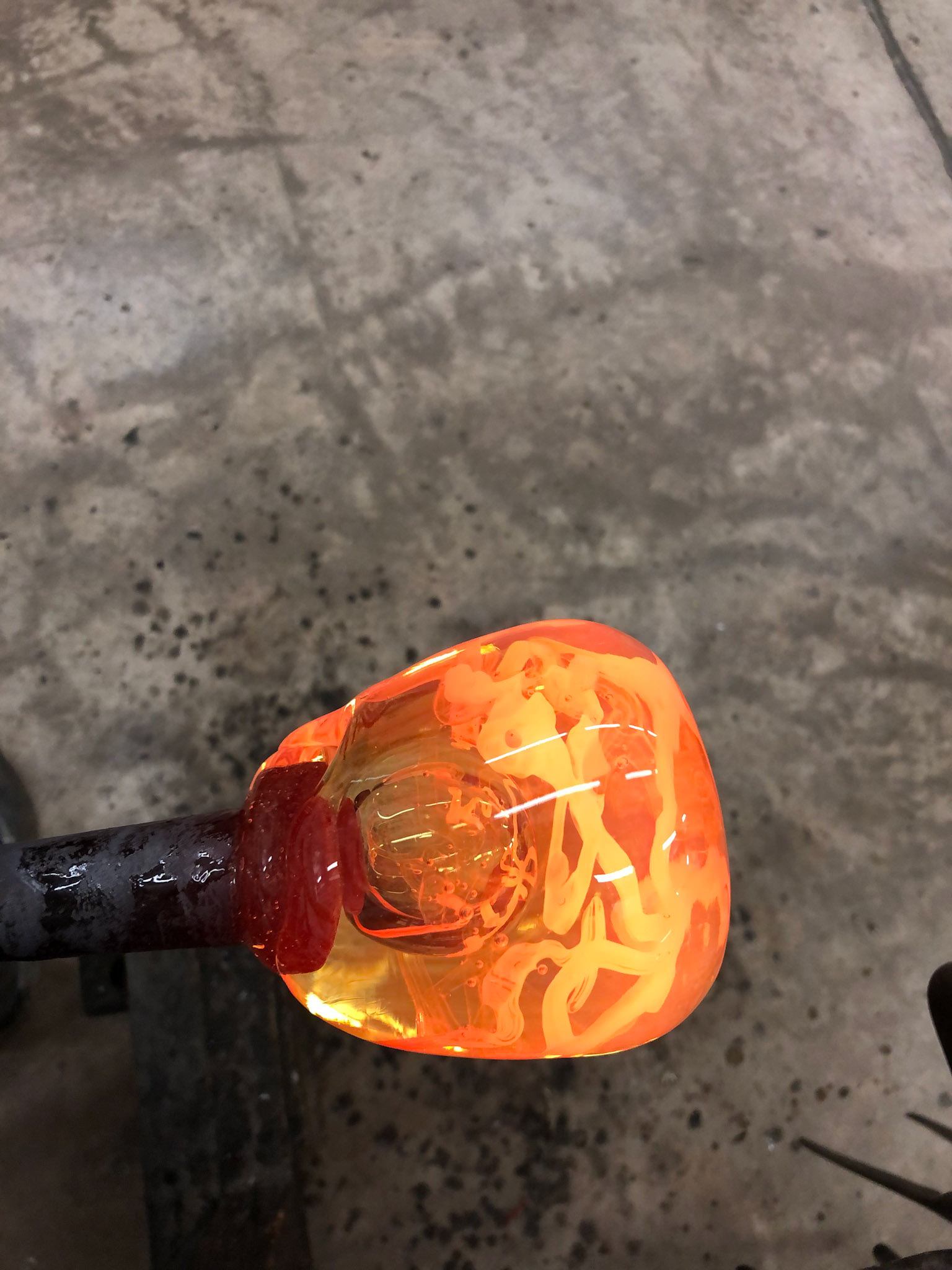

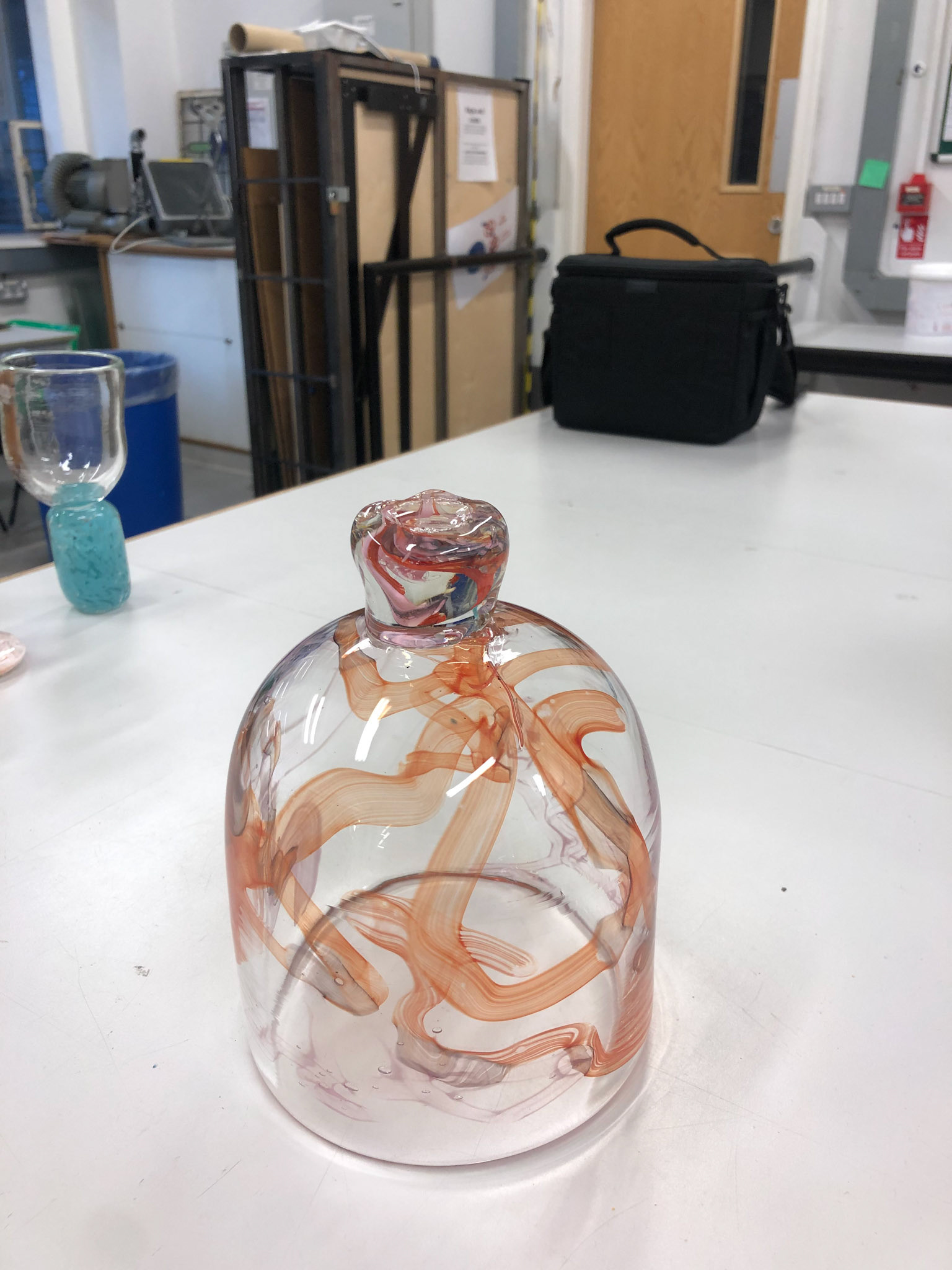

Making the glass component for the cake stand stack. I wanted to lean into the perceived edibility of this stack in particular so I took inspiration from strawberry laces and pulled some stringers in red and pink. I wanted to use these to add surface decoration in order to give another nod to childhood in the stack, I tried this is a number of ways, first I tried rolling a glass bubble onto the straight stringers, the bubble wasn't quite hot enough so not many stuck to the bubble and the ones that did stayed very straight on the piece, this wasn't reminiscent of strawberry laces so I decided to lamp work the stringers to give them more of a squiggly shape. I then repeated the process, but getting the bubble hotter this time so they'd stick. I was happy with the outcome, the sides were very straight which is something I've been struggling to achieve up until now. Unfortunately, because the piece is so big, I found it hard to regulate the heat properly and it cracked at the top. It stayed intact but if I am to attempt this form again I will pay more attention to the overall temperature of the piece in order to prevent cracks.
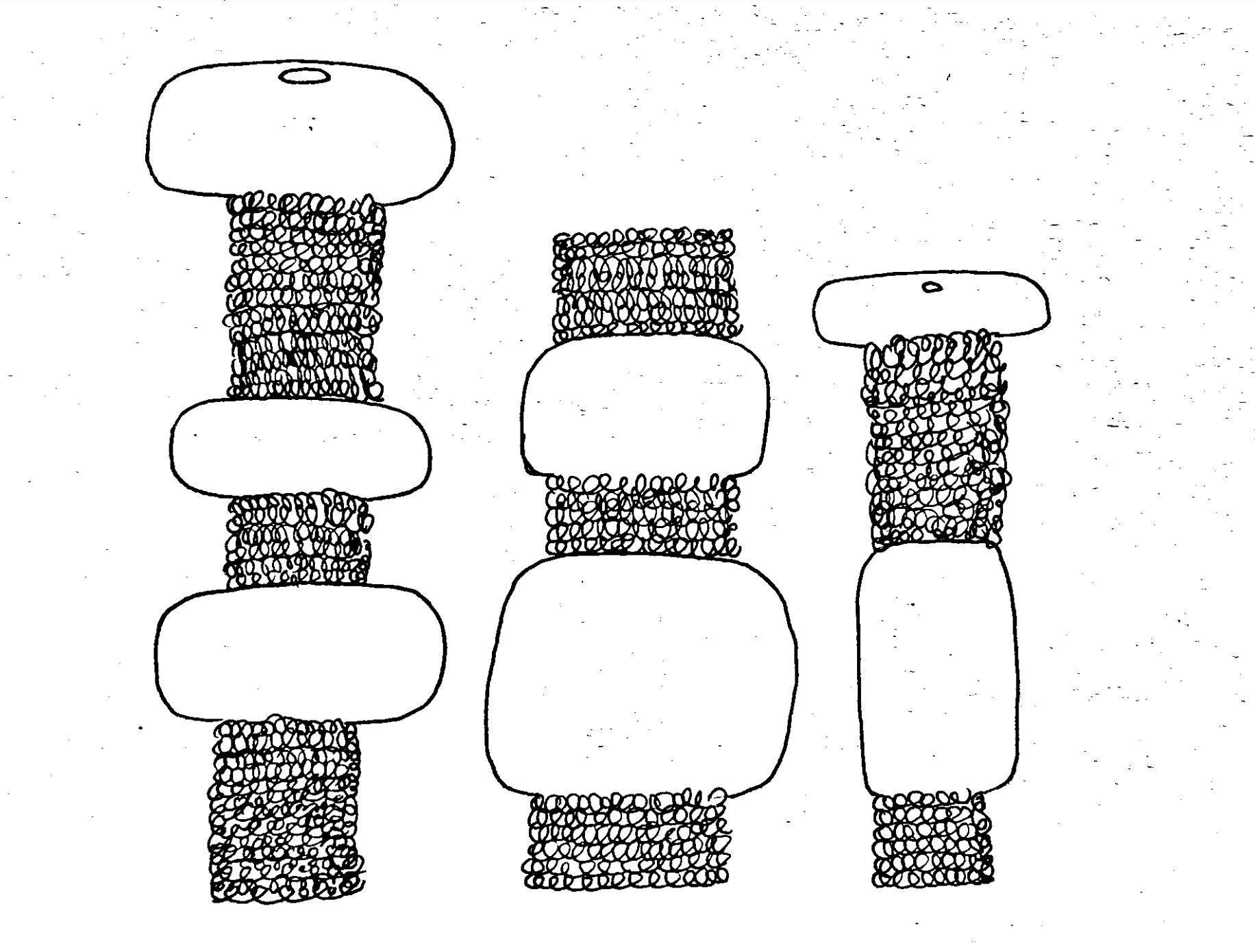
At this point, I had a moment of reflection on the work I had made so far this year. Individually, I like the objects I have made but I don't think I have been successful in bringing everything together in a way that highlights each piece and the process behind it. Therefore I have decided to simplify the work I want to produce, I have pin pointed the two most important processes and objects form what I have made so far, This stacked idea is inspired by the way jars in sweet shops are stacked and is an evolution of the piped work I have done previously, juxtaposed with glass bubbles inspired by scenes in Pippi Longstocking.

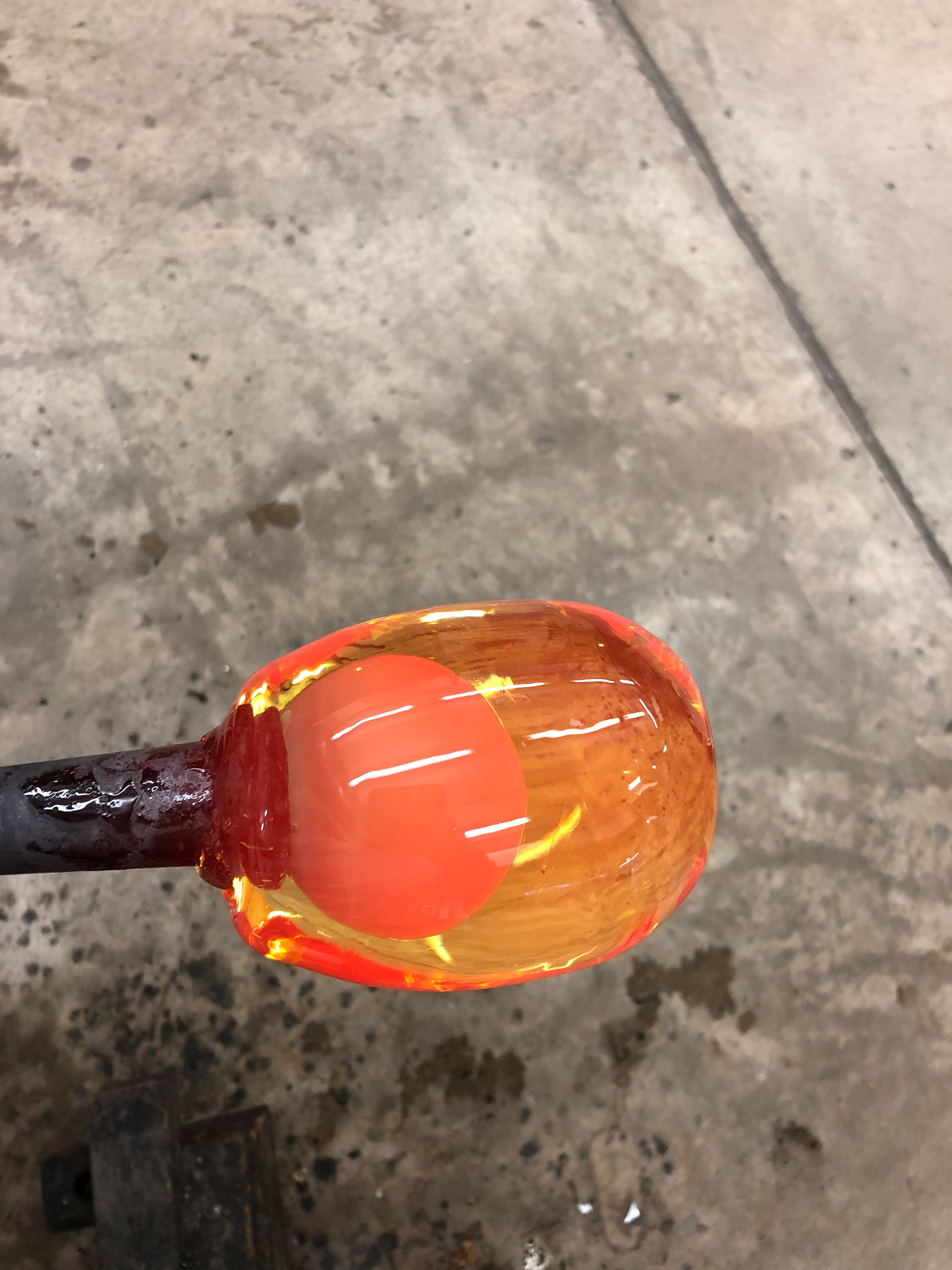
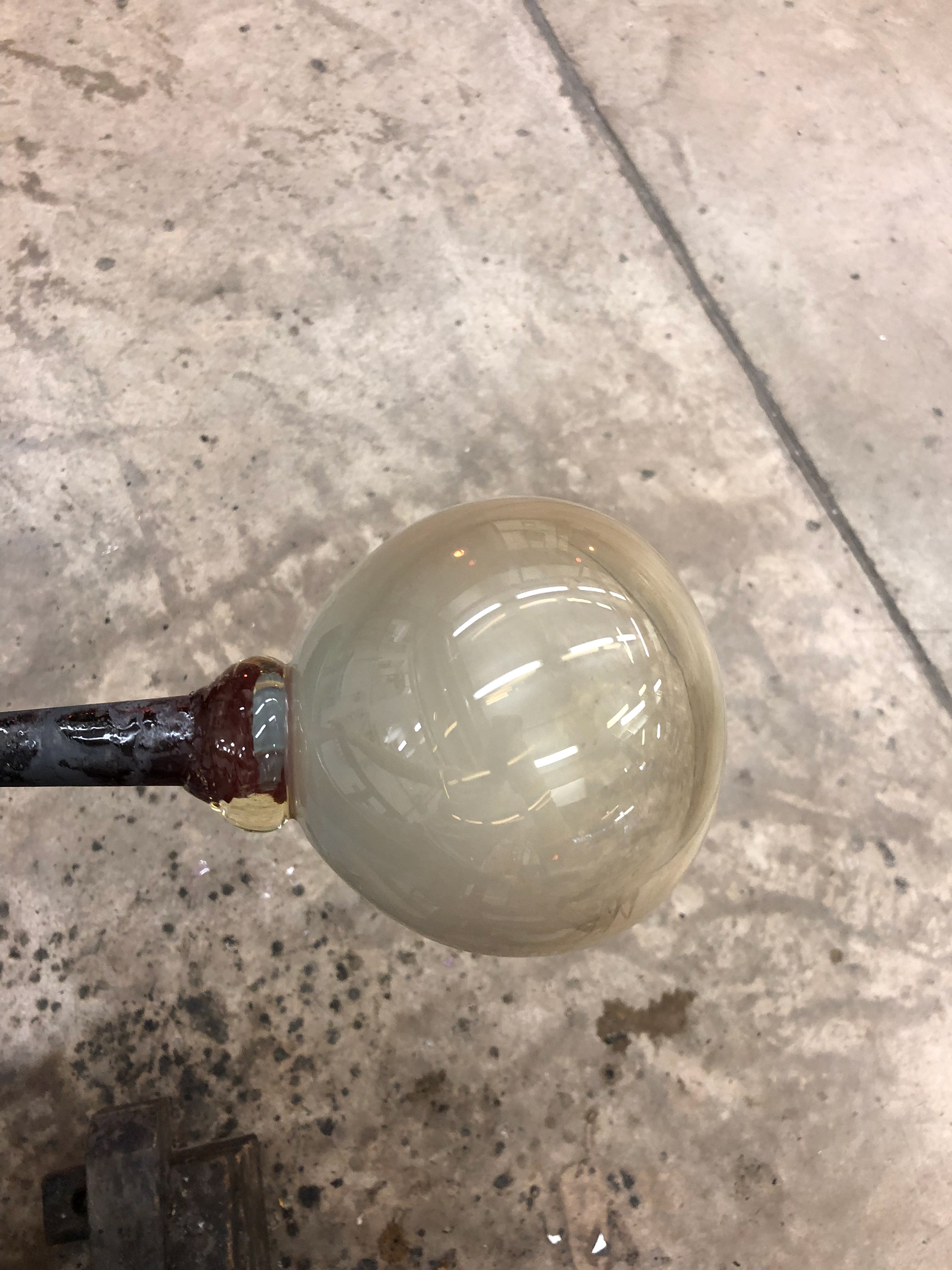
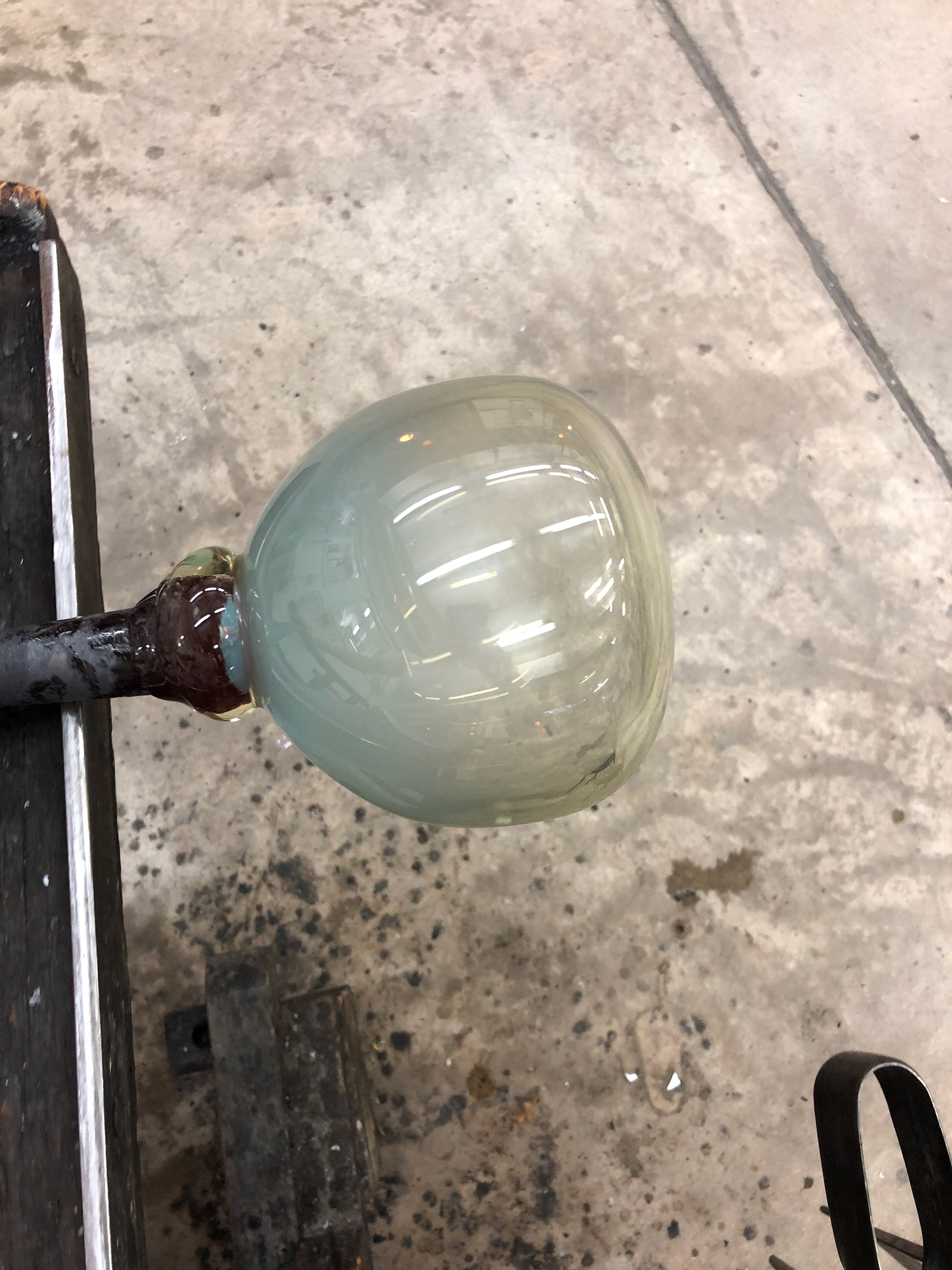
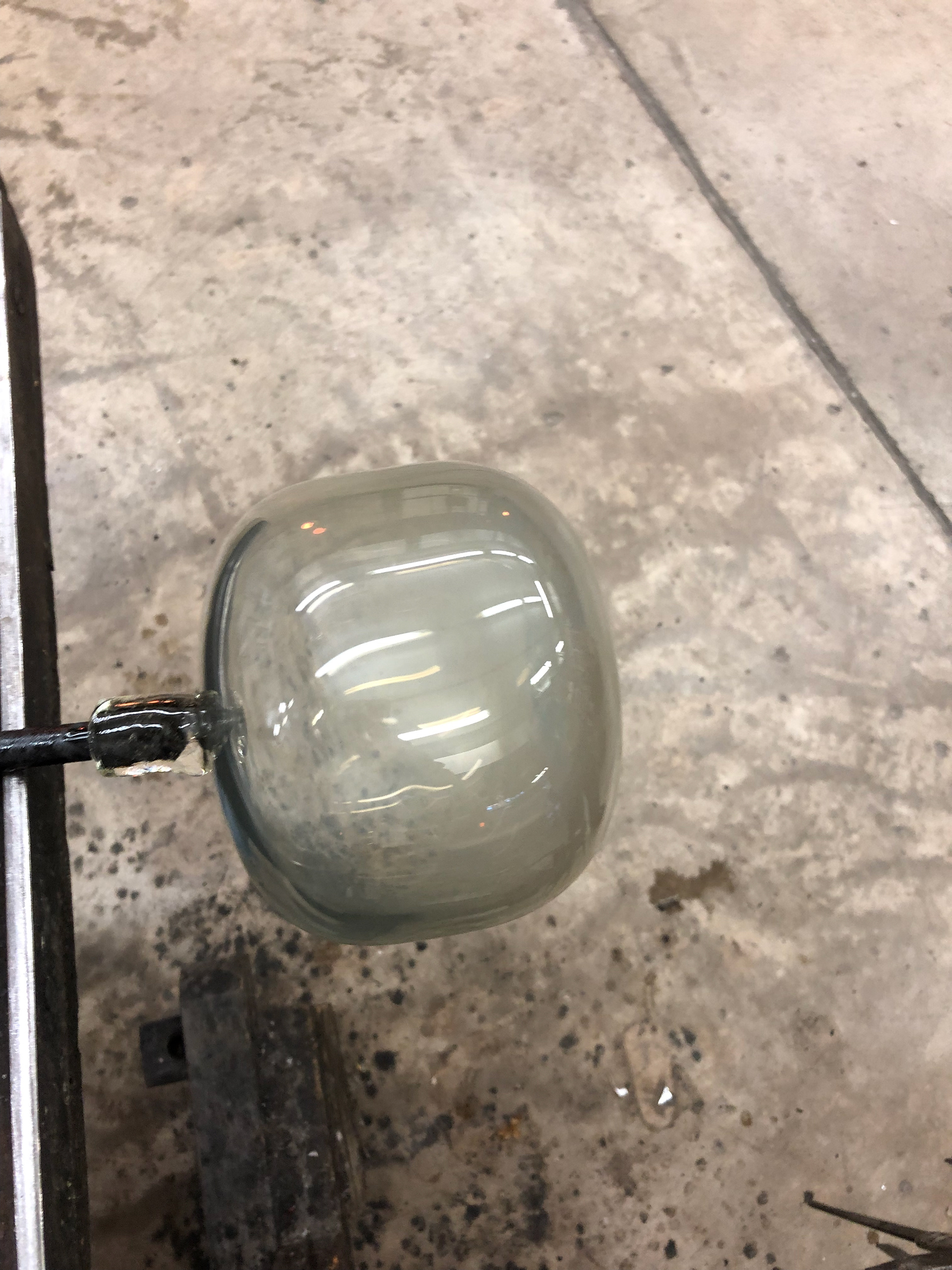
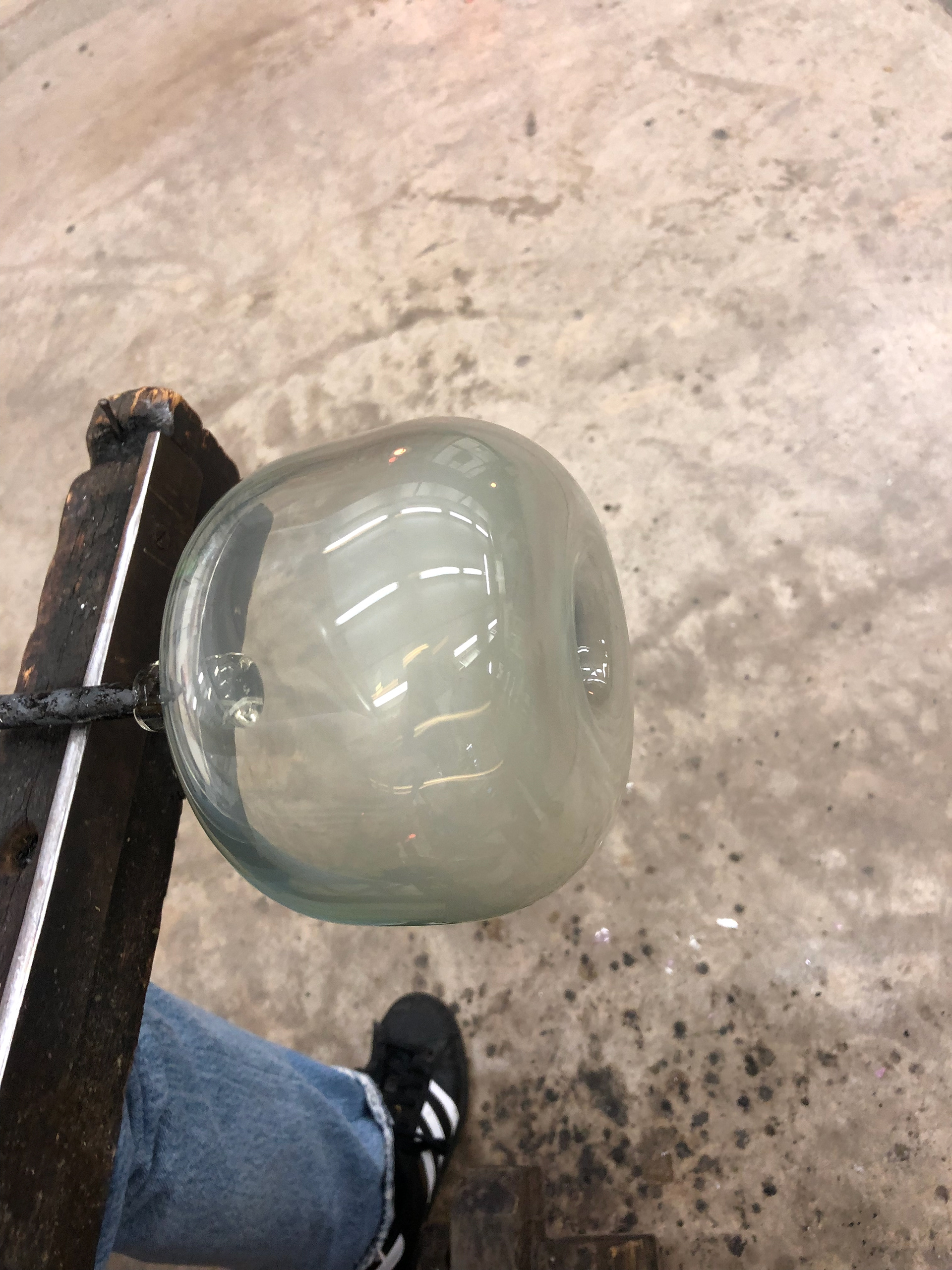
My first attempt at making a glass bubble for a stack, the bubble needed to be relatively flat and quite thick on the bottom and the top so that it can be stacked. I achieved this by using wet newspaper to squeeze the bubble in.
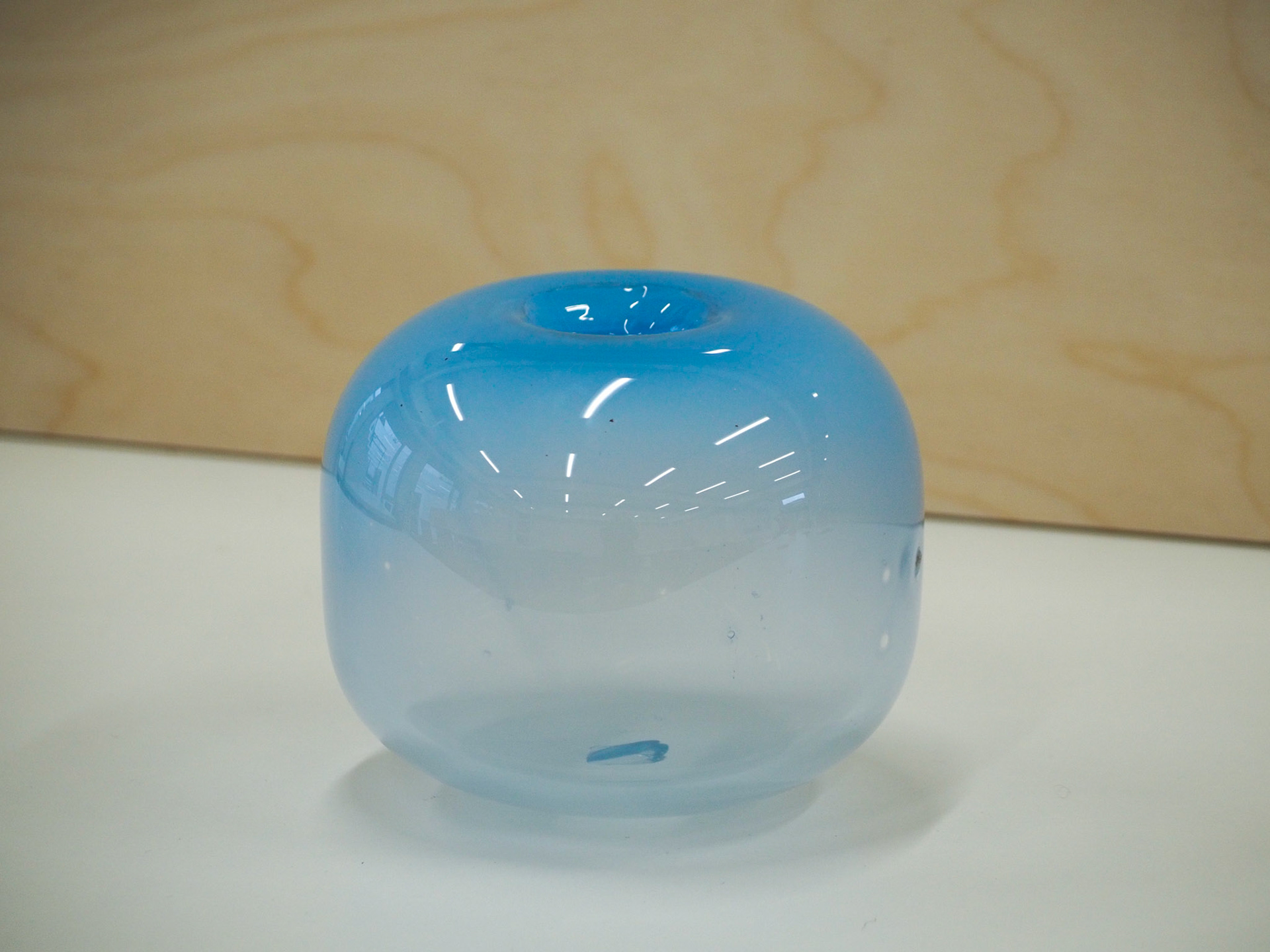

Happy with how the gradient of this piece turned out, the scale seems to fit with this smaller piece so when I increase the scale of the ceramics I will have to make this bigger.
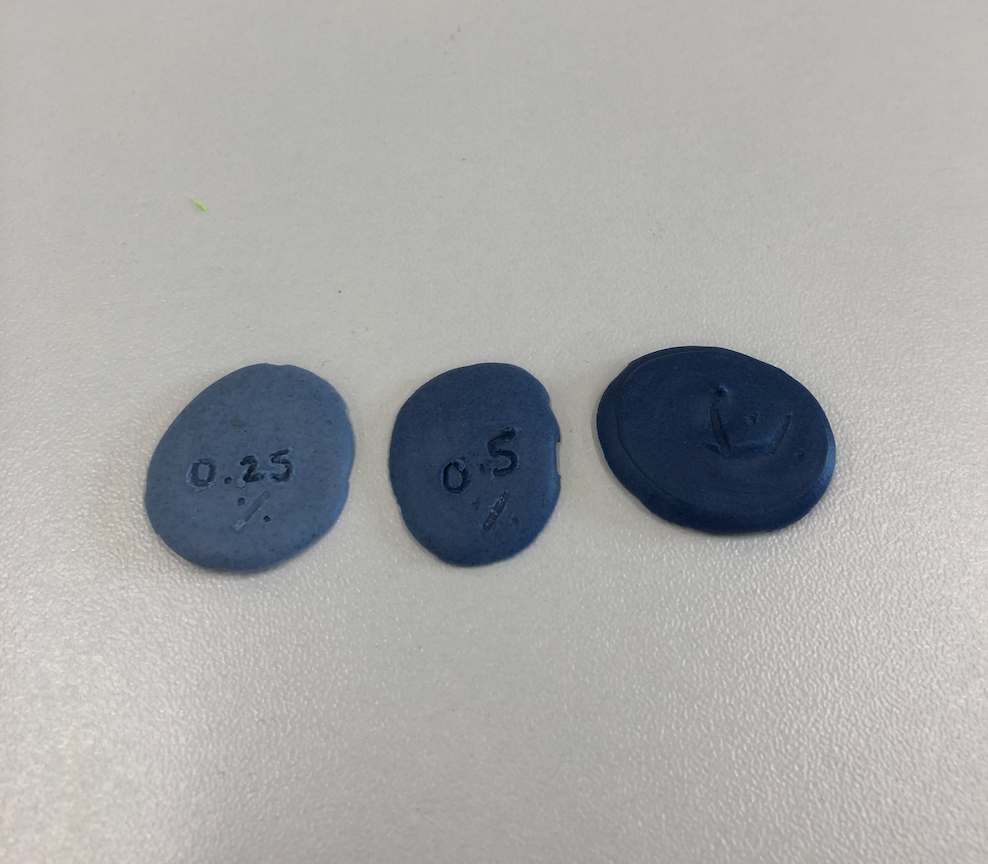
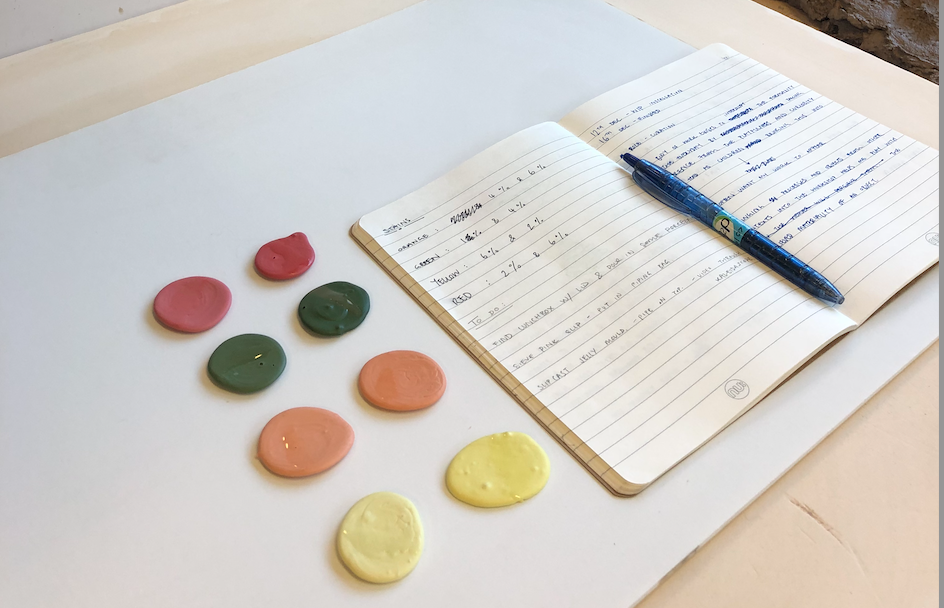

Colour samples using both stain and cobalt oxide.
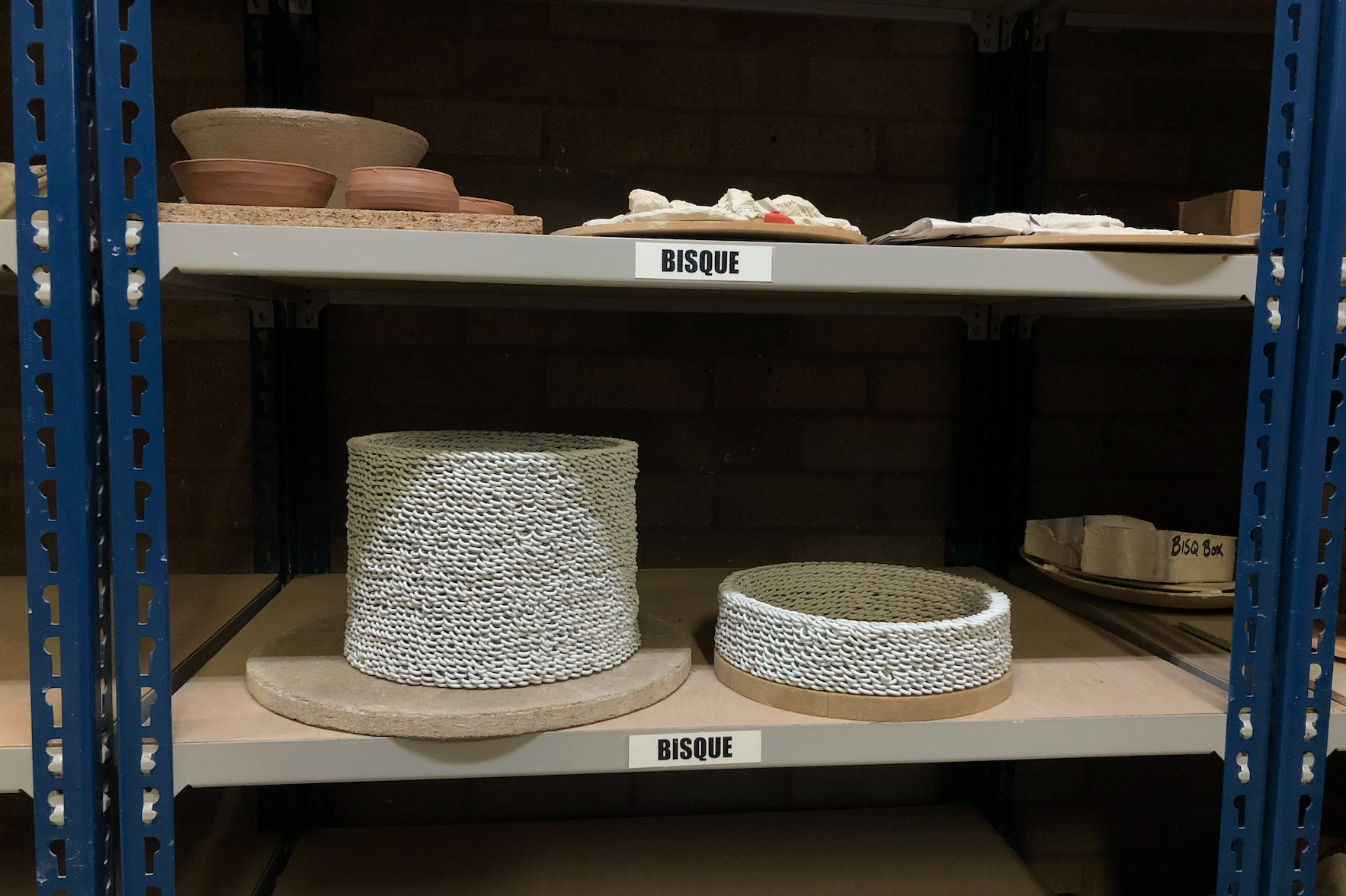
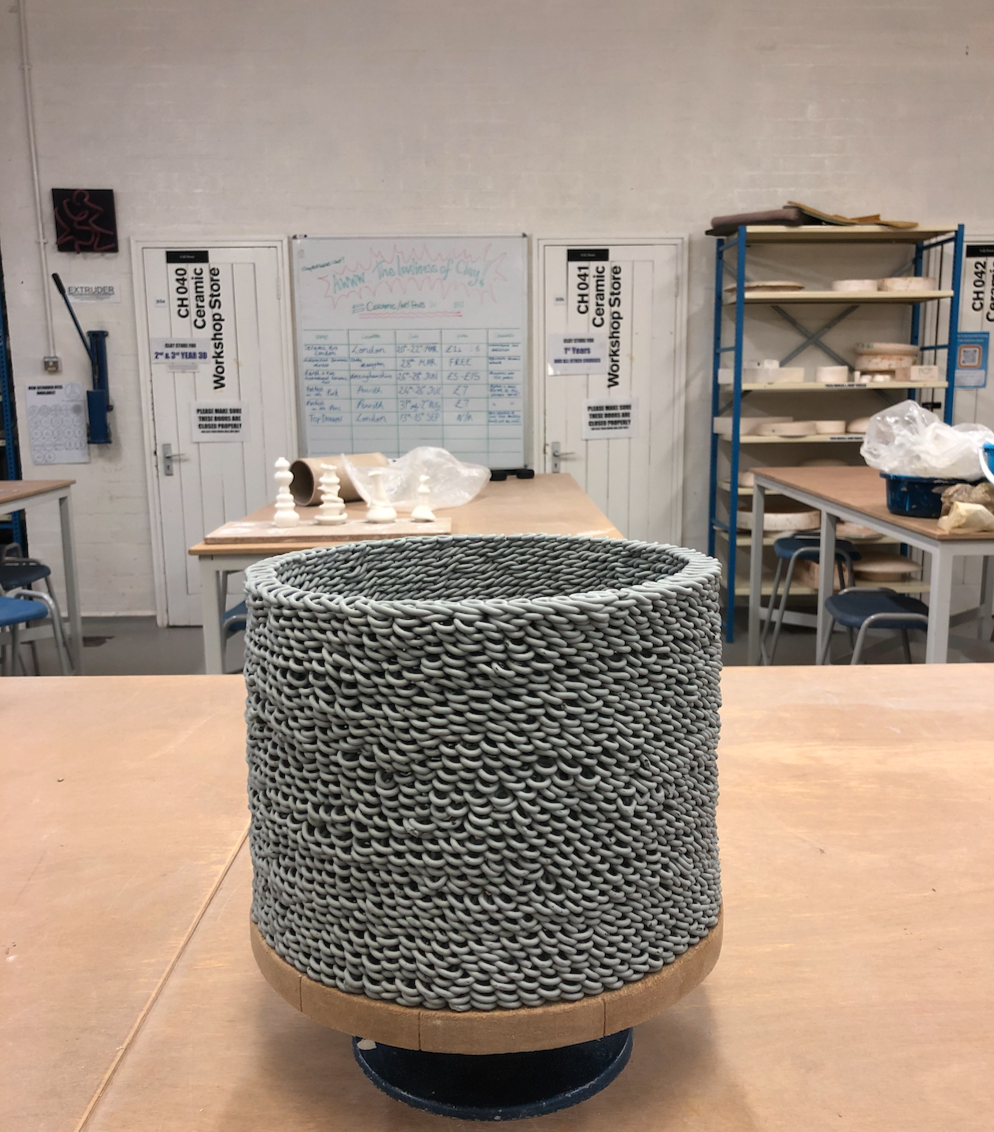

Looped blue pieces for my stacks. I used 0.5% cobalt oxide to colour the porcelain. I was happy with the overall shape and colour of these pieces, I had made three but once I fired the first one I realised I had made them too big, I couldn't blow glass big enough to fit the ceramic pieces whilst also having sufficient control over the shape and thickness of the glass, which - as the glass components of the stack represent the more controlled side to my practice - are both essential to my design. I had over-estimated the shrinkage rate by quite a lot. This definitely taught me the lesson that a few calculations can make things much easier in the long run.
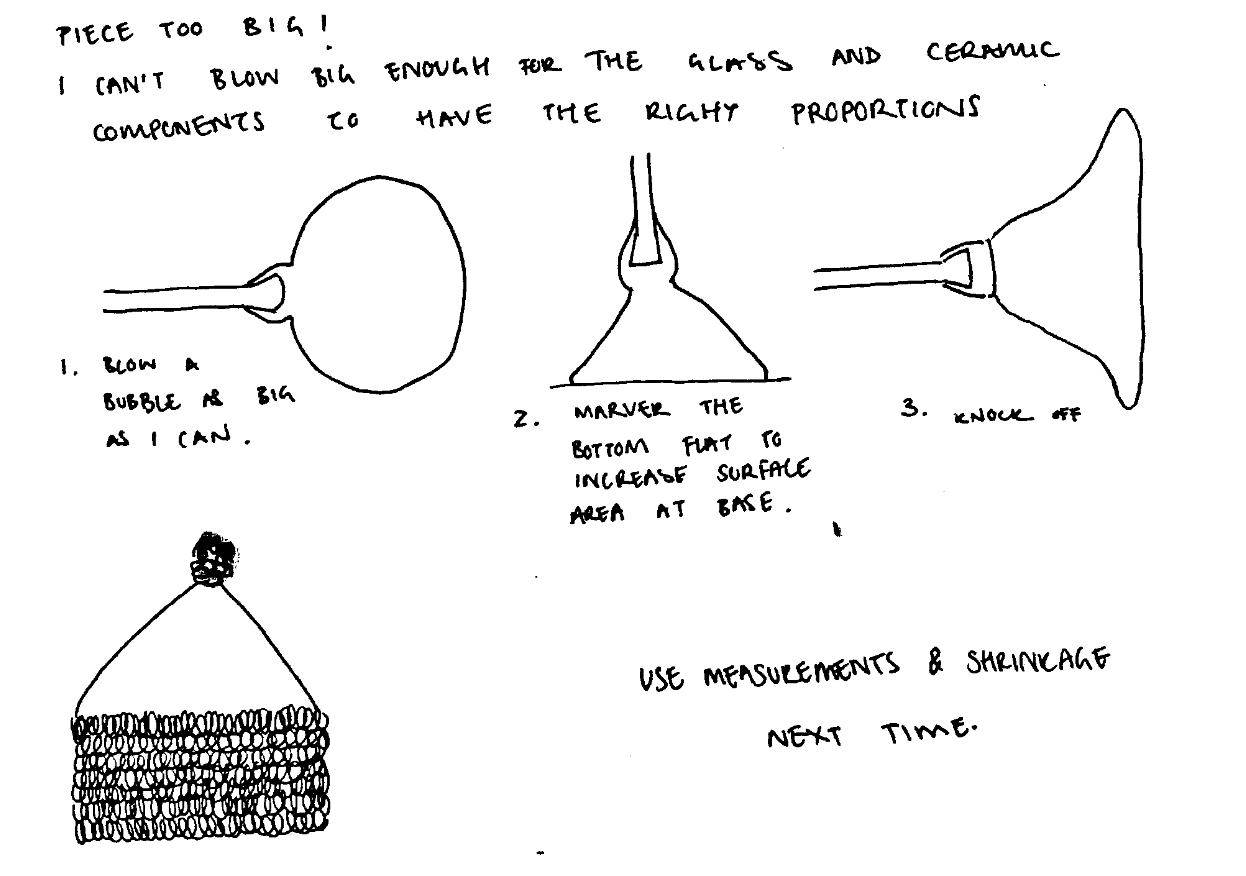

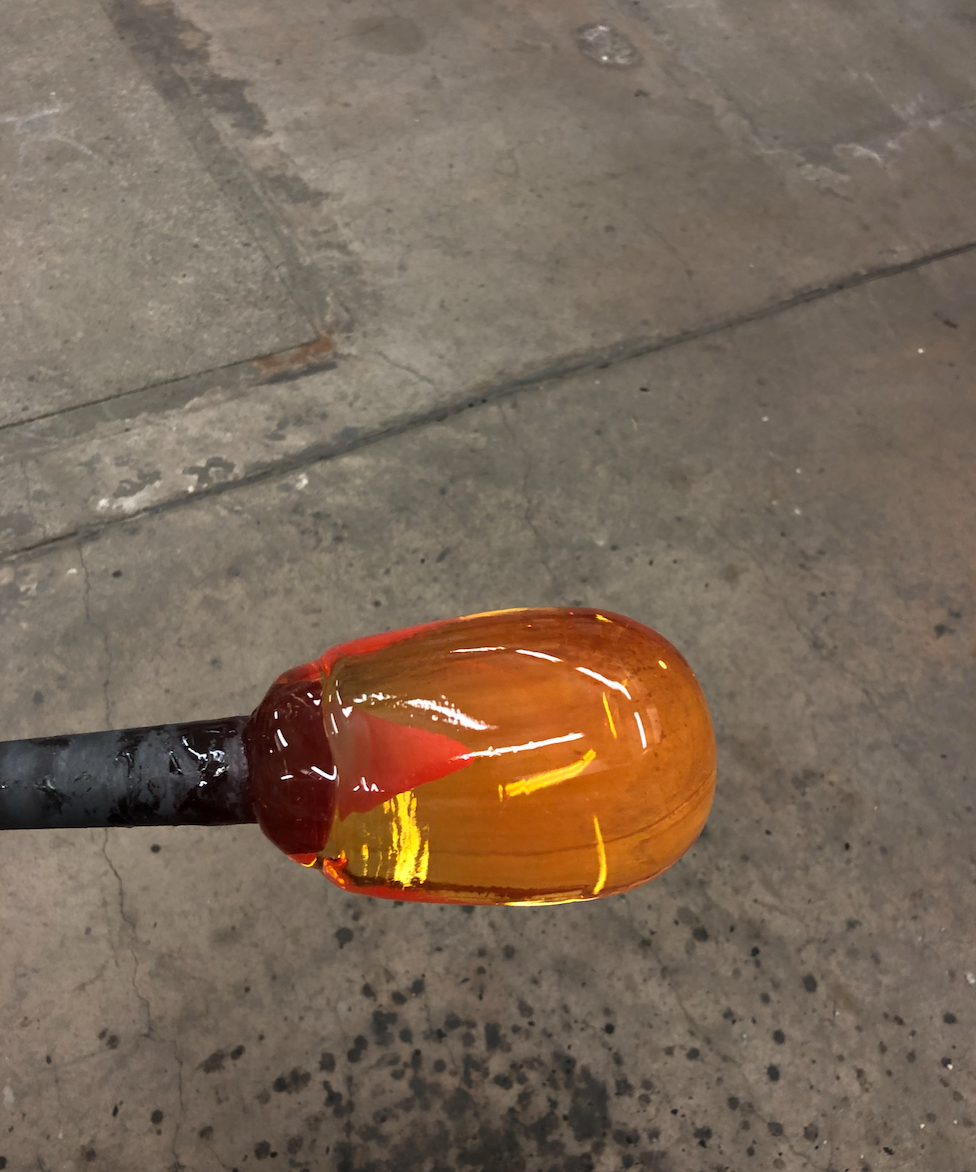
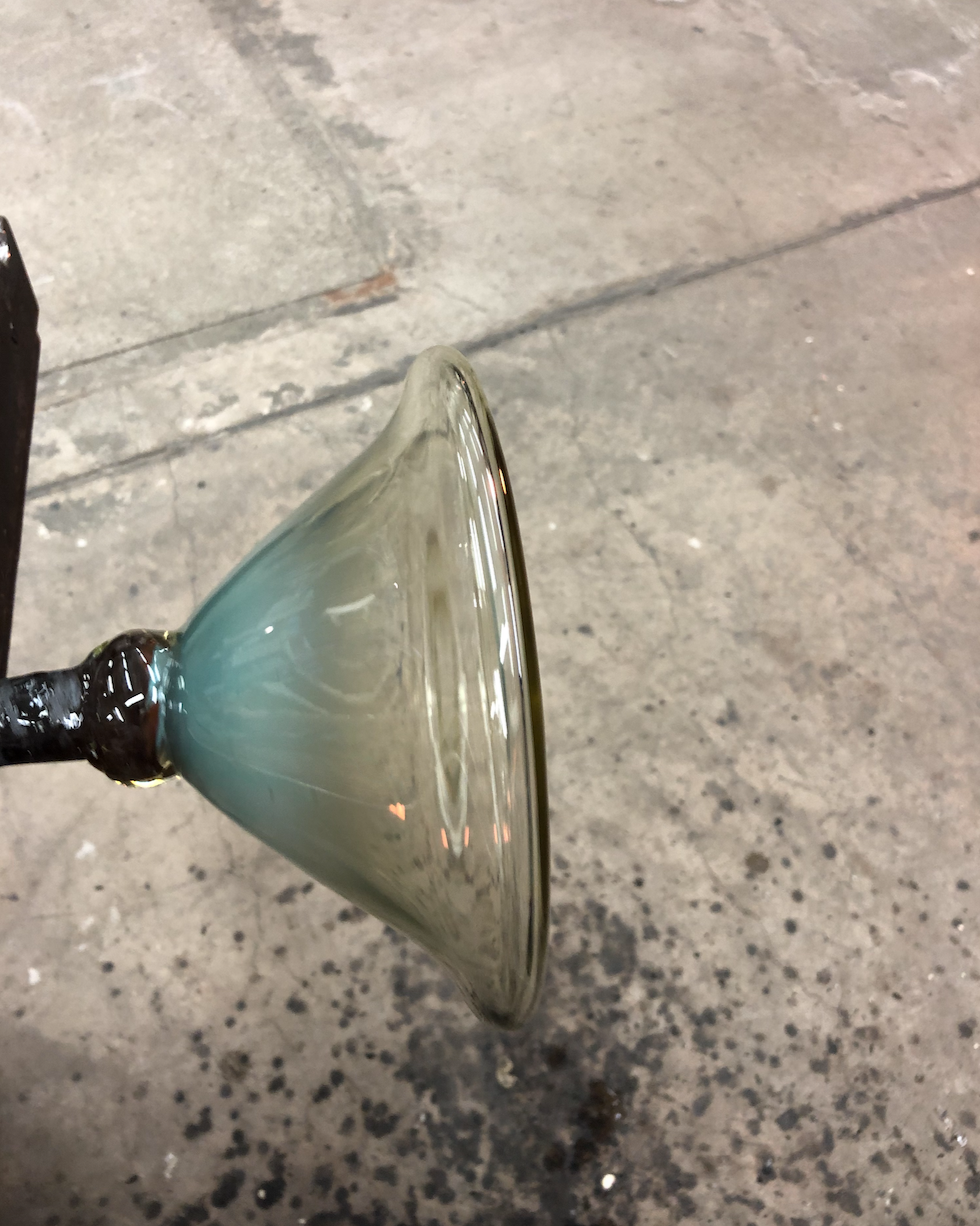

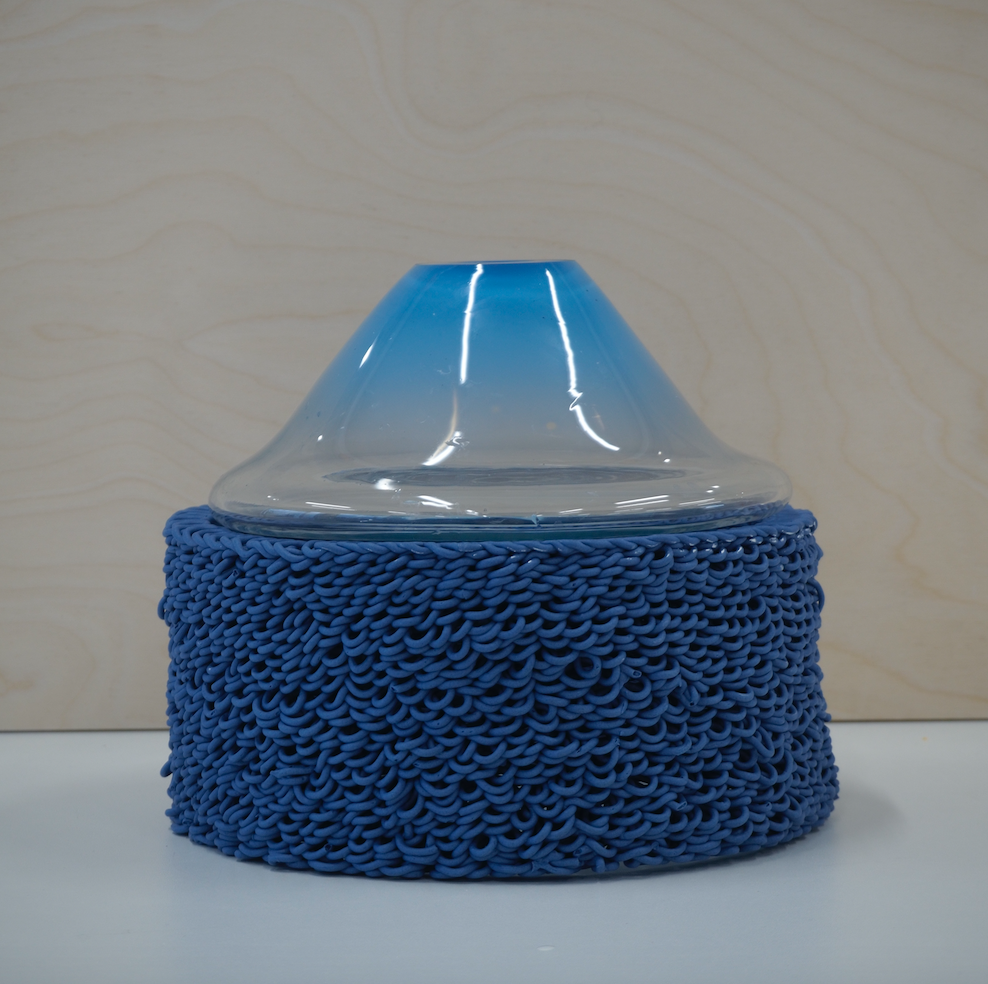
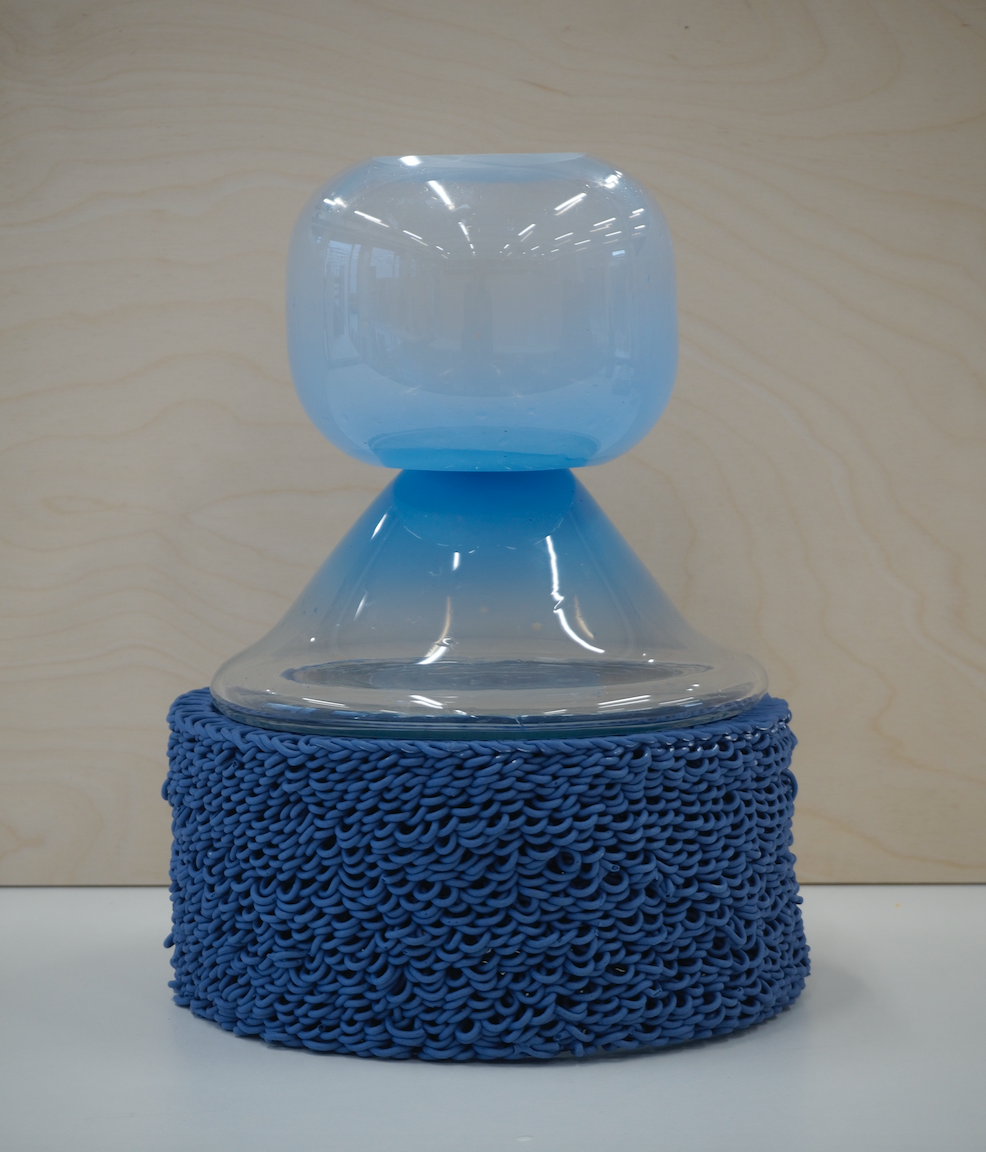
Even though this piece was much too big for my stack, I still hadn't made a finished piece yet so I started to think of ways I could make a glass bubble big enough to sit on top of the base, I thought that if I blew a relatively big bubble and then chalked ontop the marver how wide it needed to be, then used the marver to flatten the bottom it would increase the surface area enough at the base that it would fit. It worked! I liked this way of measuring using the chalk because it was nice to be able to visually see how it would fit instead of just using measurements. I enjoyed the use of colour here in the gradients but also the two tones of blue, this is something I think I will carry on doing.
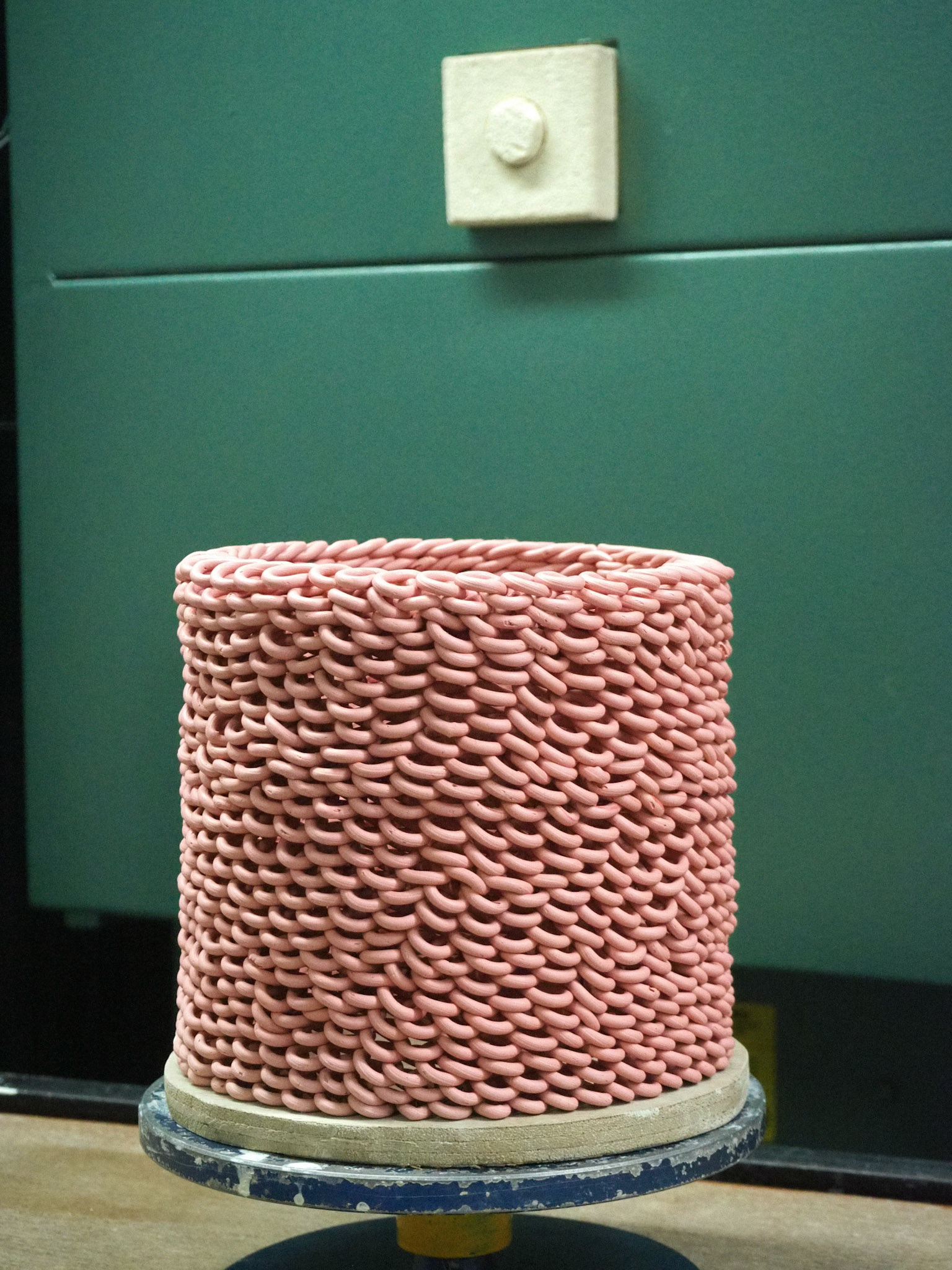
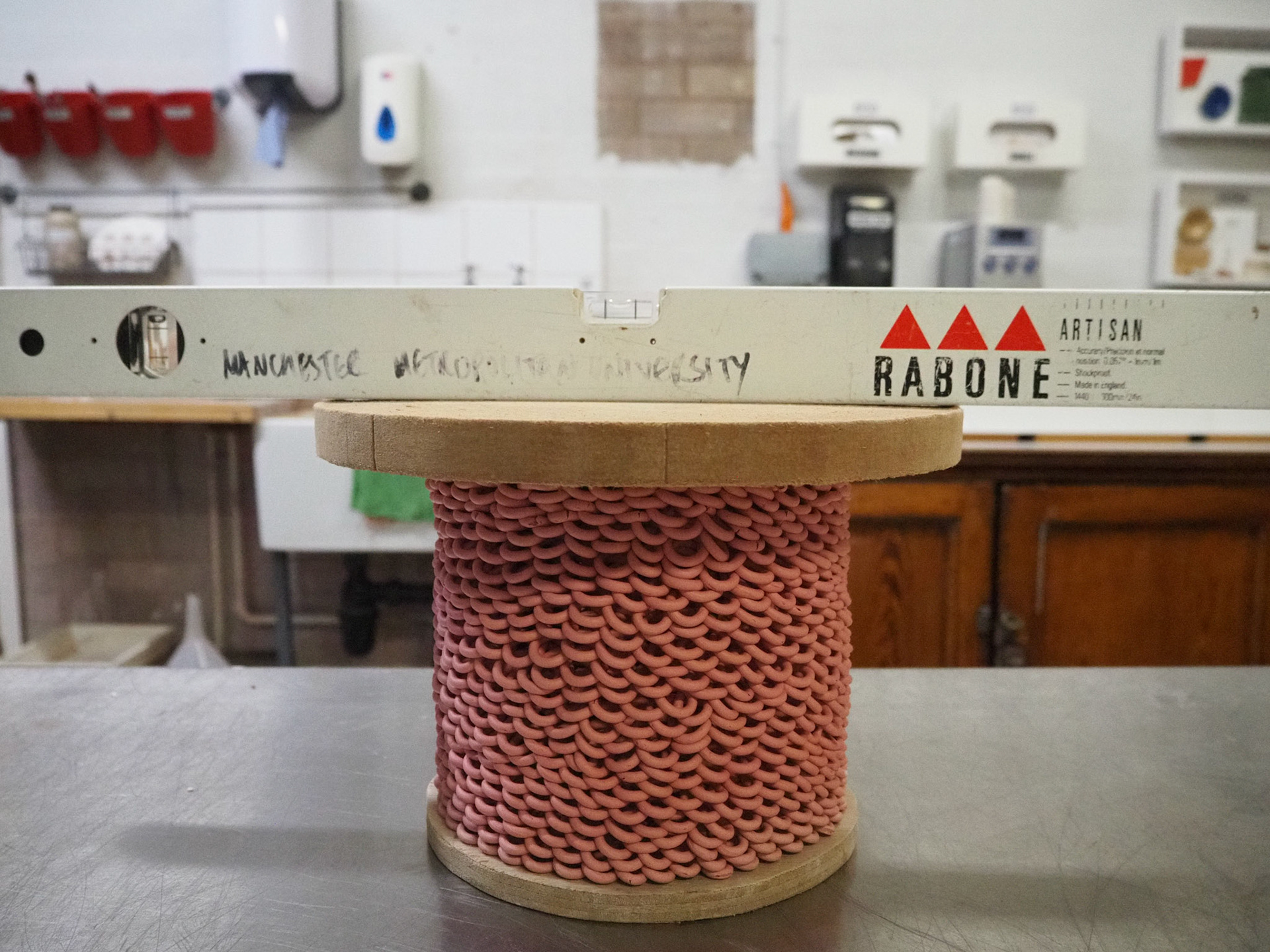

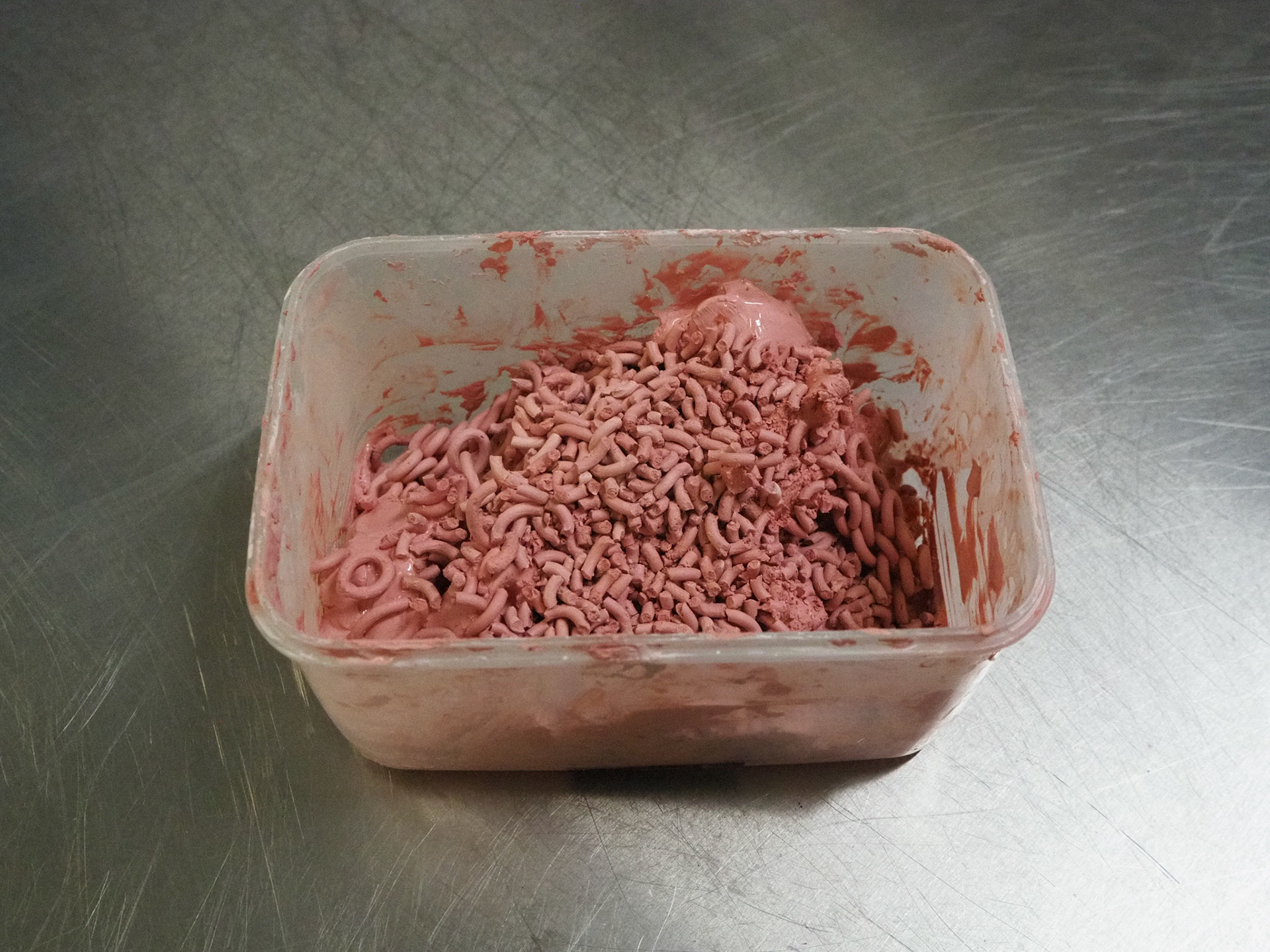
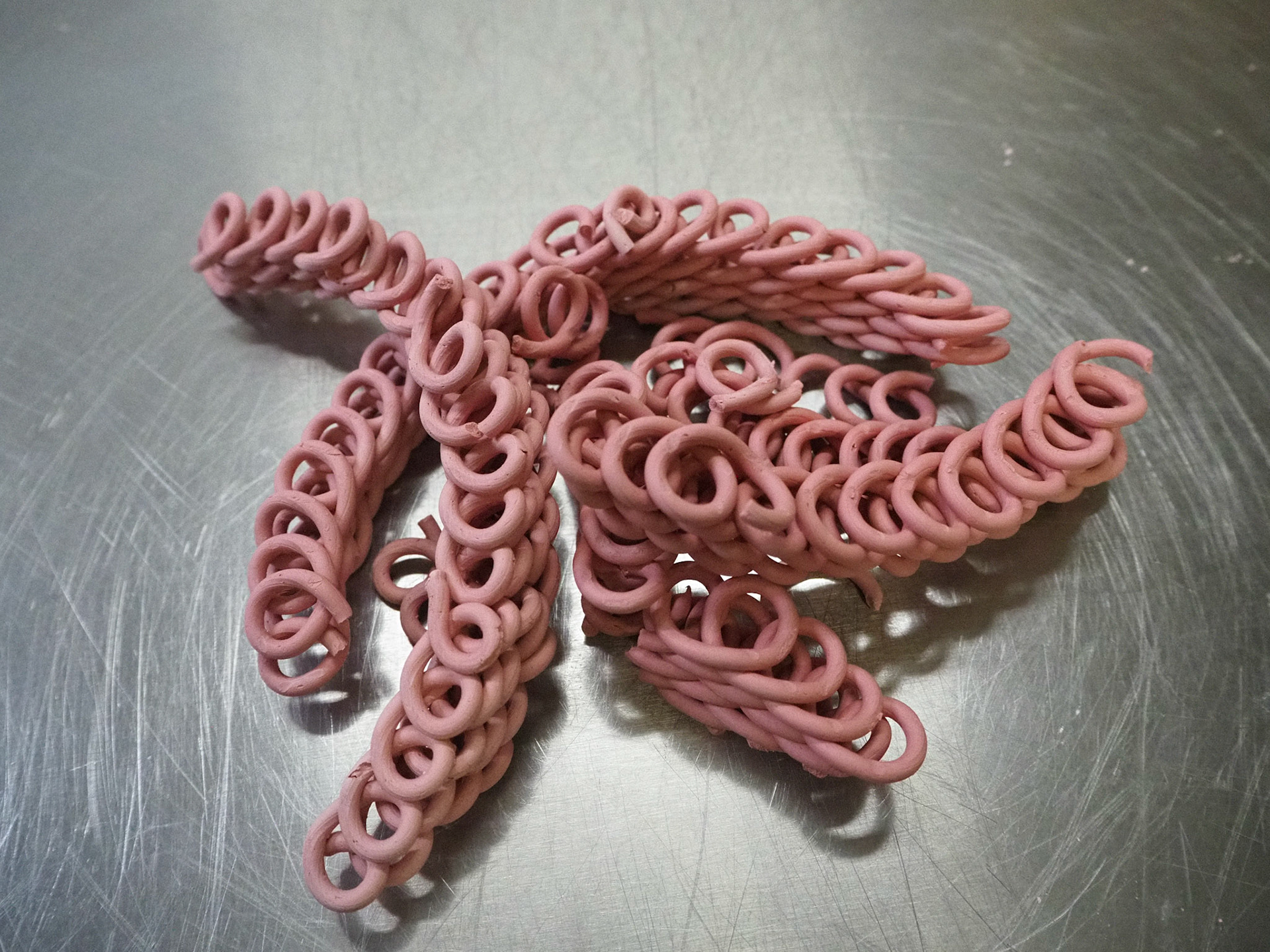
Starting to make full size looped porcelain pieces for a stack. I was trying to make these too perfect, the slip was a little drier than when I've made these in the past so when I pushed down on them to make sure the top was straight, it cracked the pieces. At the time I thought I was doing the right thing because at this point in the year I don't want to waste materials on something that isn't perfect, but in a tutorial, Geoff reminded me that the ceramic pieces represent playfulness and chaos, to be juxtaposed with more precise carved glass. This showed me that had been too precious about the work I was producing and in some way I was losing the point behind it.
PLEASE CONTINUE ONTO 'STUDIO JOURNAL PART 2'